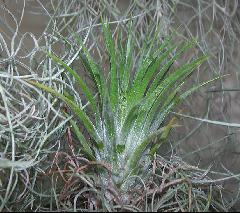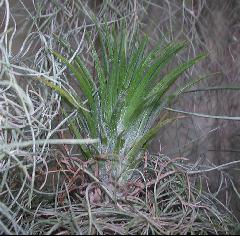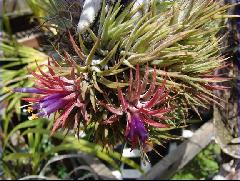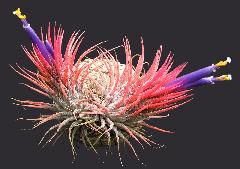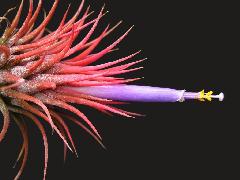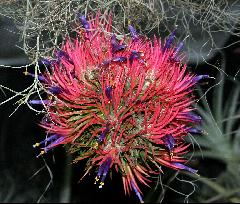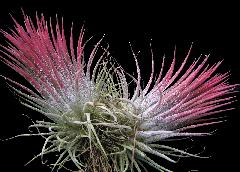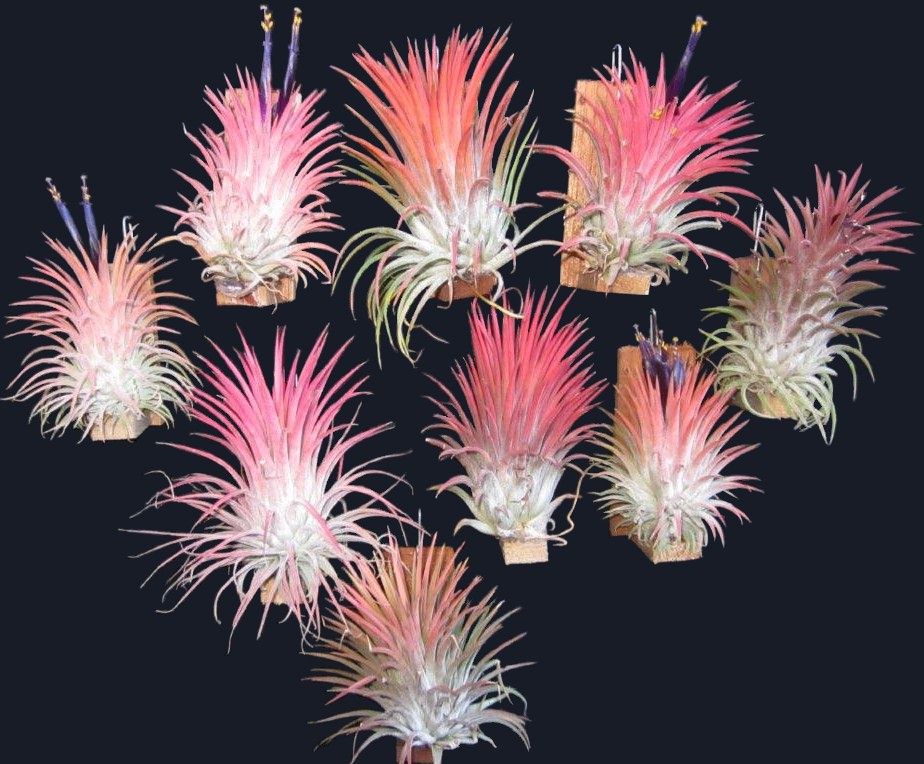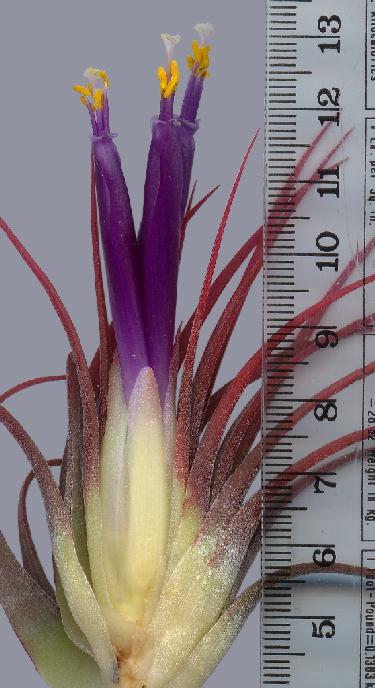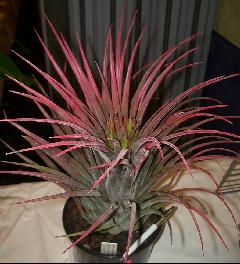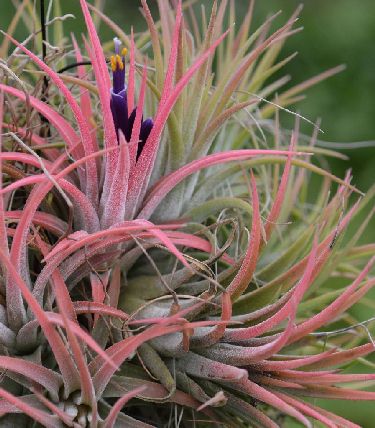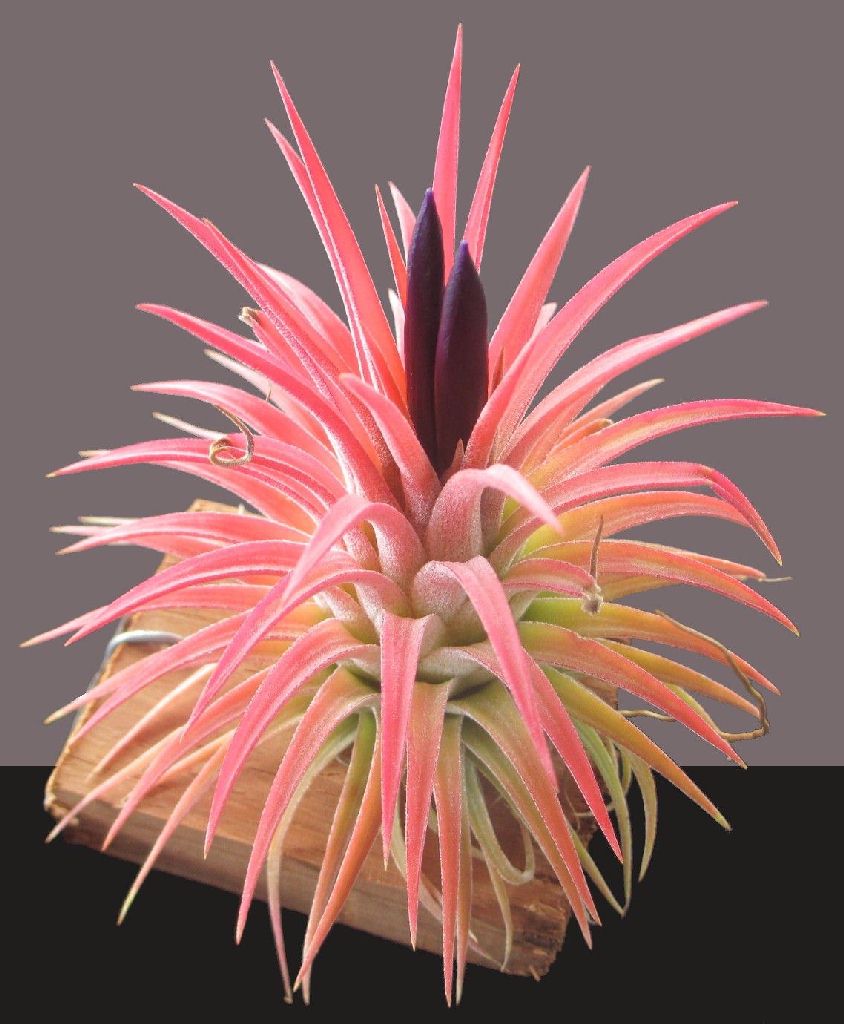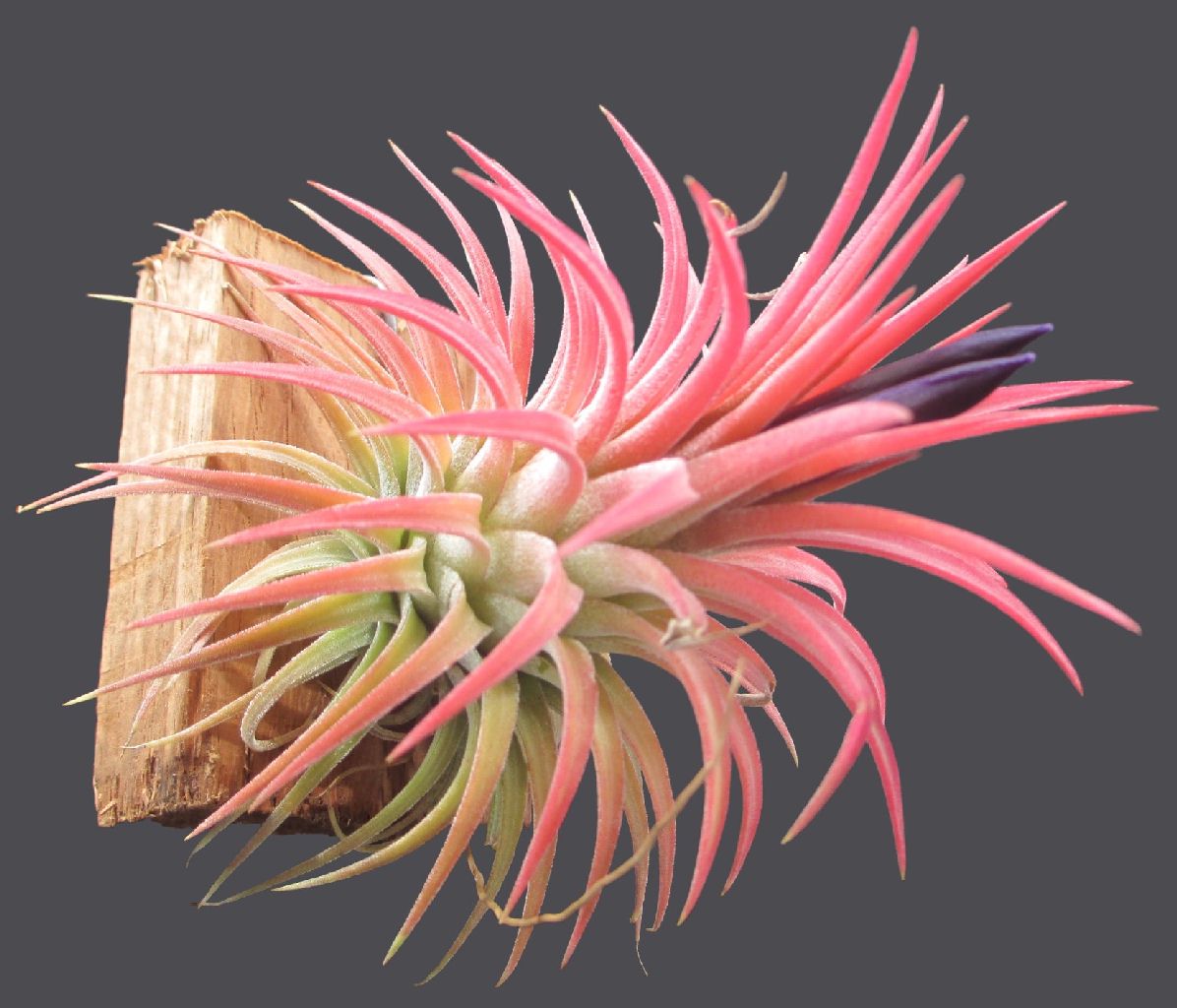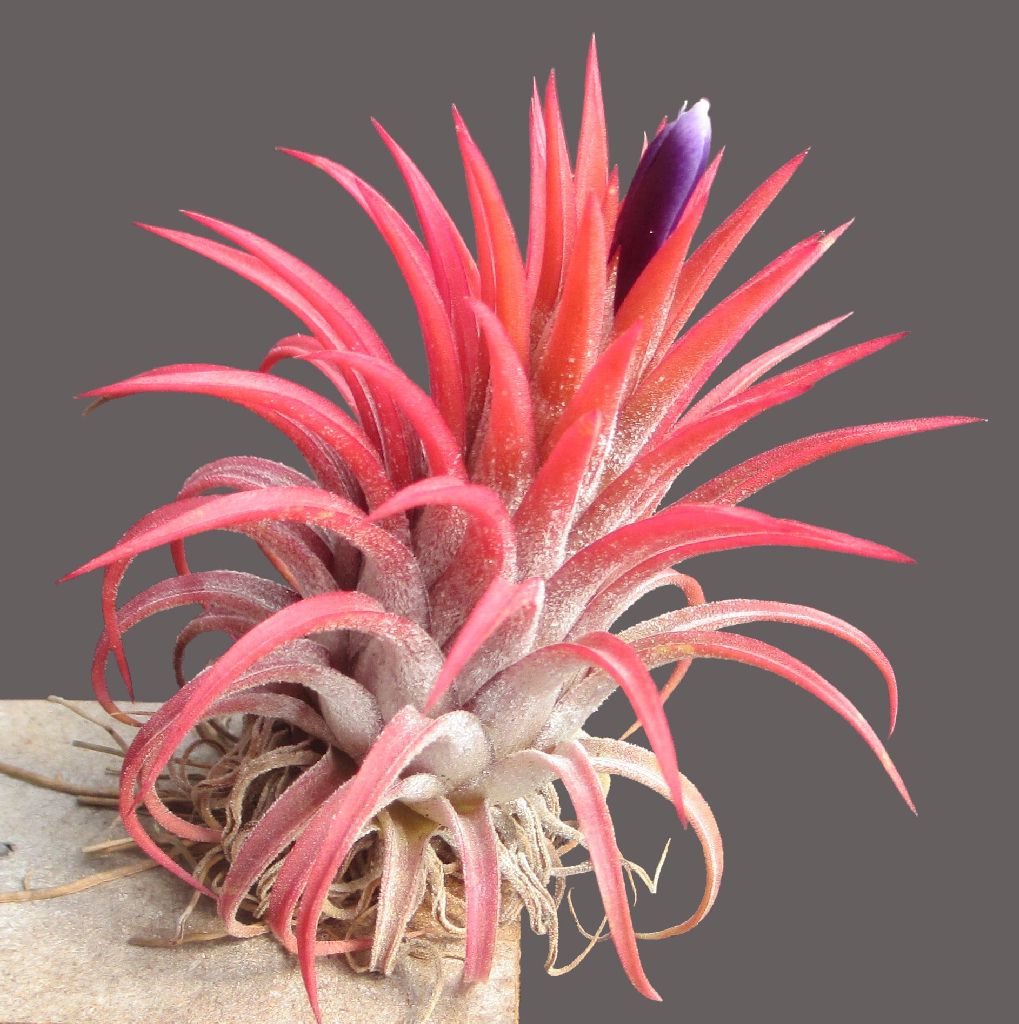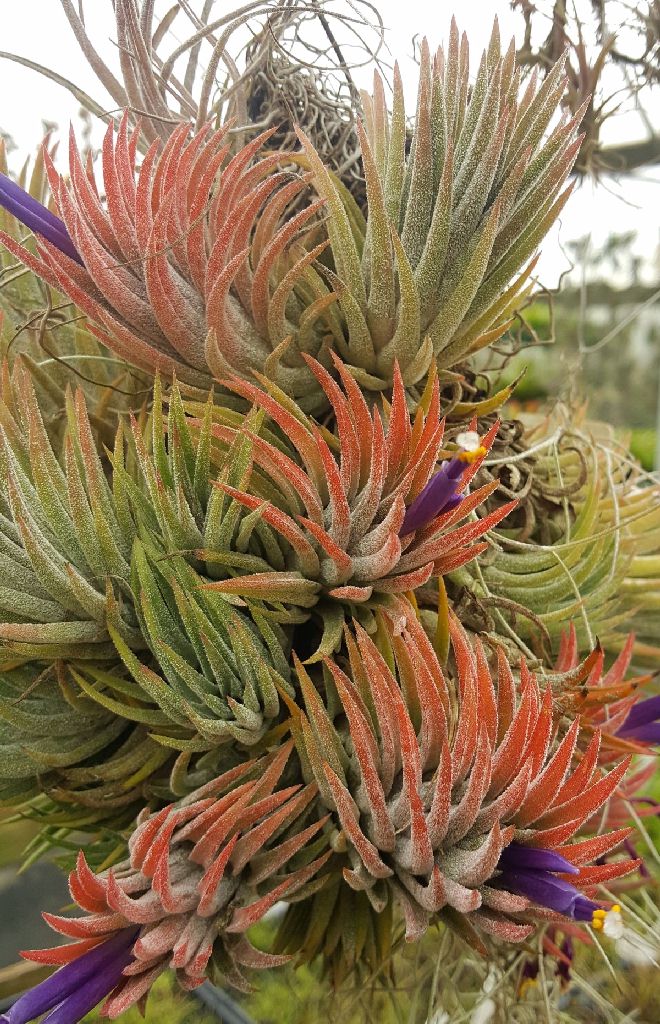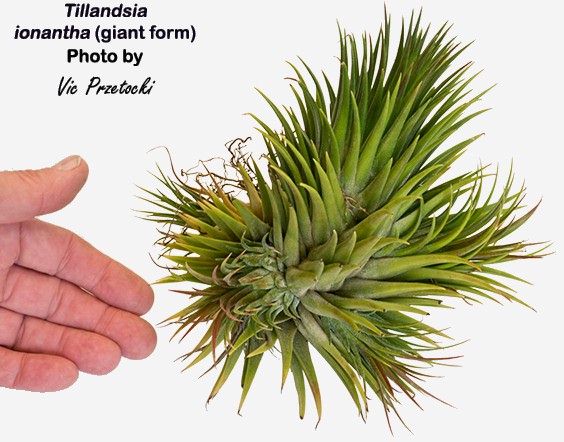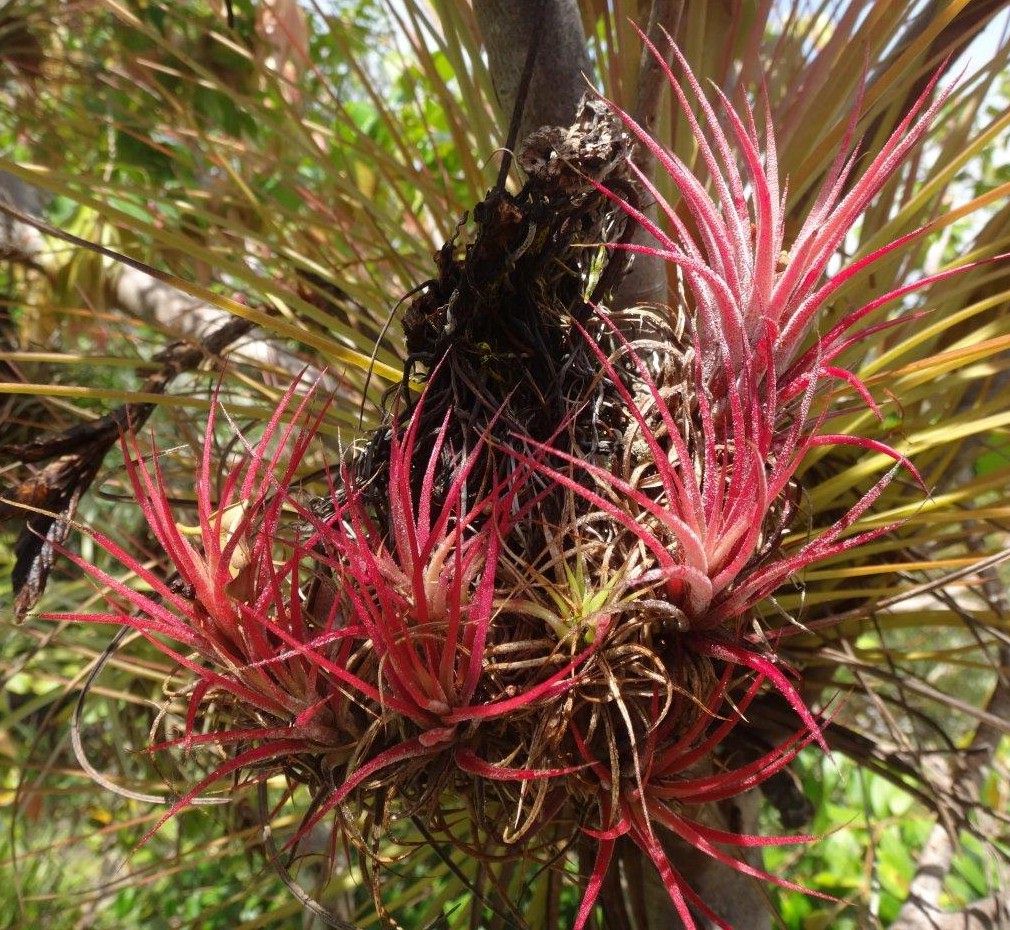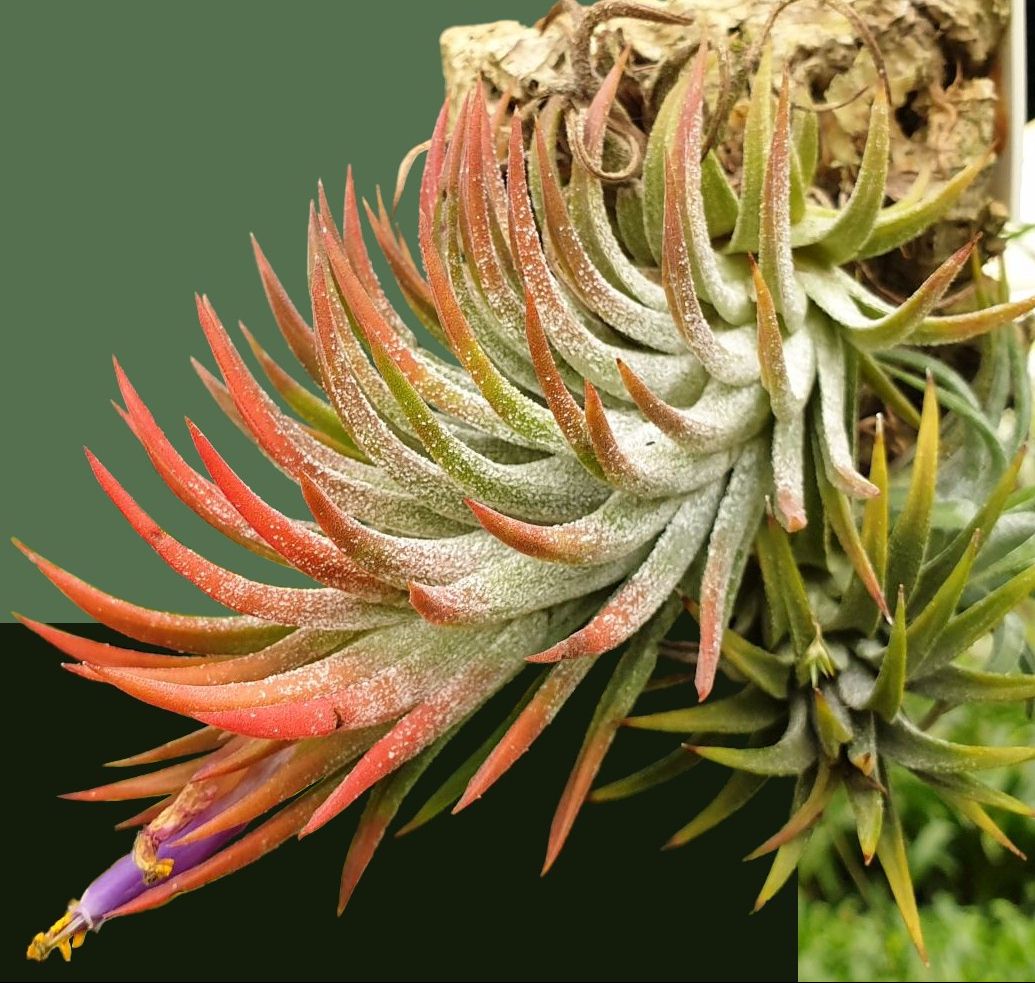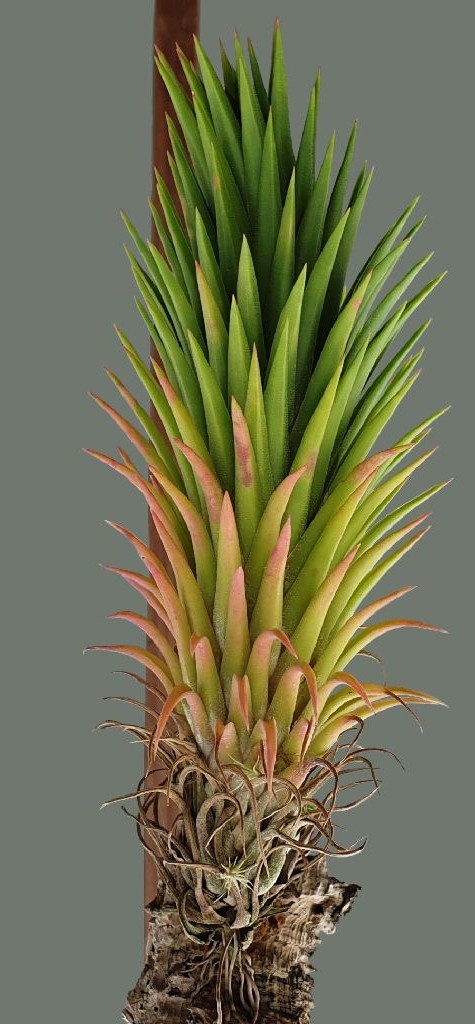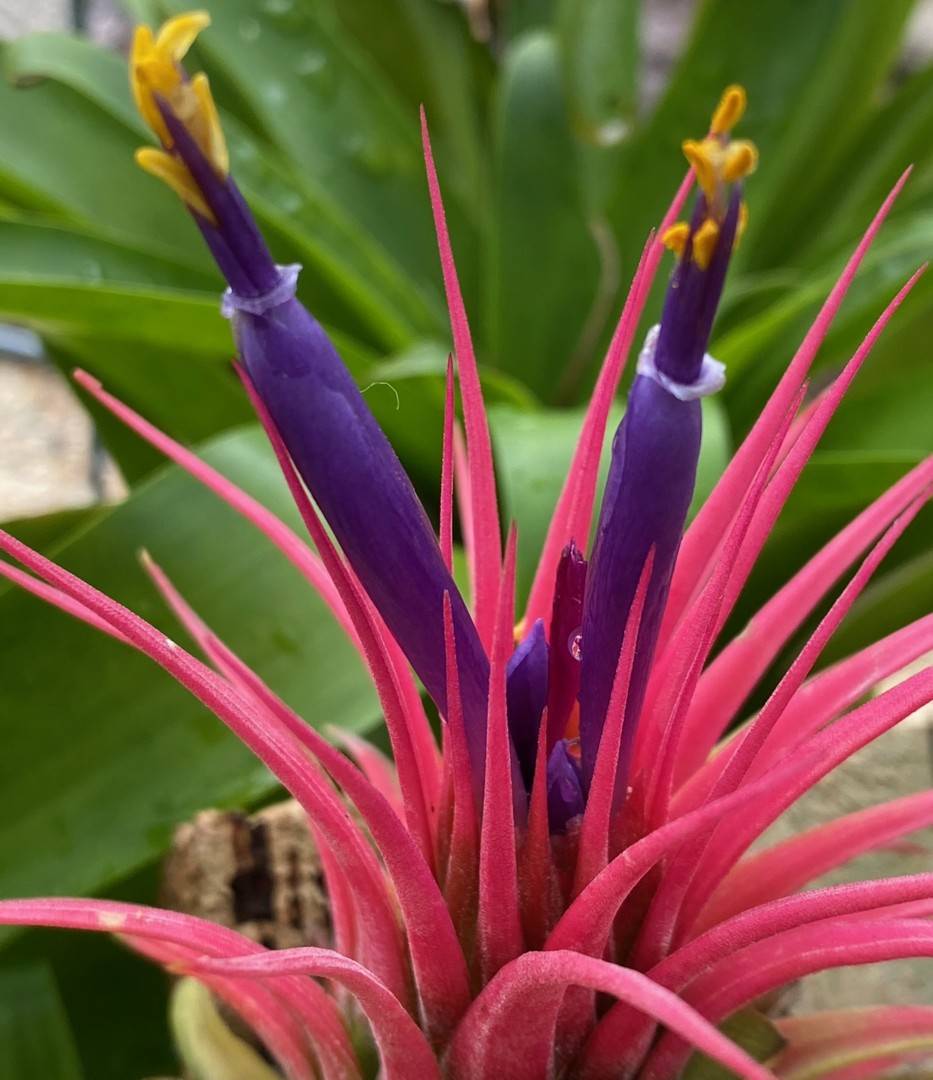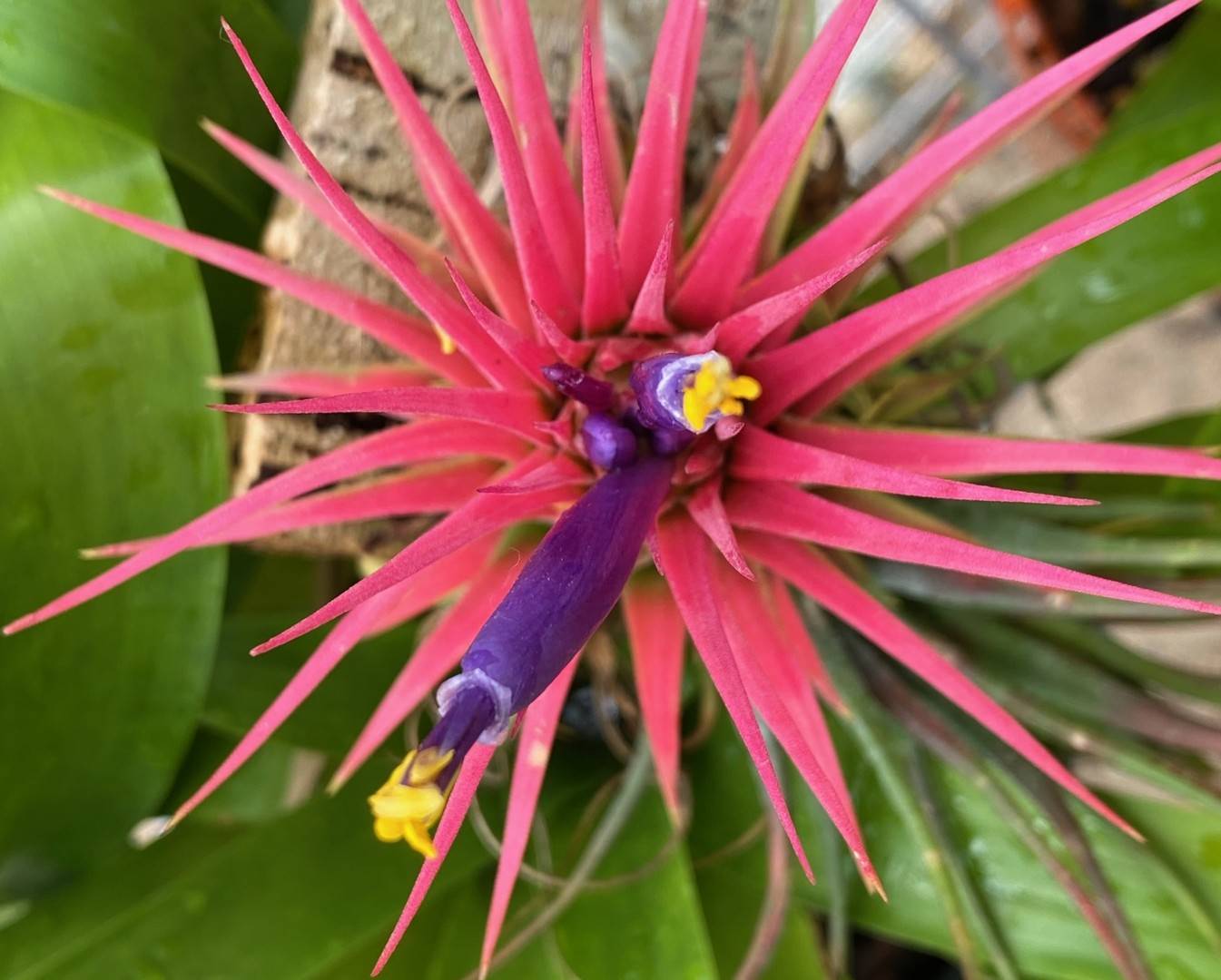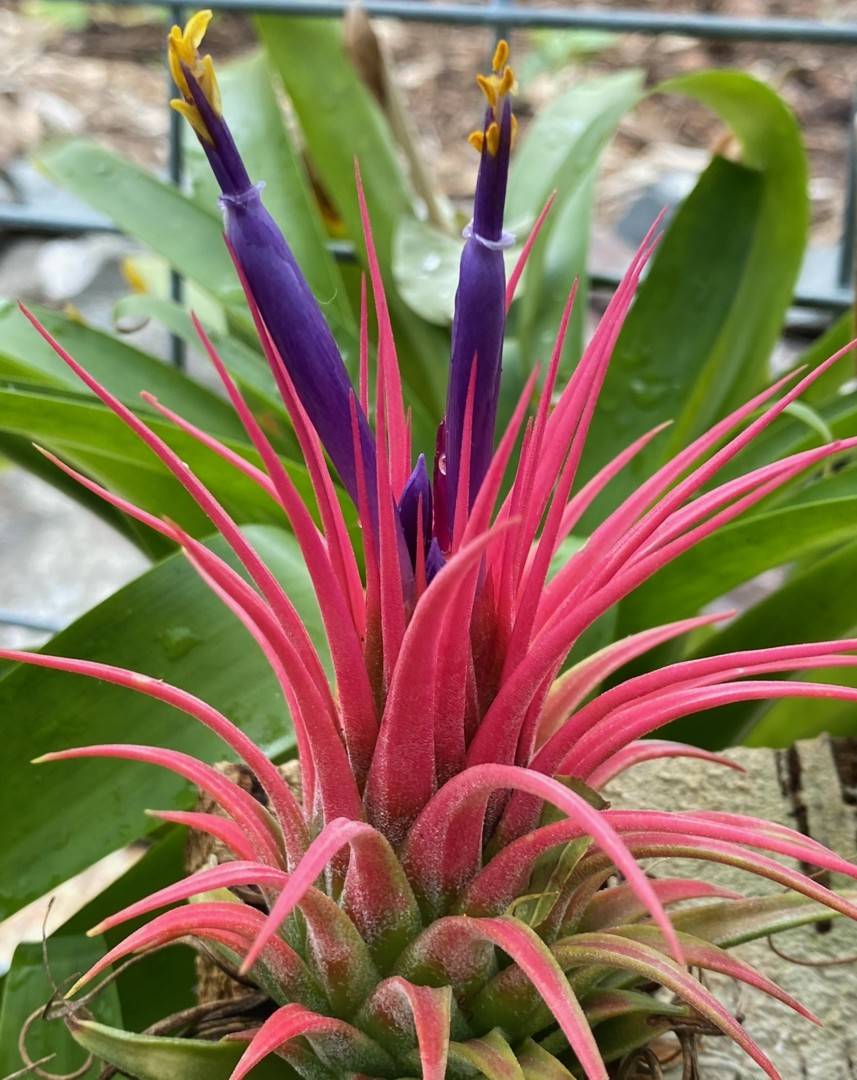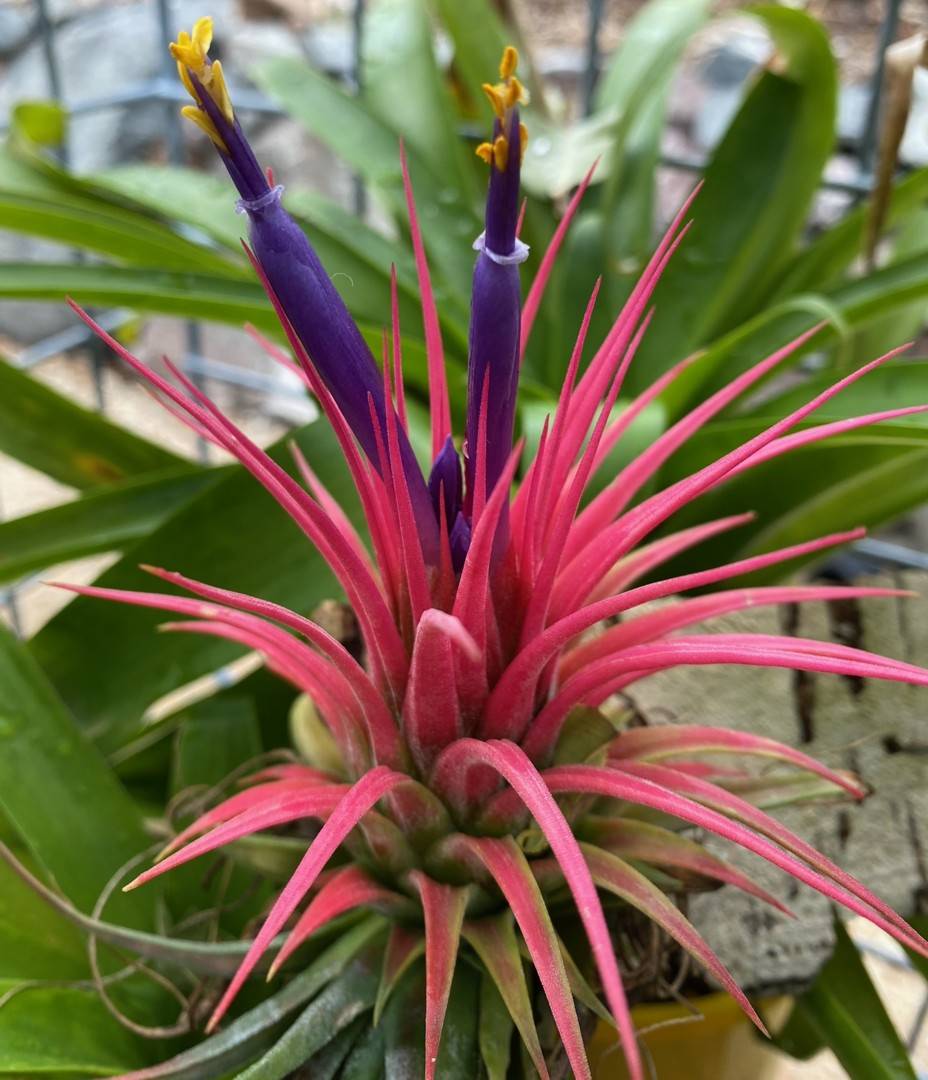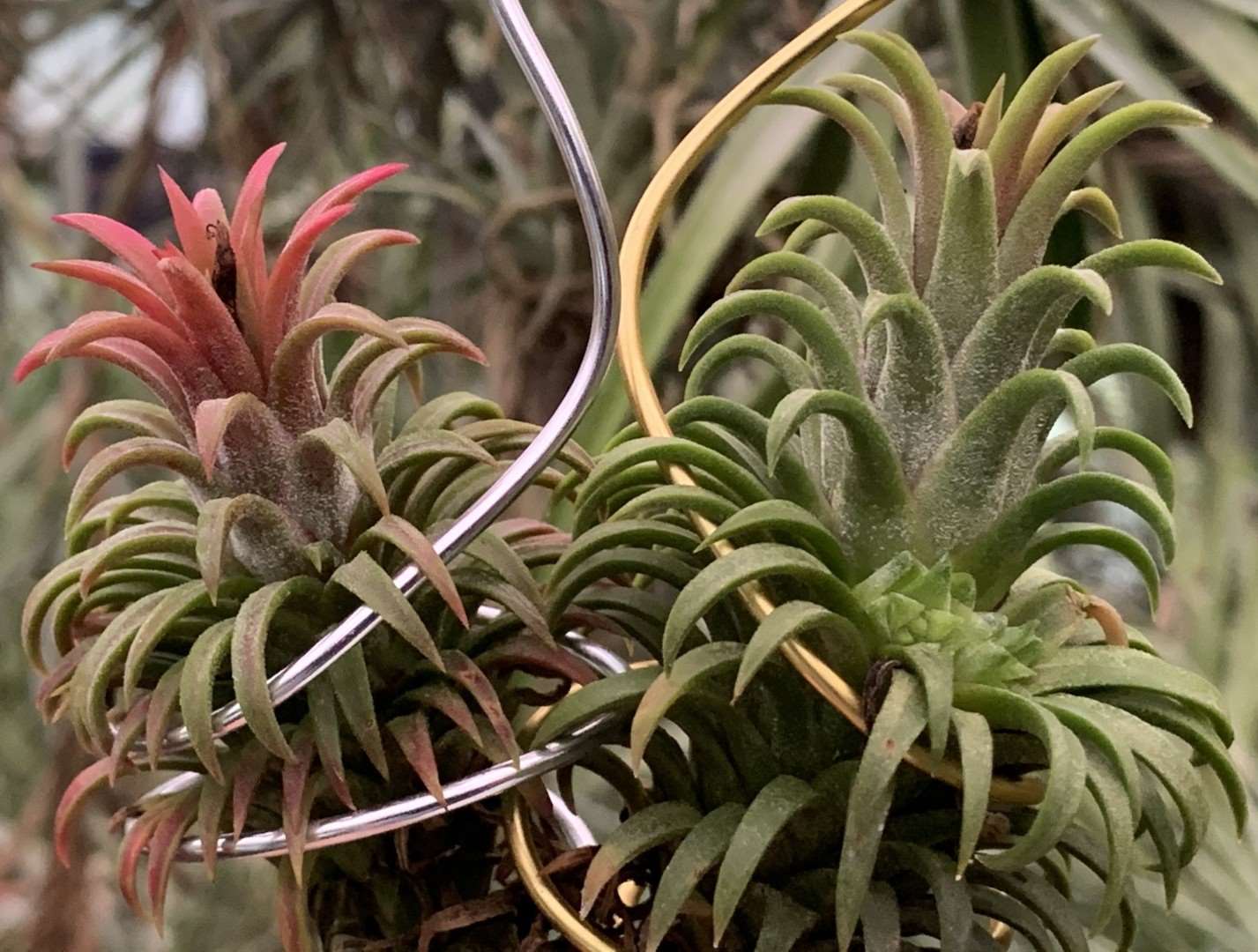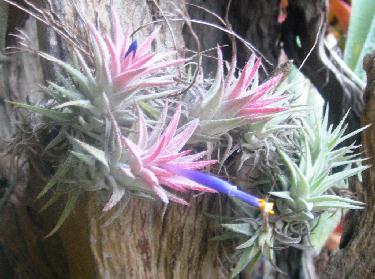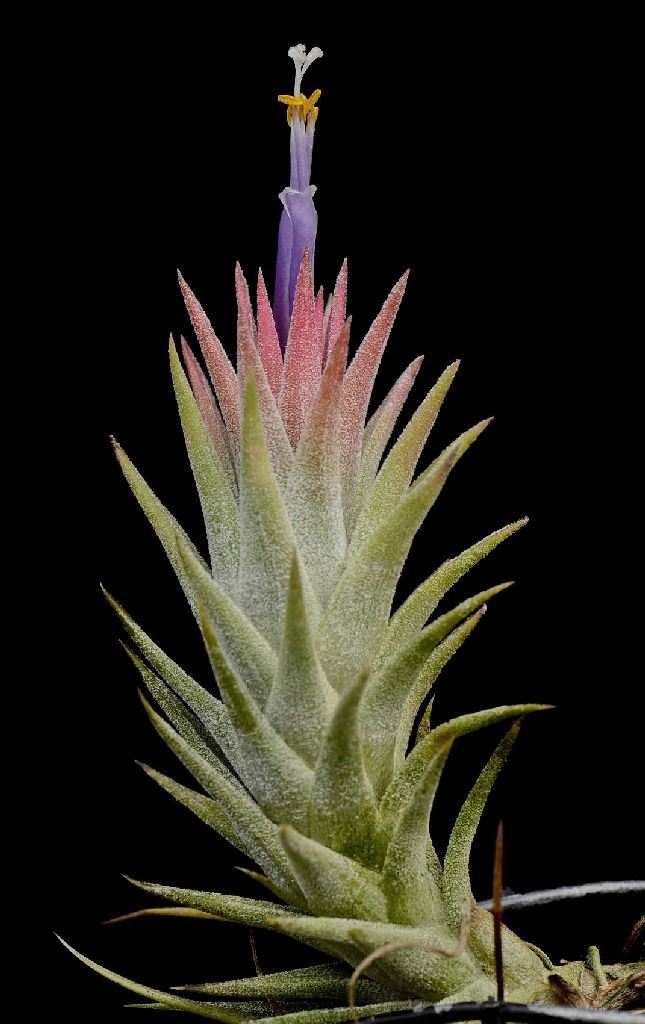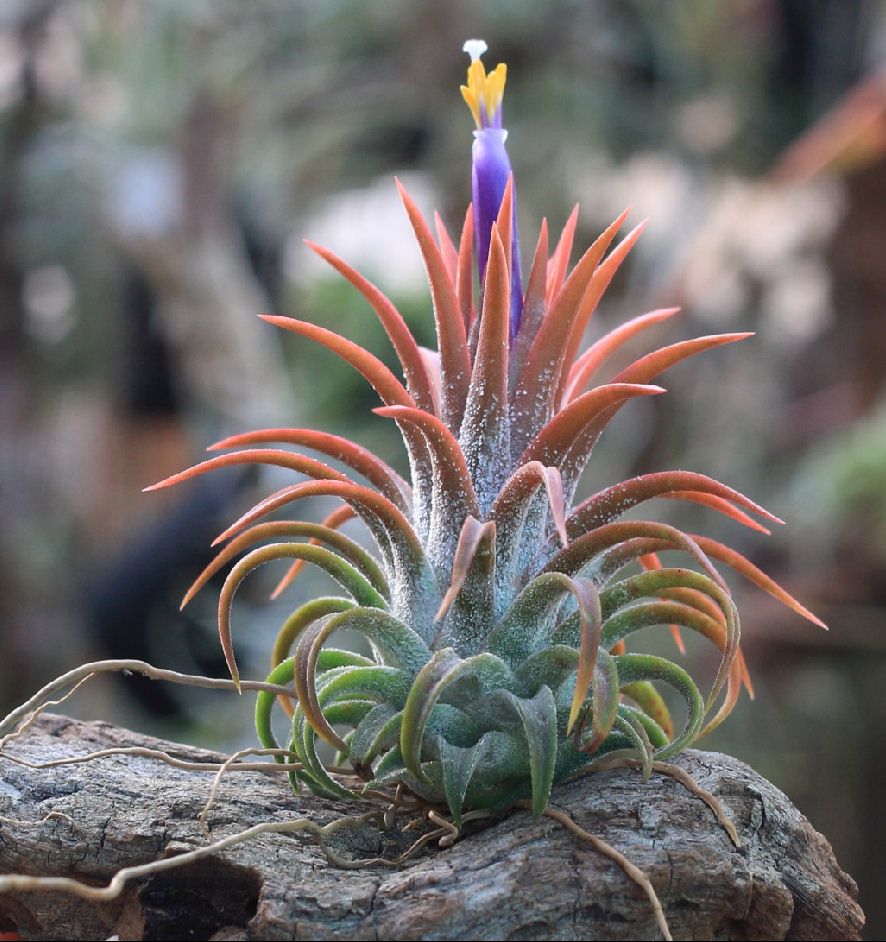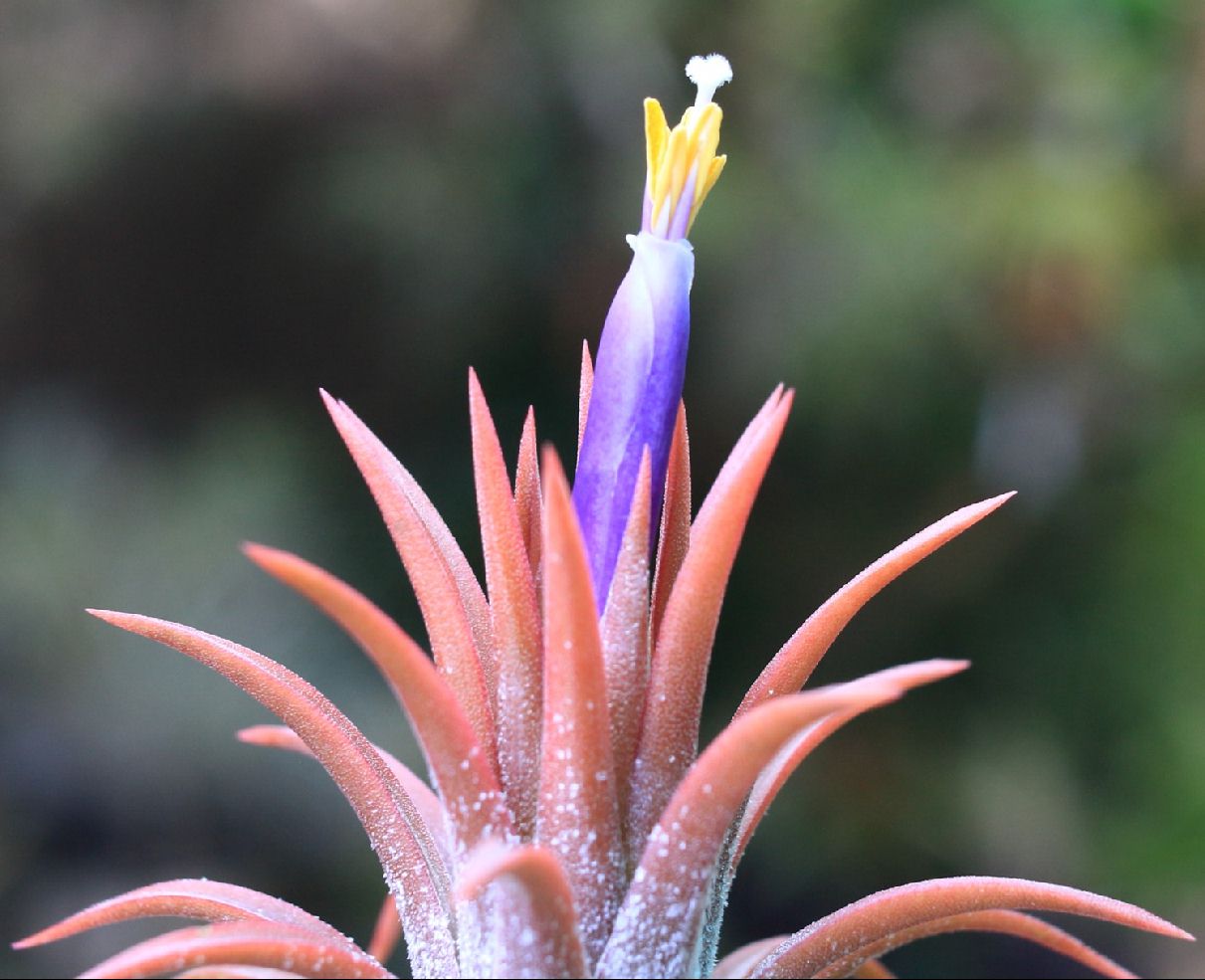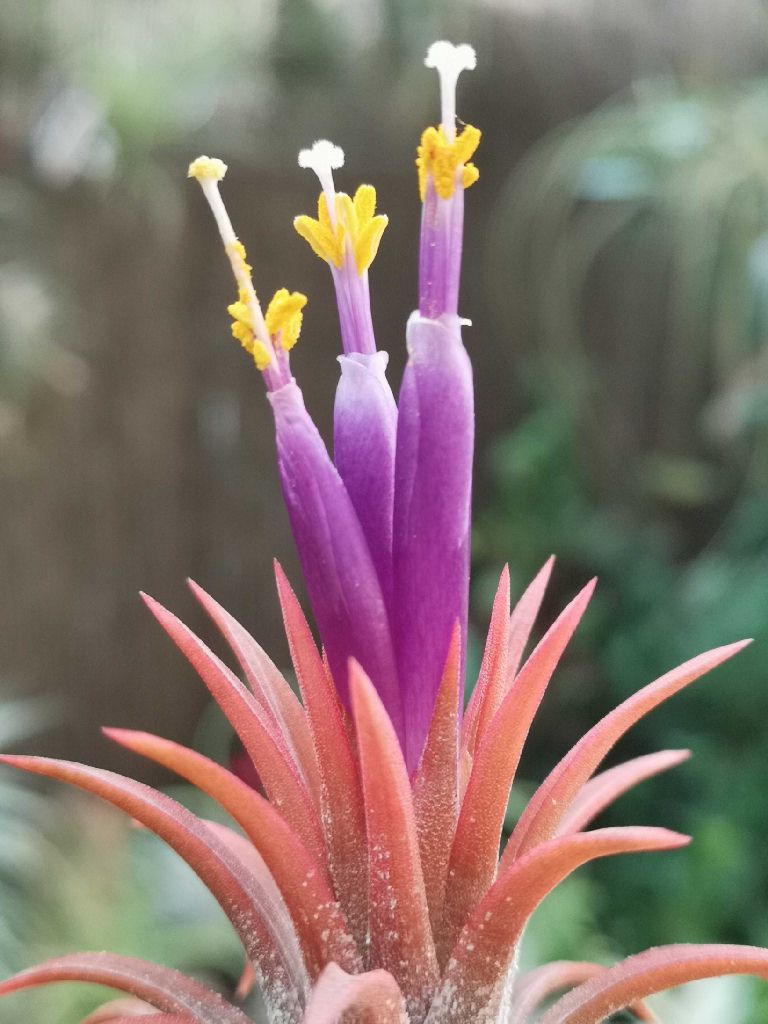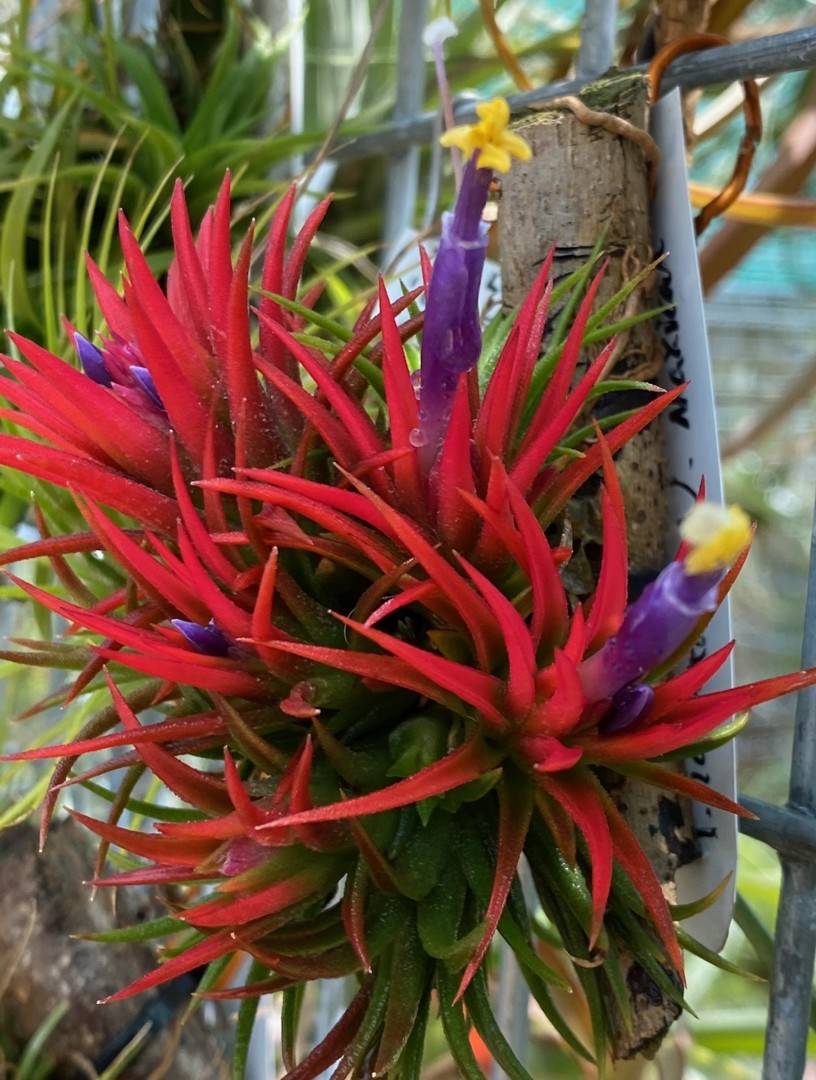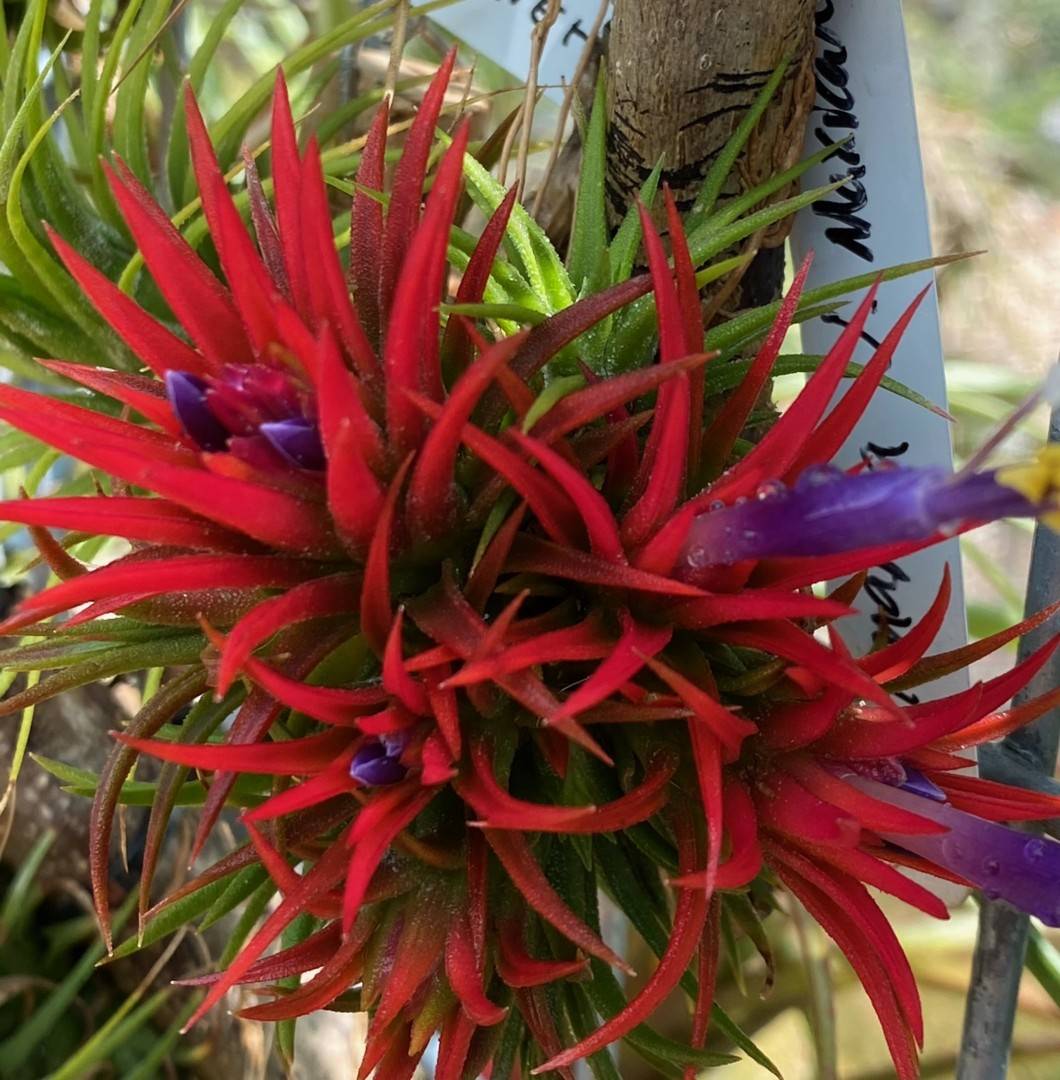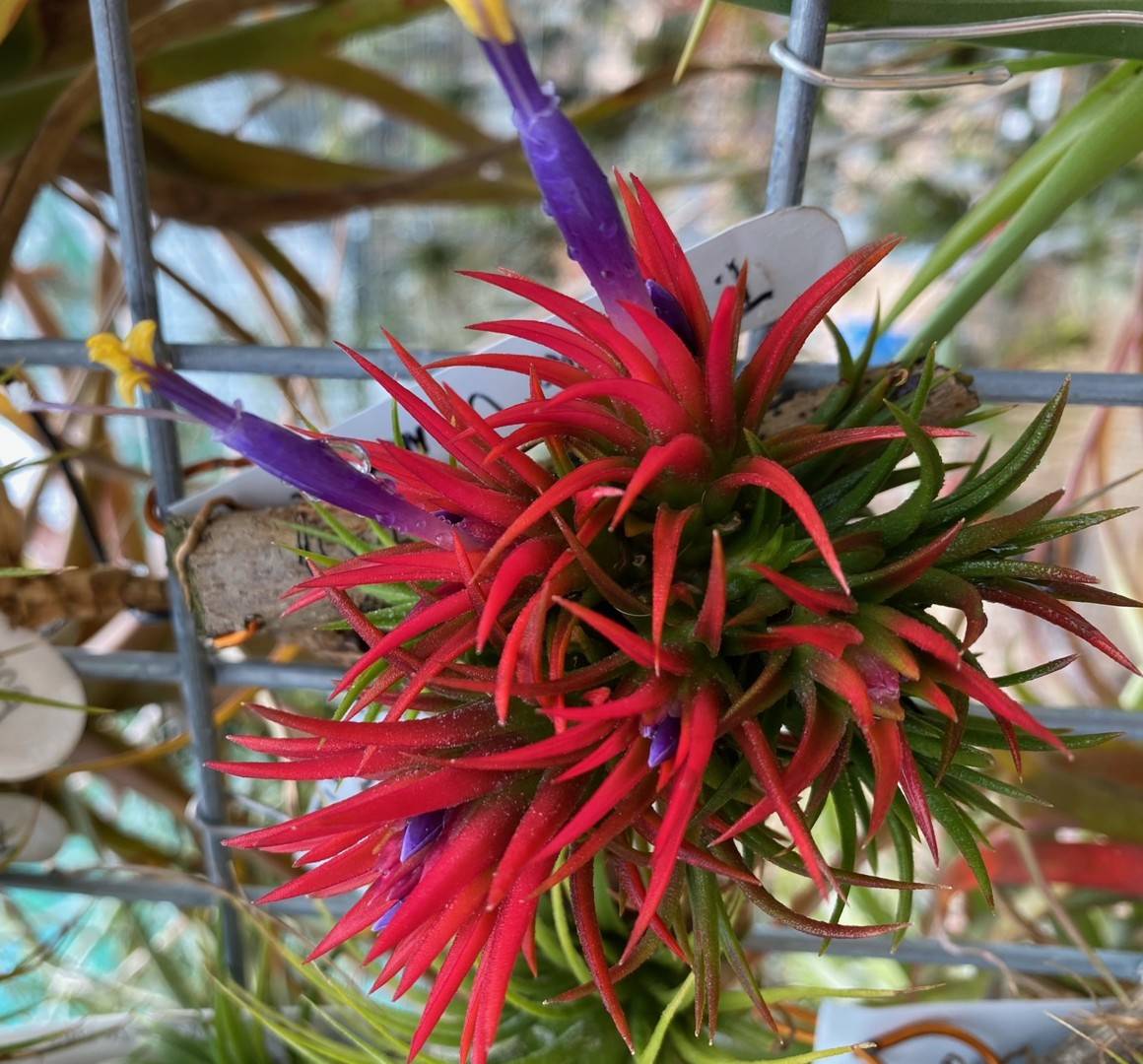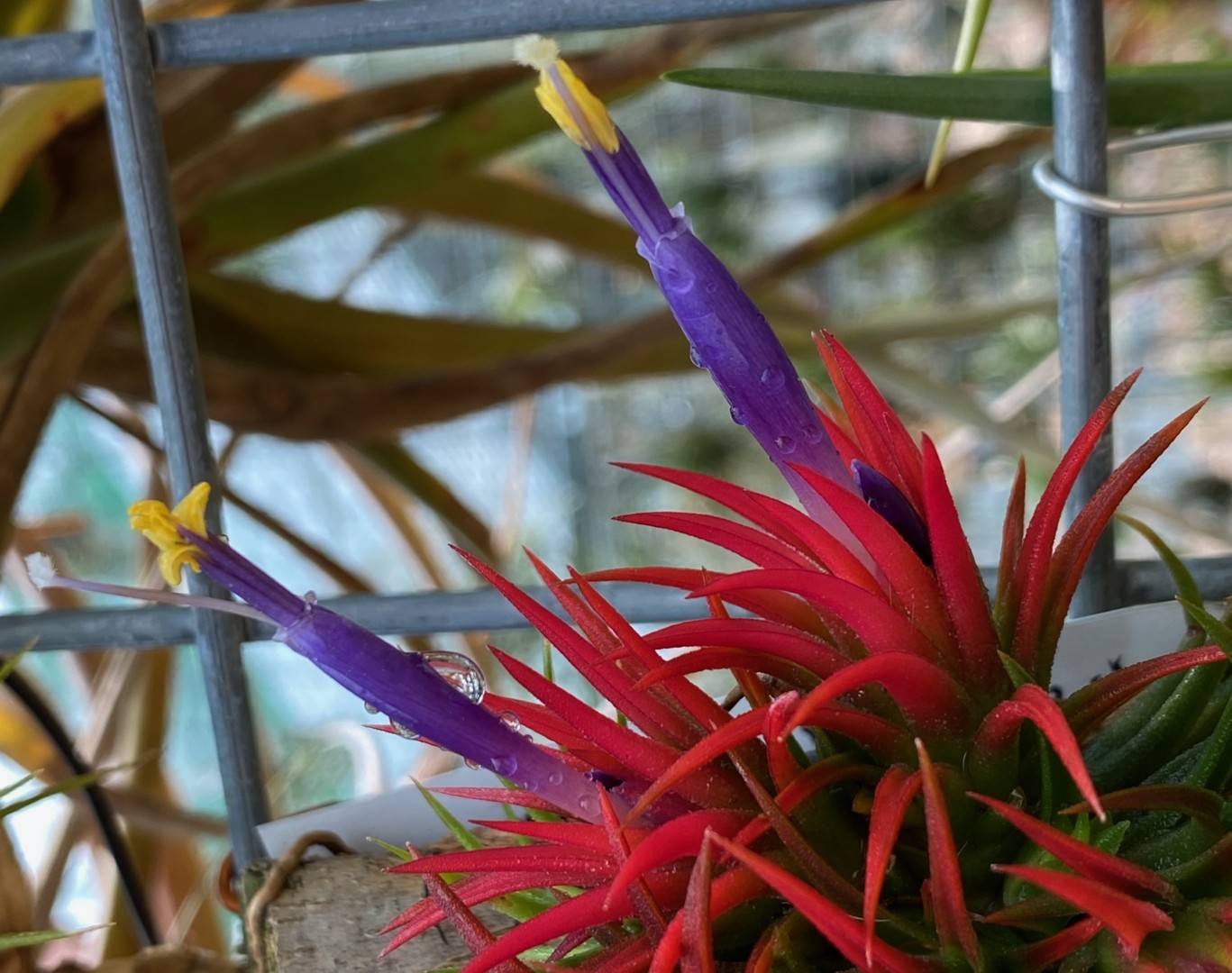
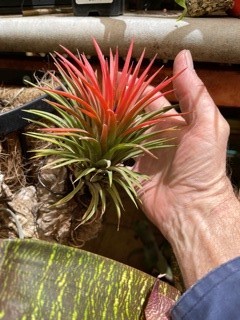

Ed: See also unregistered cultivar? / hybrid? temporarily called 'Red Dragon'.
Tillandsia ionantha var. van_hyningii
NOTE: this ionantha variety has now been raised to species status. See "T. vanhyningii" entry.
Peter Tristram ... "The variety 'van hyningii' isn't often posted and is slow growing plant. I gather it is not easy to find in Mexico now as the canyon where it grew is now a dam. Pam might know more. I have a few forms and Chris and I found a monster in Colombia at Gruber’s."
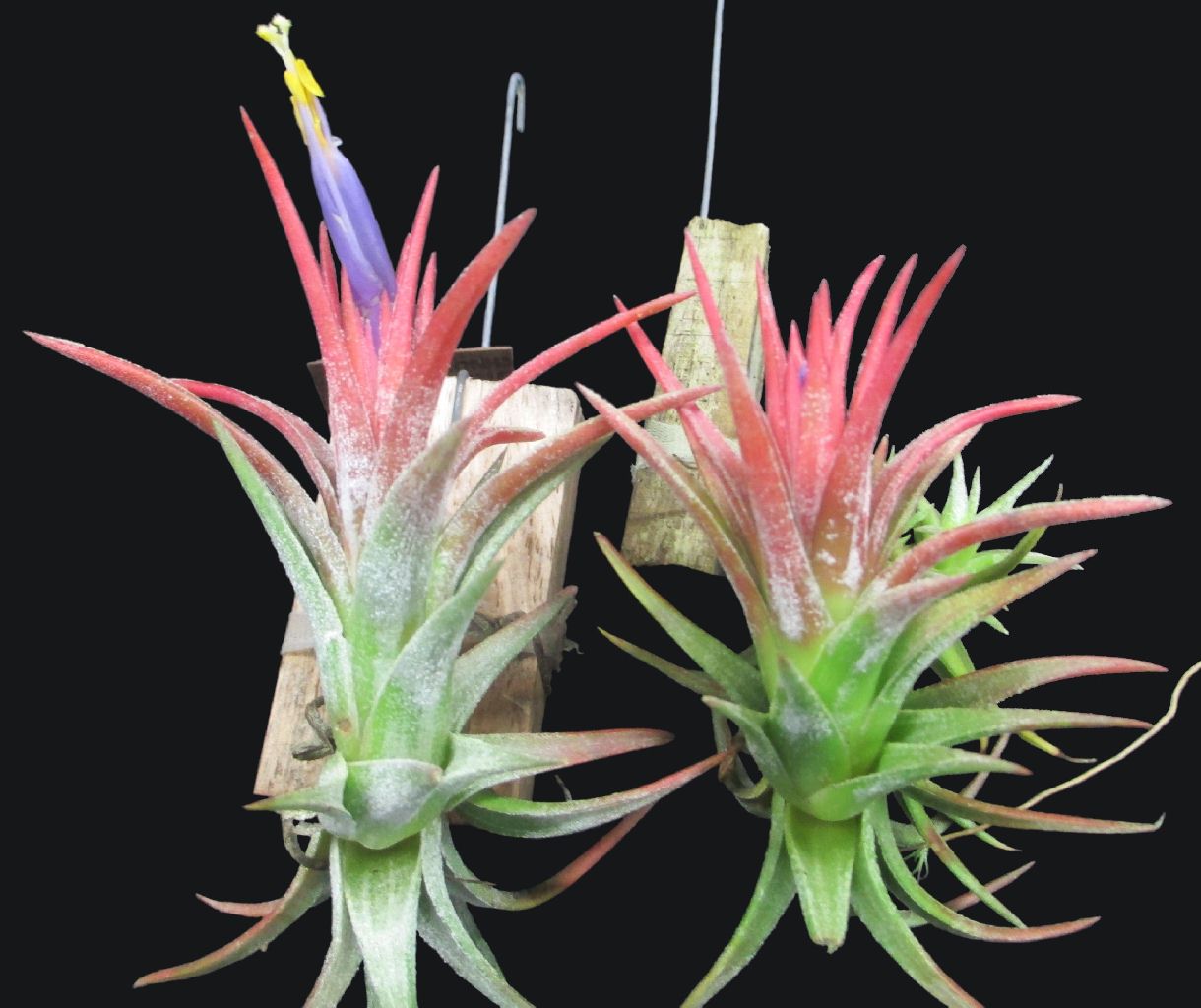
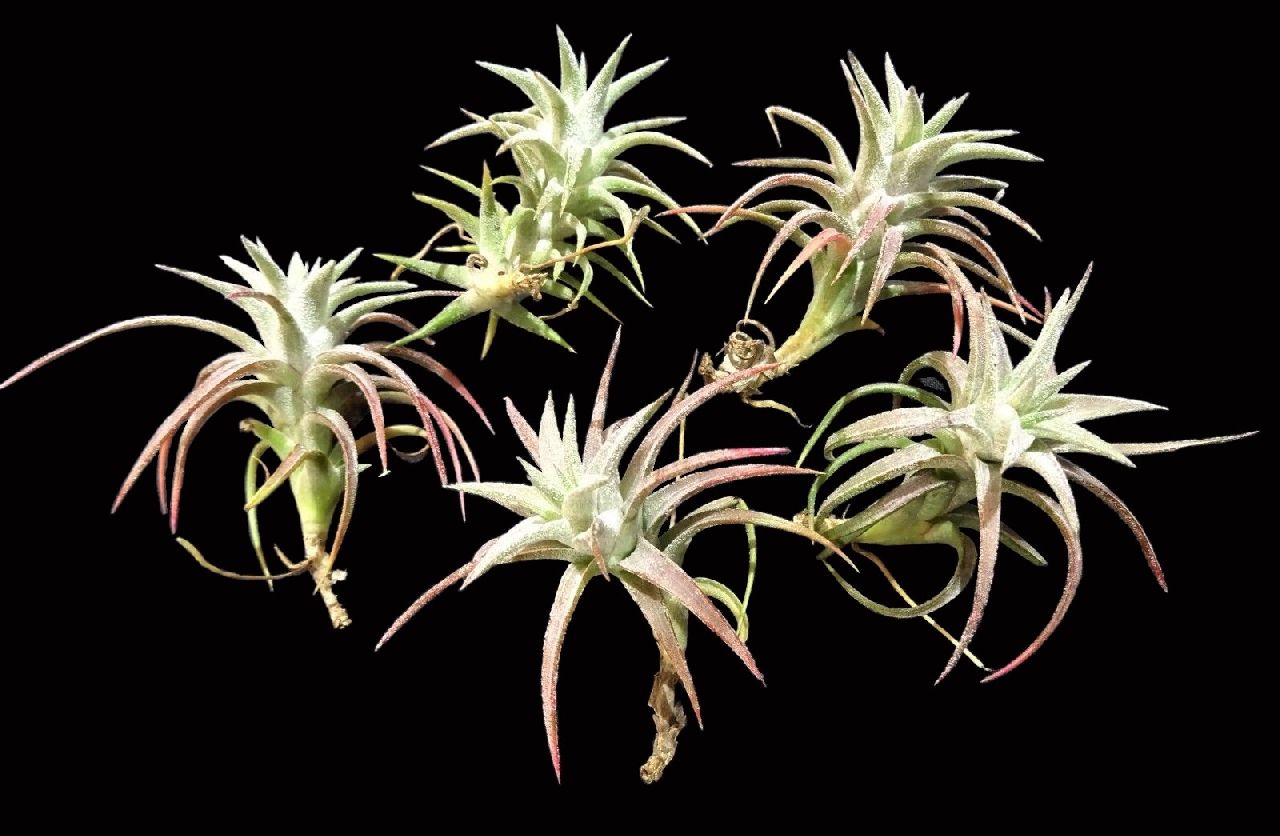
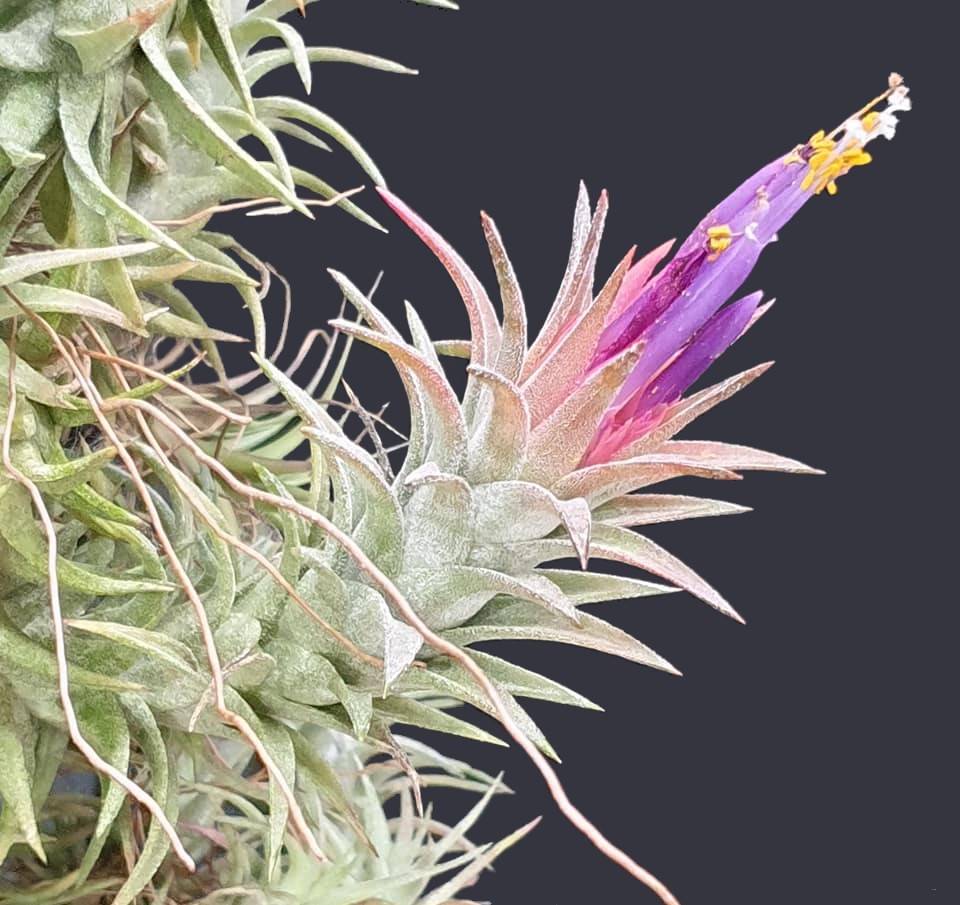
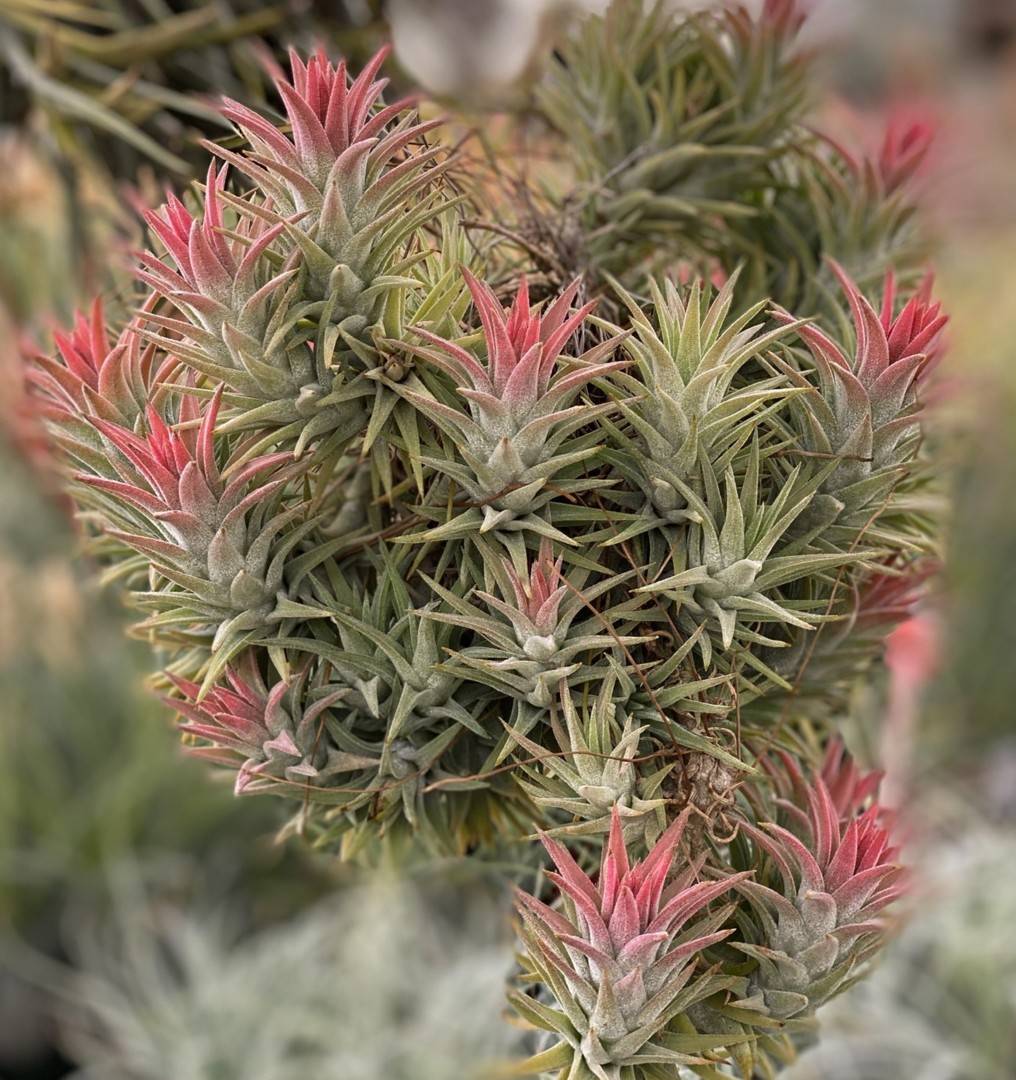
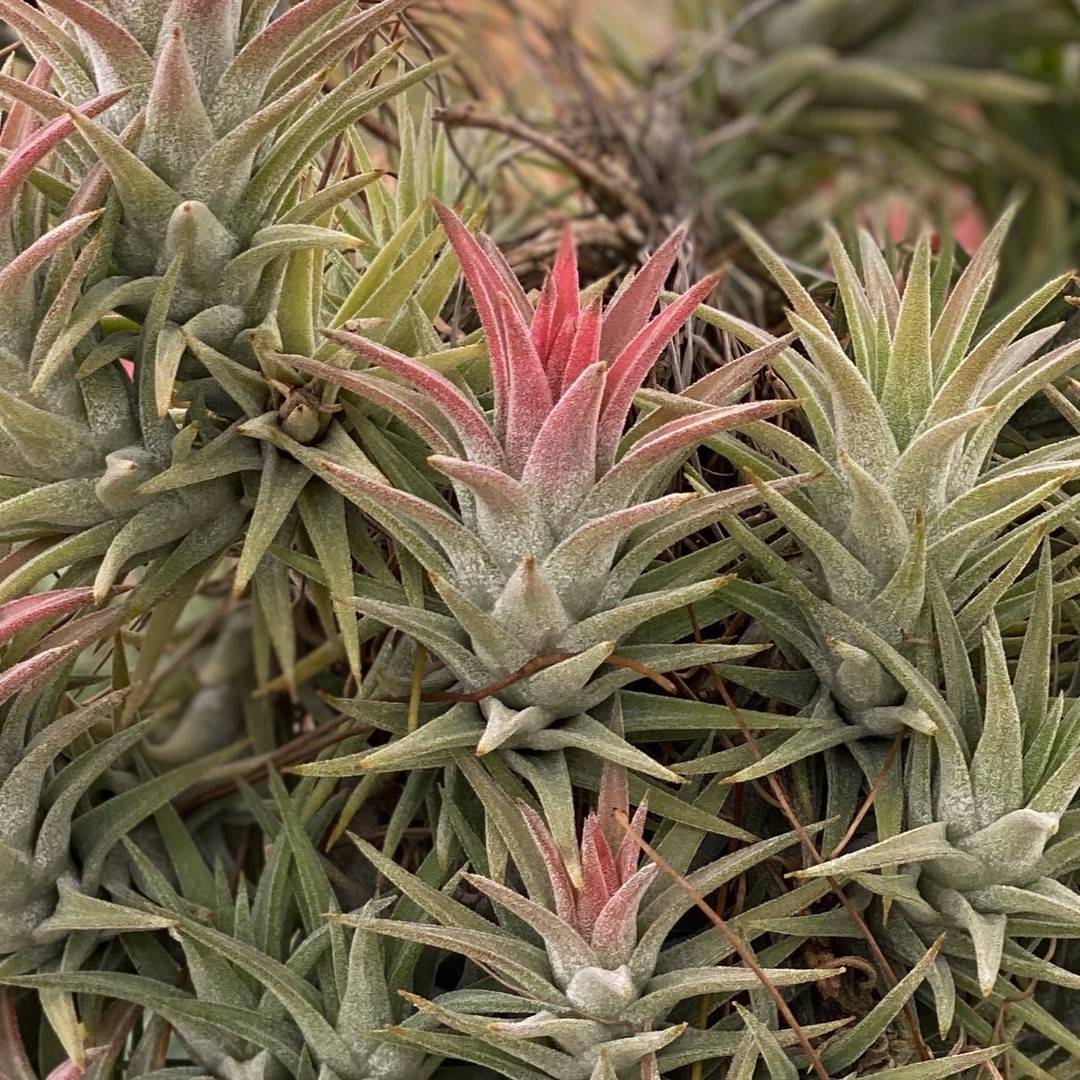
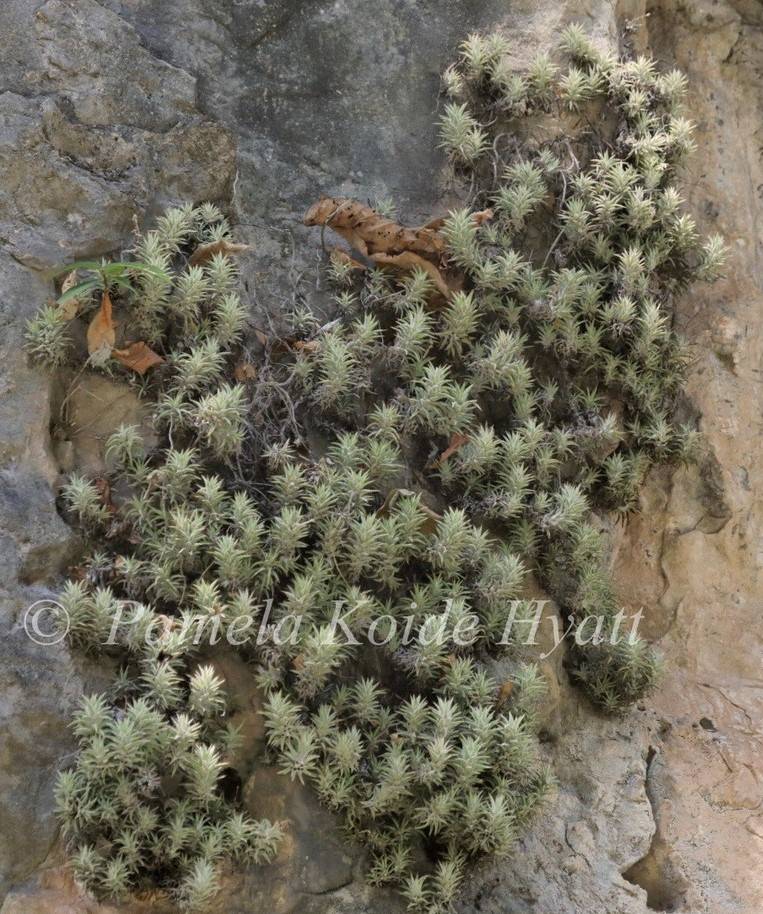
Someone got promoted to SPECIES status! Tillandsia ionantha var. van hyningii was first described by Mulford B. Foster in 1957. Foster discovered the now Tillandsia vanhyningii (pronounced van-HIGH-nin-gee-eye) in the Sumidero Canyon of Chiapas, Mexico, growing along steep limestone cliffs in large formations. At first glance, Foster was sure it was a new species, but after blooming and observing the plant, it appeared the have the same composition as many other forms of ionantha. In a paper last year, Carlos Beutelspacher and Roberto Garcia-Martinez argued for the reclassification of Tillandsia ionantha var. van hyningii by elevating it to species status due to the caluescent growth habit not observed in other varietals or cultivars of ionantha. The name change was accepted, and so Tillandsia vanhyningii is born. The name, which can be difficult to say, honors long time Tillandsia collectors, the Van Hynings."
Tillandsia ionantha var. zebrina
See also T. 'Zebrina'.
In 1994 this was included into the definition of T. ionantha - from a Botanists view it fits within the range of ionantha.
Shortly after, it was included in the Cultivar Registry as T. 'Zebrina' by Derek Butcher
as there were sufficient horticultural differences to warrant "keeping the name alive".
Now listed as T. 'Zebrina' a cv. of ionantha.
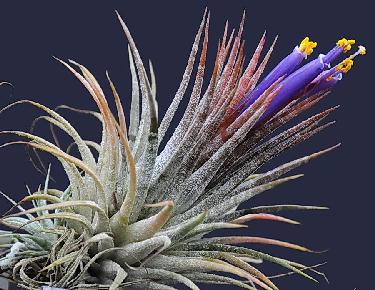
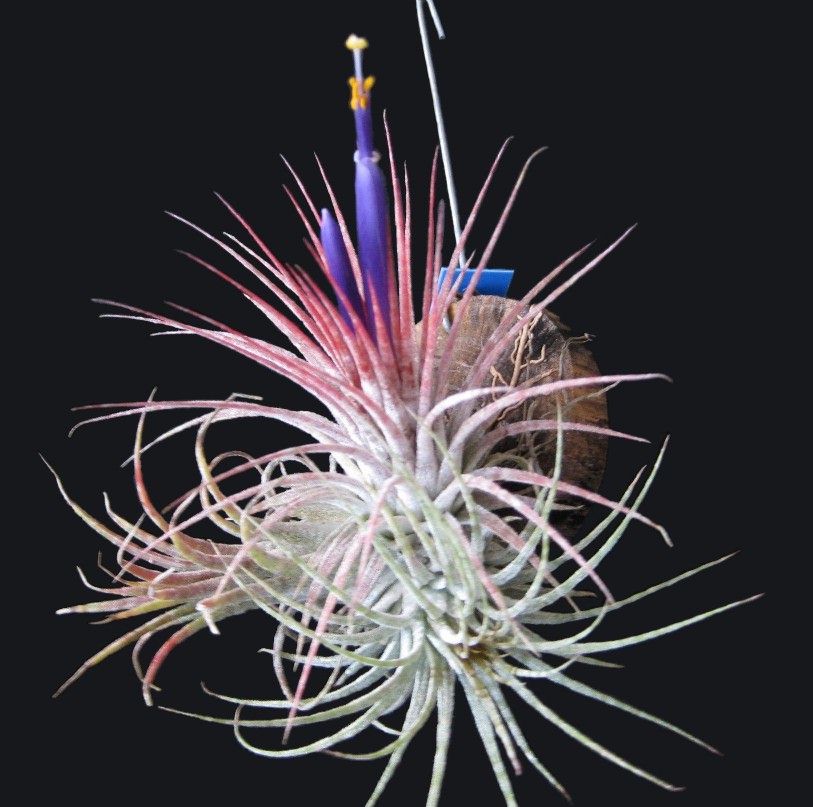
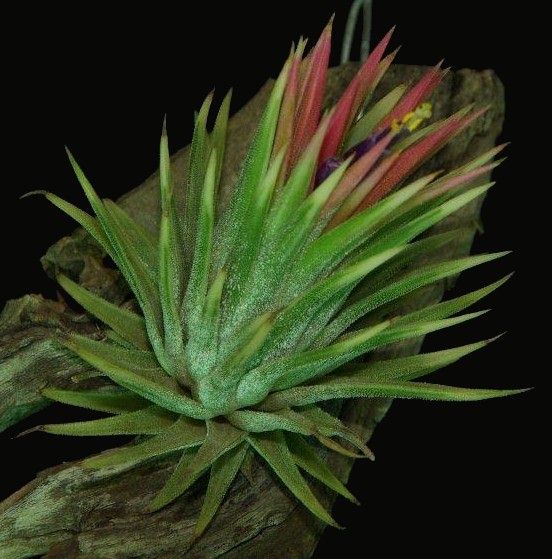
Tillandsia ionantha var. stricta - was 'Rosita'.
From BCR ... "'Rosita' = cv. of ionantha, Isley?, <1987
(Mexico - always red - to 10 cm. diameter) - Koide said, "The plant referred to as 'Rosita' is the same as Tillandsia ionantha 'Stricta' - This variation is endemic to one location in Oaxaca, Mexico. Red throughout its entire life and has very narrow, nearly filiform leaf blades". Now known as ionantha v. stricta (Koide)."
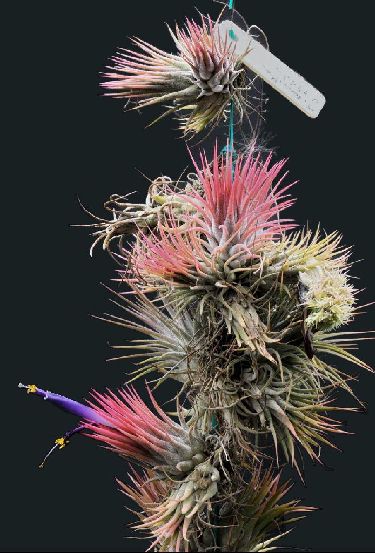
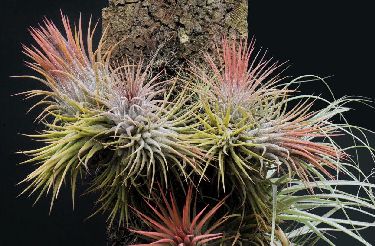
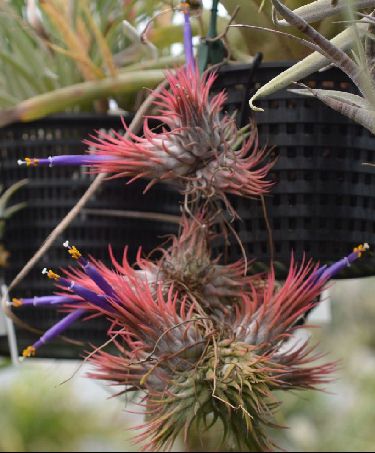
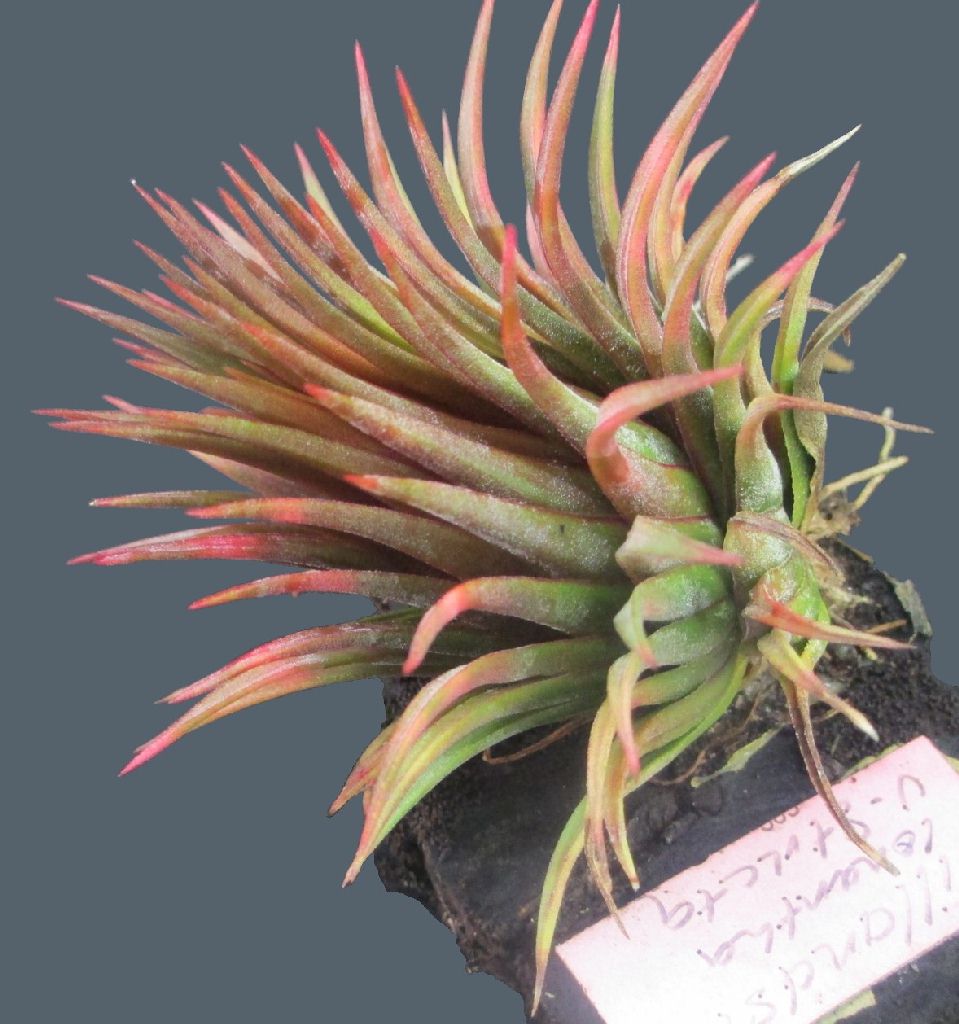
Great plants anyway - never have too many! Too many ionantha forms to name them all!"
(Ed. - Note Pamela’s BSI Journal article of 1993, it says that the then proposed T. ionantha var stricta was created to apply to the previously named T. ionantha Rosita.)
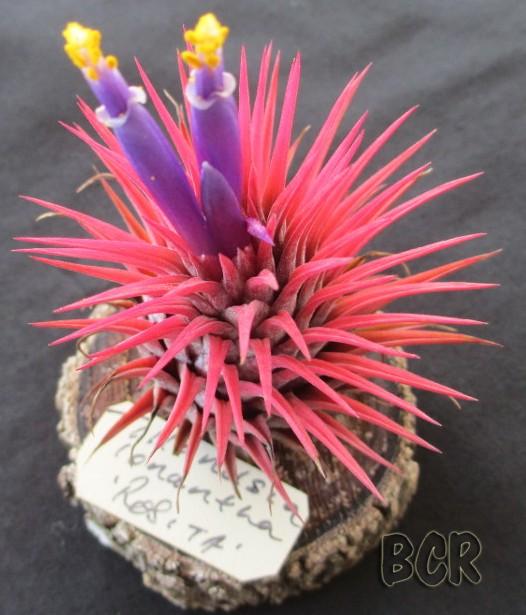
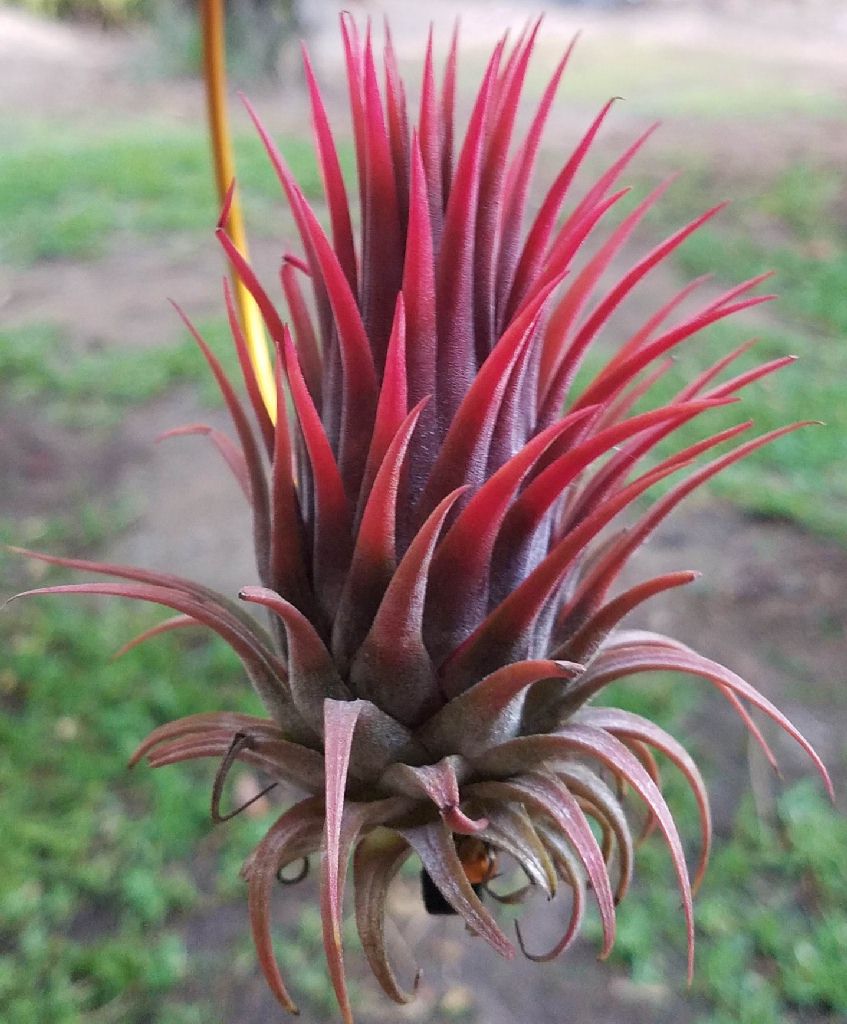


Gary May ... (var. stricta) "In my collection there are quite a few variations in the ionantha v. stricta group. Size, colour, degree of leaf recurve etc. Here are my medium size, green leaf and silver leaf. Approaching flowering the green leaf remains light green whereas the silver leaf turns a pleasant deep red."
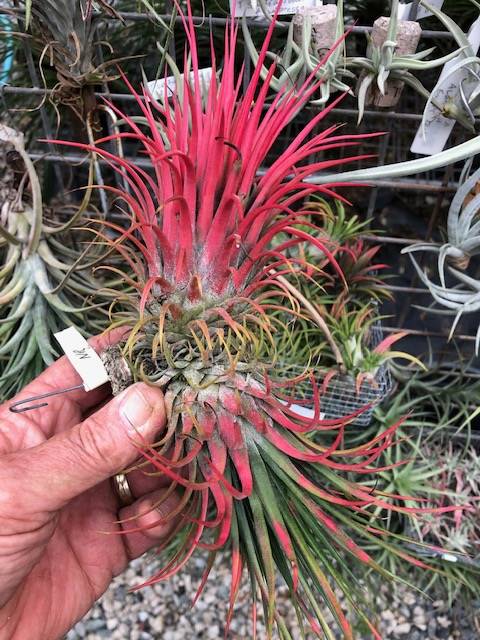
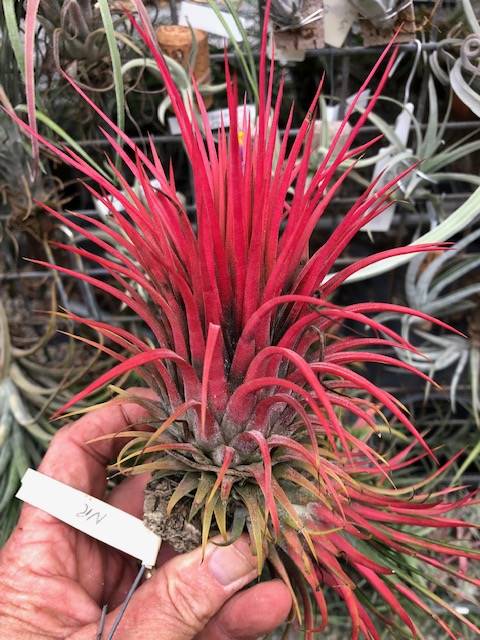
Tillandsia ionantha Mexico Ex. Lau.
As soon as it flowered I managed to capture it with the good camera, but realised that unfortunately when it had three flowers poking through I only had time to capture it with my phone.
A lovely little plant! I remember Chris telling me that this was a particular clone he picked out of a batch of ionantha 'Curly Top' – hence the description."
Bob Hudson ... "Good evening Harold. See the BCR for photos of the real 'Curly Top'. Your plant may be T. Curly Leaf ?"
Chris Larson ... "This plant also goes by the name T. ionantha Mexican ex Lau. Collectors Corner imported this batch prior to my employment - Brent was supervising the import if I am correct.
T. ionantha Curly Top was selected as the best from this batch that show the particular trait and sent to Bob Hudson. I later isolated another few that show the same trait as T. Curly Top and have been propagating these. These may or may not be vegetative propagations from the original T. Curly Top.
Under certain conditions the T. Curly top sends up pups which are very flat. For a while I thought this was different and some crept out as T. Flat Top - due to people asking for them - but these all ended up being T. Curly Top.
So Harold, yours are normally tagged T. ionantha Mexico ex Lau. Many will have these forms in their collection. I think that Bertie Flower also got some accross to NZ in the '00s
I really like this form."
Chris Larson ... "BTW. The little scurfy T. ionantha Mexico which is available in the nearest Bunnings to you is a great example of the Registrars problem. (This is different plant from the form T. ionantha Mexico ex Lau that Harold showed above.) When it is grown in a similar latitude to Cairns but at around 450m altitude, it grows to a similar size to what we sell it - forms small offsets to approx 2-3 cm. But if it is grown nearby, at sea level - same as Cairns, it doesn't flower readily, and reaches a size similar to T. ionantha var maxima (approx 15 cm). T. ionantha var maxima is the name of the large plant that comes from Huamelula and prior to be being described was called T. ionantha Huamelula. (I refuse to use this name for this plant, as it is very different to the forms of T. ionantha var maxima that Bird Rock Tropicals & Rainforest Flora sells.) I've noticed some eBayers selling clusters of this plant (supplied by Collectors Corner) as "T. ionantha Mexico Mini" with each plant in the cluster being 10 to 15 mm - the vendors detailing it in the associated blurb as a small form - they haven't a clue, as they buy small plants and they sell small plants. This plant is around all over the world as T. ionantha Huamelula from CC's supplier - a name which CC refuse to use for the reasons stated.
These are the things that need to be taken into account as Registrar, and why (I think) Derek throws up his hands. Good luck Geoff! It is a big call in assessing each request for registration."
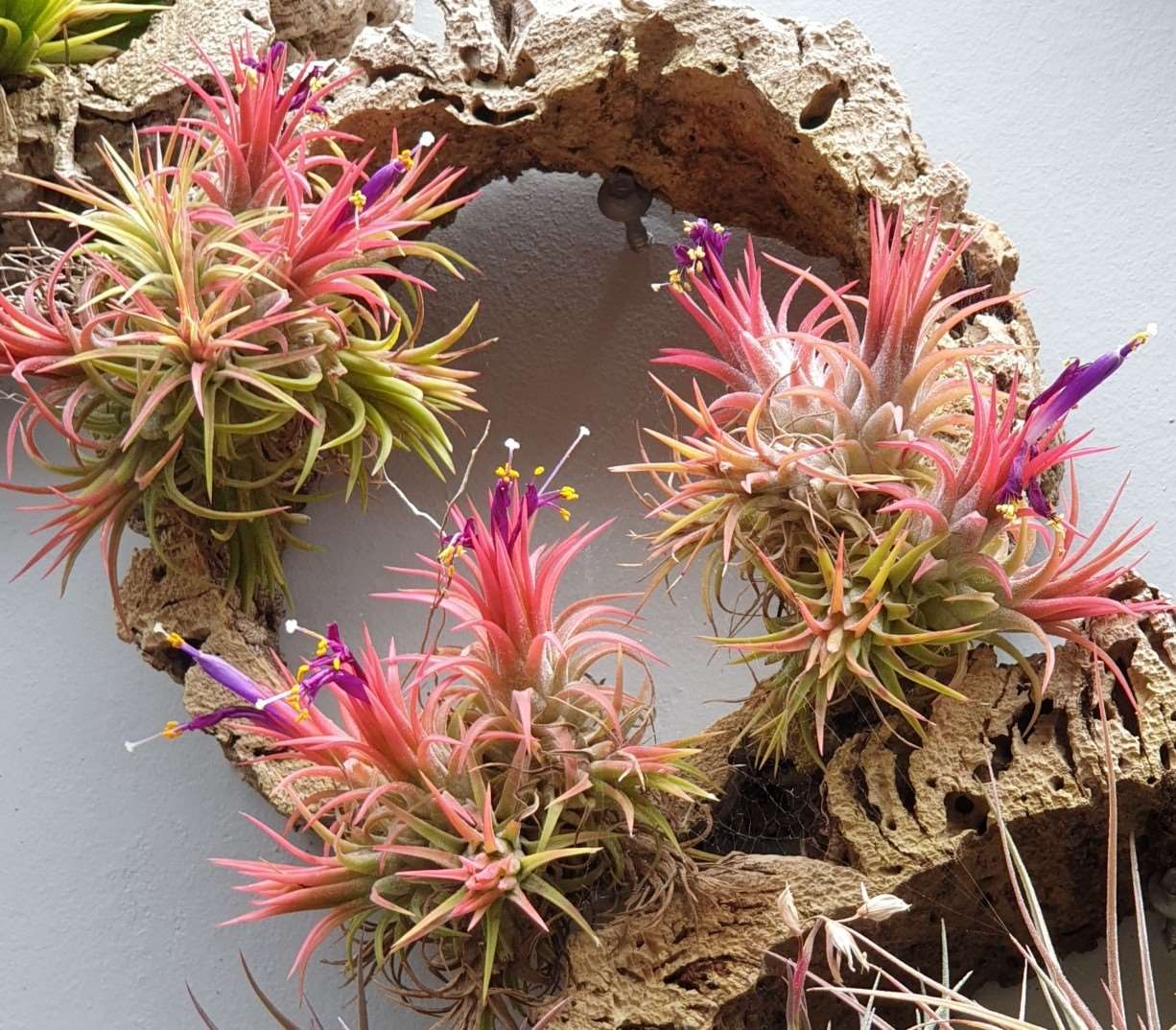
Sometimes there is an orangey shade to them, other times it is dark, burnt, red - all dependent on culture. This time it is something else and, as with some Mexican T. ionantha, they mostly have this nearly exserted bracts - sorry for the terminology - similar to T. ionantha var stricta amongst others."
Tillandsia ionantha (Mexico) in Australian Stores.
Chris Larson ... "This is the tag on Collectors Corner's polypaks. So my assumption is that's what we are looking at. It certainly looks like that plant.
We receive this as T. 'Huamelula'. I have seen it on an international web site as such. Someone on that forum said it is not - and I agree. I sent a pic to Pam Koide-Hyatt, she agrees it is not.
Others that have been to Huamelula (on Pams tours) say this form is not there.
T. Huamelula is now T. ionantha var maxima. But as it has little similarity in appearance to this we cannot use this name. I refuse to use the name Huamelula.
So we sell it as T.ionantha Mexico."
Dale Dixon ... "I got it from a private collector in Sydney so don’t know the provenance. It’s certainly different to other ionantha that I have and bears some resemblance to 'Mayan Flame' on BinA. What do you think."
Derek Butcher ... "You could try matching it up on the BCR listings. Under Advanced Search, type "Ionantha Group" in the Notes section--and up come 145 cultivar names, which include T. ionantha hybrids."
Ed. ... "See also 2nd row of pics at top of this page "var maxima", and Chris Larson's comments in 'Tillandsia ionantha Mexico Ex. Lau.' section above.
T. 'Huamelula', T. ionantha var maxima, T. ionantha Mexico Ex. Lau, T. ionantha Mexico (in Aust), and others need to be considered when looking at these labels."
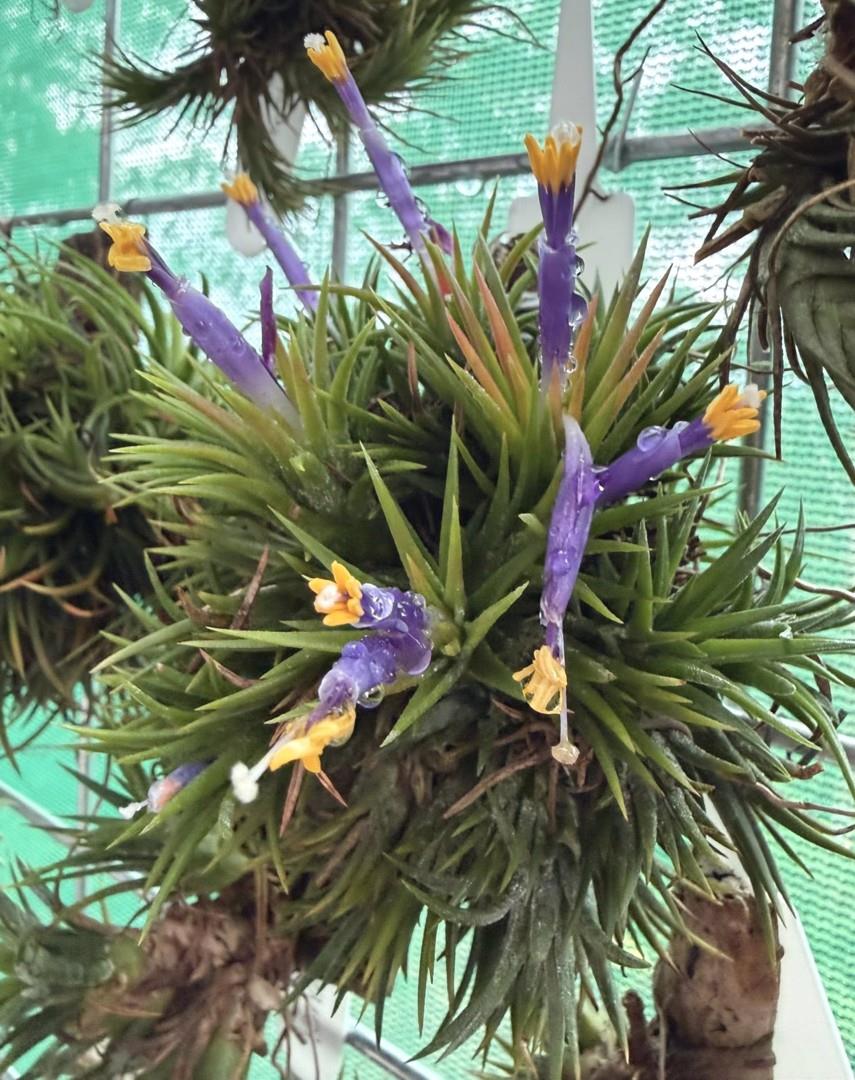
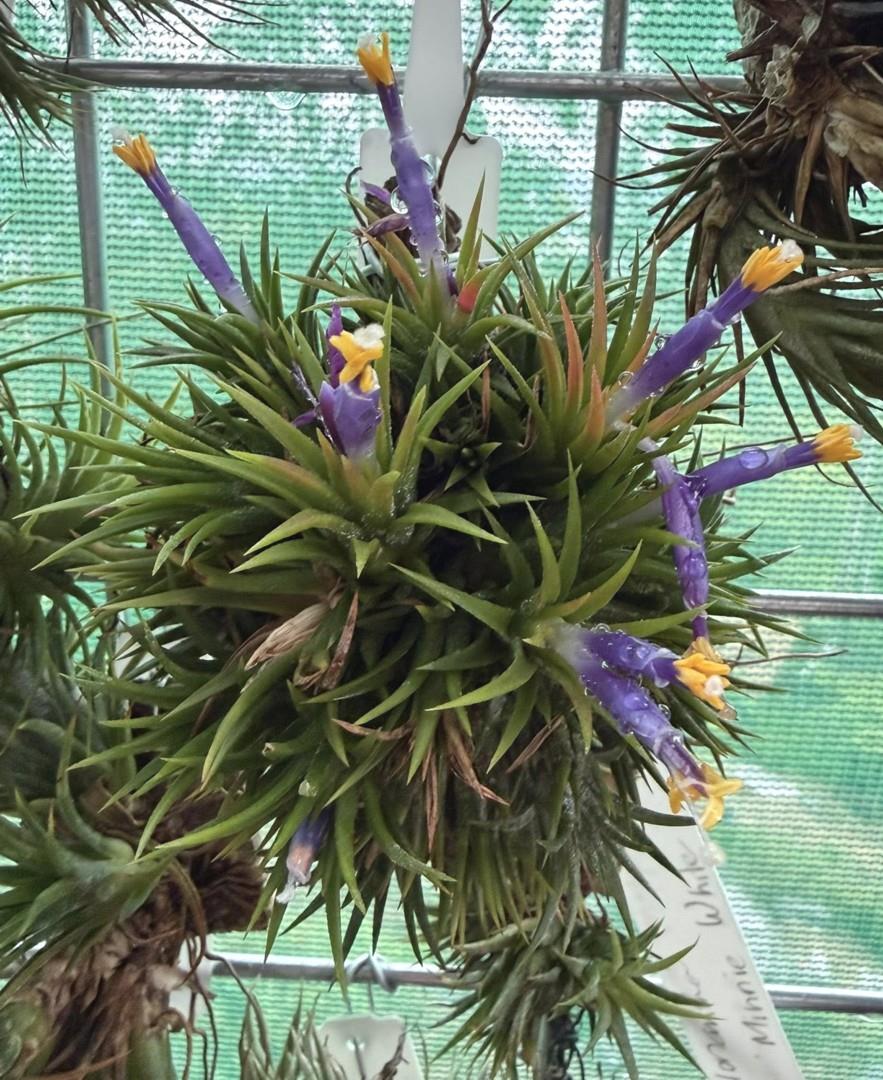
Tillandsia ionantha var. maxima

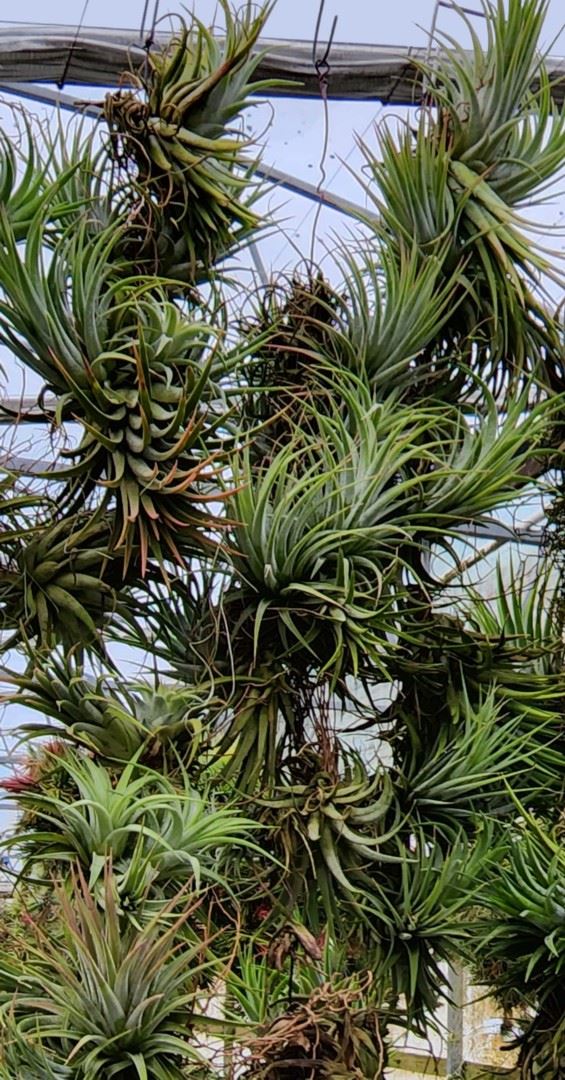
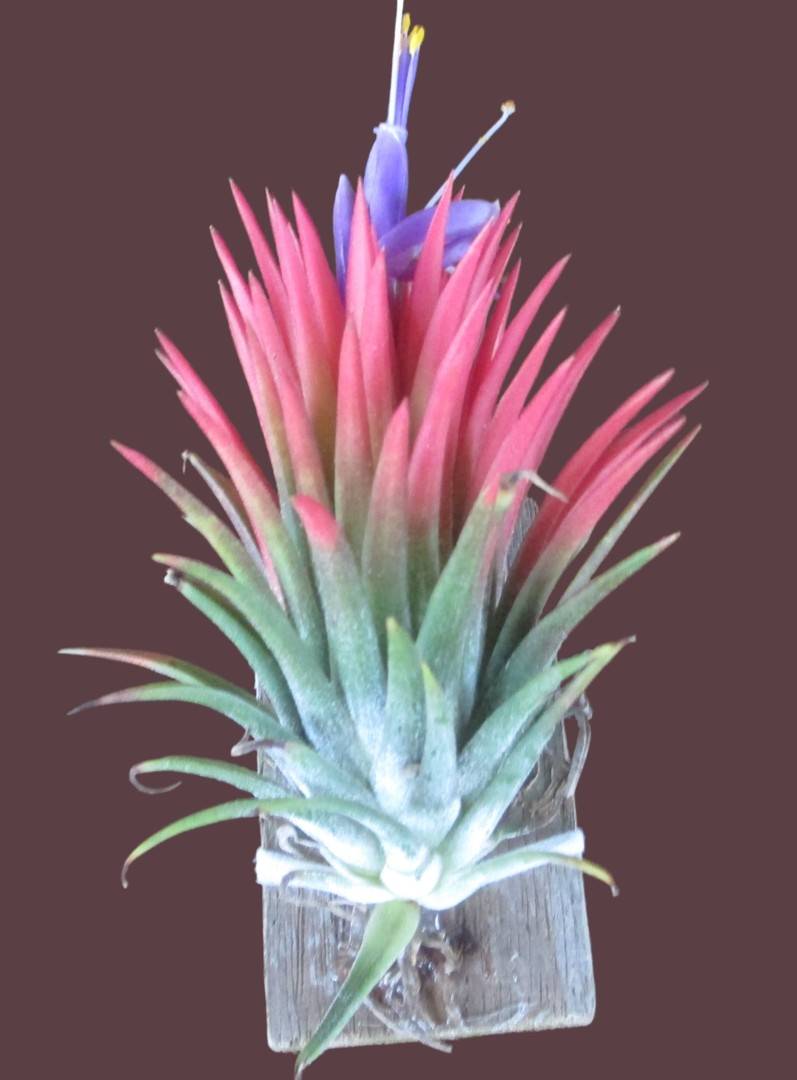
The plant is supposed to be a little greener than other forms of T. ionantha, have a more open rosette than many, and have wider thicker leaves - brittle. So says the description by Pam KH in the early 90s BSI article describing it - it is on the disc. It is larger than many forms, but there are a few other forms much larger.
These strings were all bunched together before I pulled them apart. This is the reason some rosettes aren't quite so open - they were restricted in their growth. Given the opportunity they will be more like the ones at bottom left - so that's what they should look like.
Many of the plants in Aussie collections under this name are not correct."
Ed. ... "See also Chris Larson's comments in 'Tillandsia ionantha Mexico Ex. Lau.' section above.
T. 'Huamelula', T. ionantha var maxima, T. ionantha Mexico Ex. Lau, T. ionantha Mexico (in Aust), and others need to be considered when looking at these labels."
Input by Pamela Hyatt, Justin Lee and Derek Butcher.
See also Journal Brom. Soc. 43(4):161. 1993.
Hopefully this table will assist identification by placing all the registered cultivars in one place.
Geoff Lawn ... "If only cultivar groups were clear-cut, but in the BCR T. ionantha hybrids became too prolific and it was easiest to just lump them with pure ionantha types as the T. ionantha in the parentage was visually obvious.
Where does one draw the line though, because a number of "pure ionantha" registered cultivars are intraspecific crosses between named ionantha cultivars, such as T. Big Kahuna.
Probably your best guide is in 'Bromeliads in Australia' where Ian Hook separated the "pure" ionantha group with photos into one group as ionantha cultivars -- I counted 86 distinct types listed, practically all linked to the BCR entries."
Click thumbnails for larger images or Click BCR number to jump to full BCR web page.

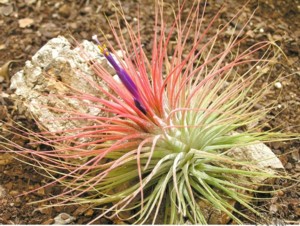
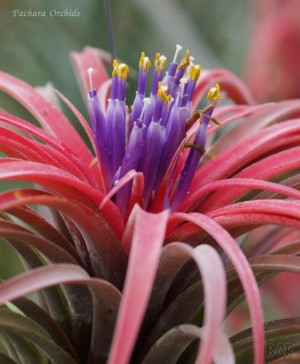
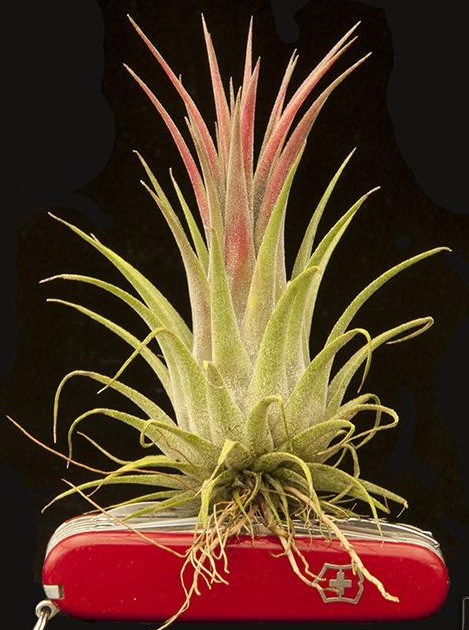
BCR=#11048, photo: Bill Timm | BCR=#10283, photo: Derek Butcher | BCR=#14342, photo: P.Pacharapong | BCR=#11976, photo: Paul Isley |
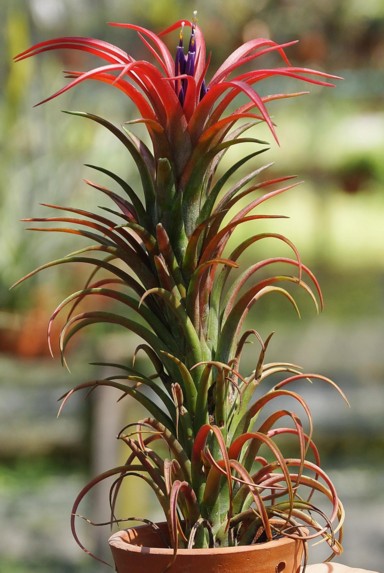
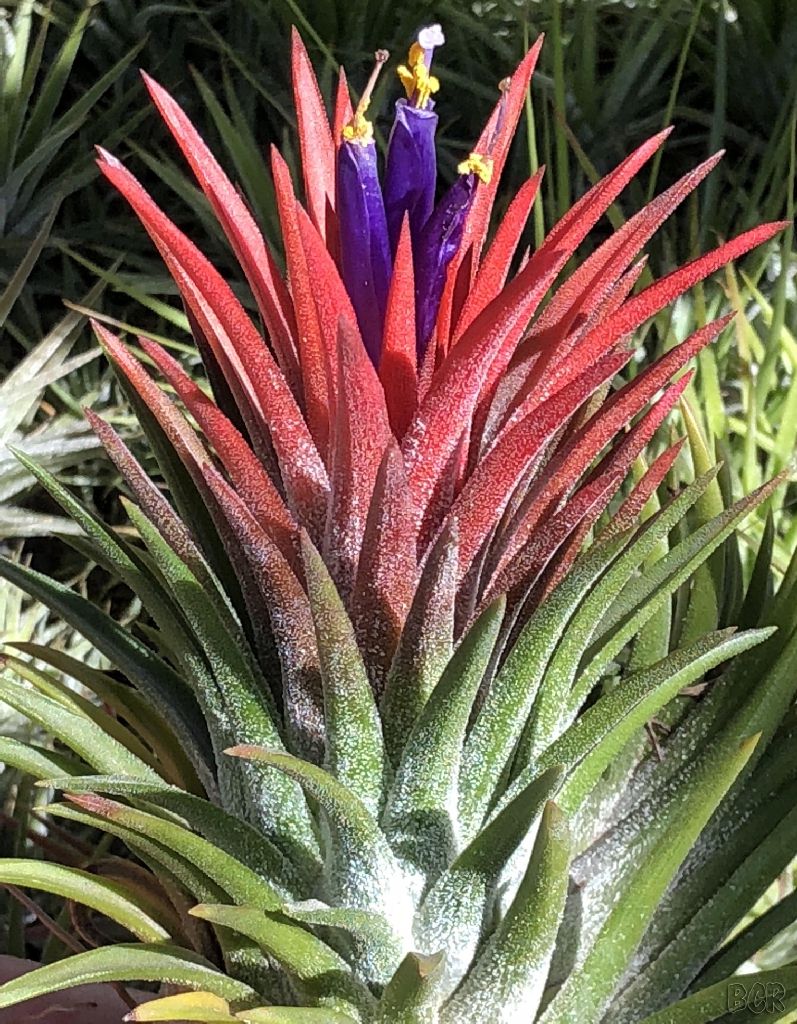
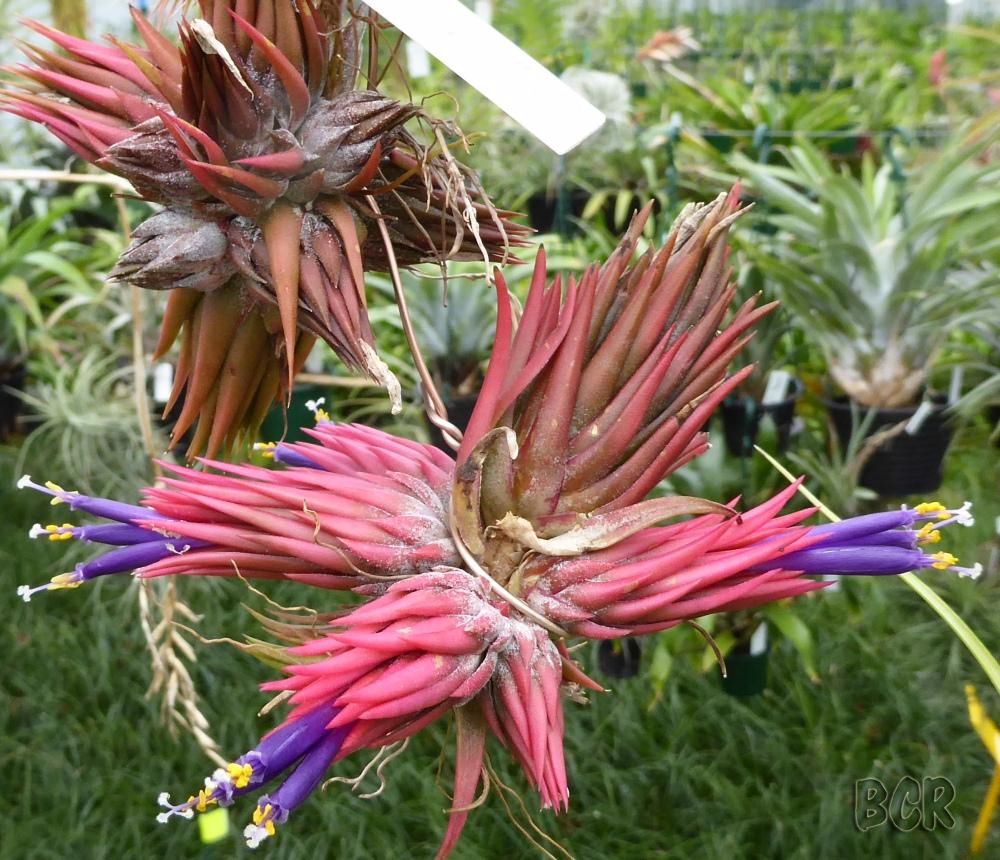

BCR=#14042, photo: P.Pacharapong |
BCR=#14772, photo: Pamela Koide-Hyatt. Bird Rock Tropicals. Slow growing and therefore large at flowering. 12cm high x 6cm wide |
BCR=#14773, photo: Chris Larson. 1cm to 5cm high x 2cm wide. Rainforest Flora Inc. (See discussions this website 'Apretado') |
BCR=#13369, photo: Andrew Flower |
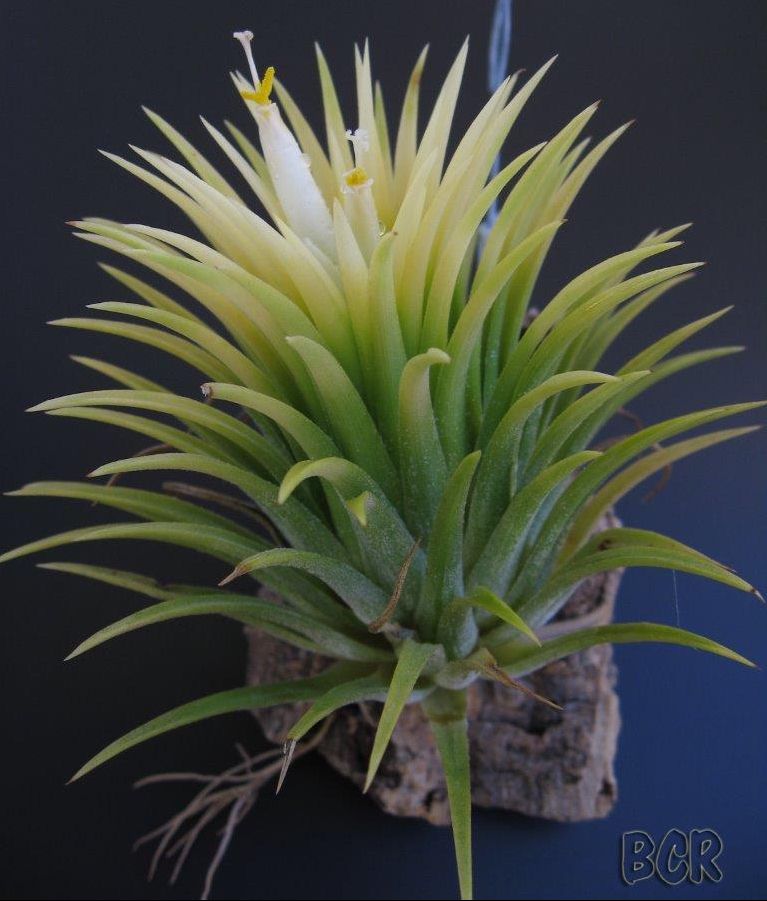
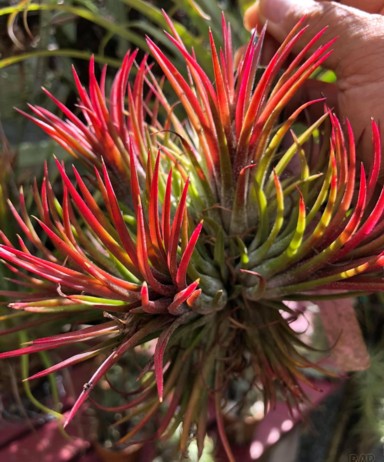

BCR=#16497, photo: Jesrey Valencia |
BCR=#13693, photo: Xiao Kong |


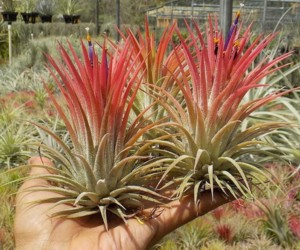
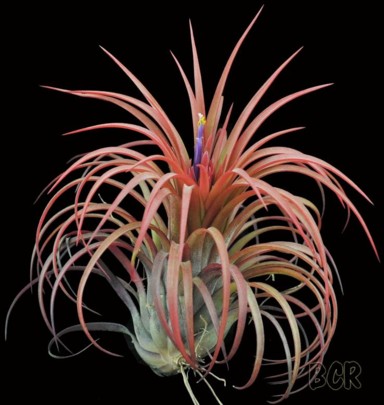
BCR=#14921, photo: Jerry Domingo |
BCR=#15483, photo: Jerry Domingo |
BCR=#12158, photo: Paul Isley |
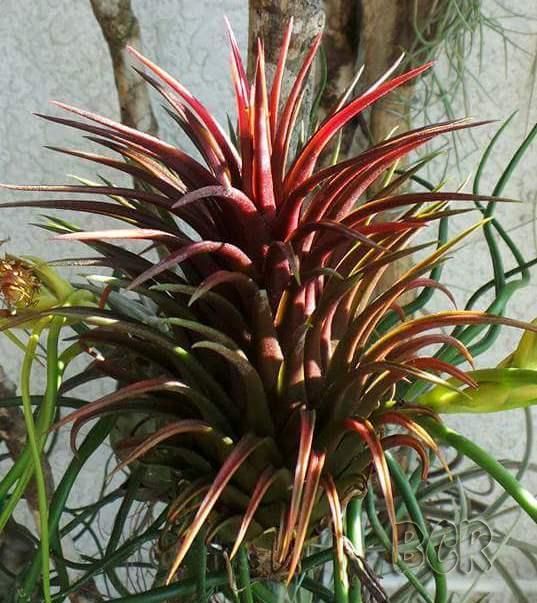
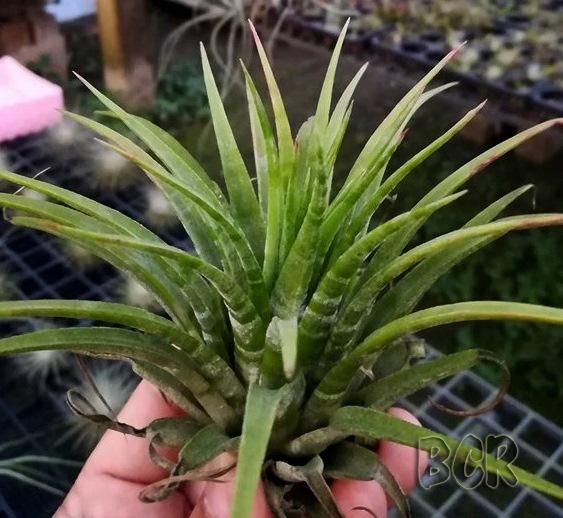
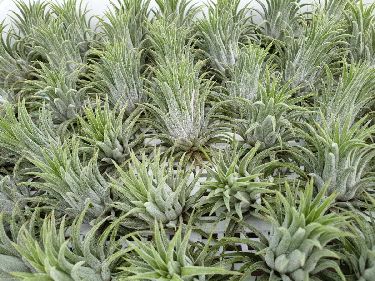
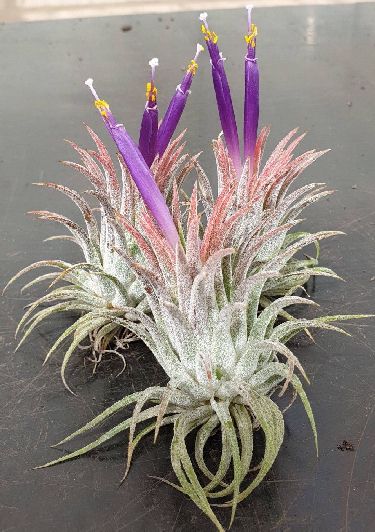
BCR=#14120, photo: C. Sanchez-Mariscal |
BCR=#14632, photo: Woody Kaotun |
BCR=#15936, Thailand, photo: Chris Larson |

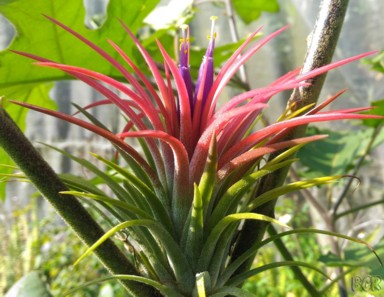
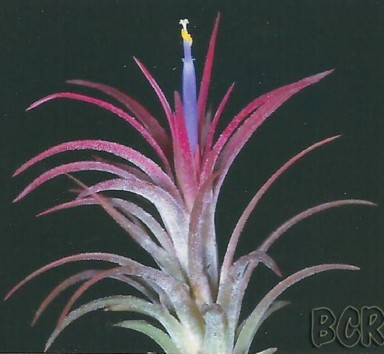

BCR=#13959, photo: P.Pacharapong |
BCR=#14481, photo: Hao Chu |
BCR=#10678, photo: Dennis Cathcart |
BCR=#14086, photo: P. Pacharapong |
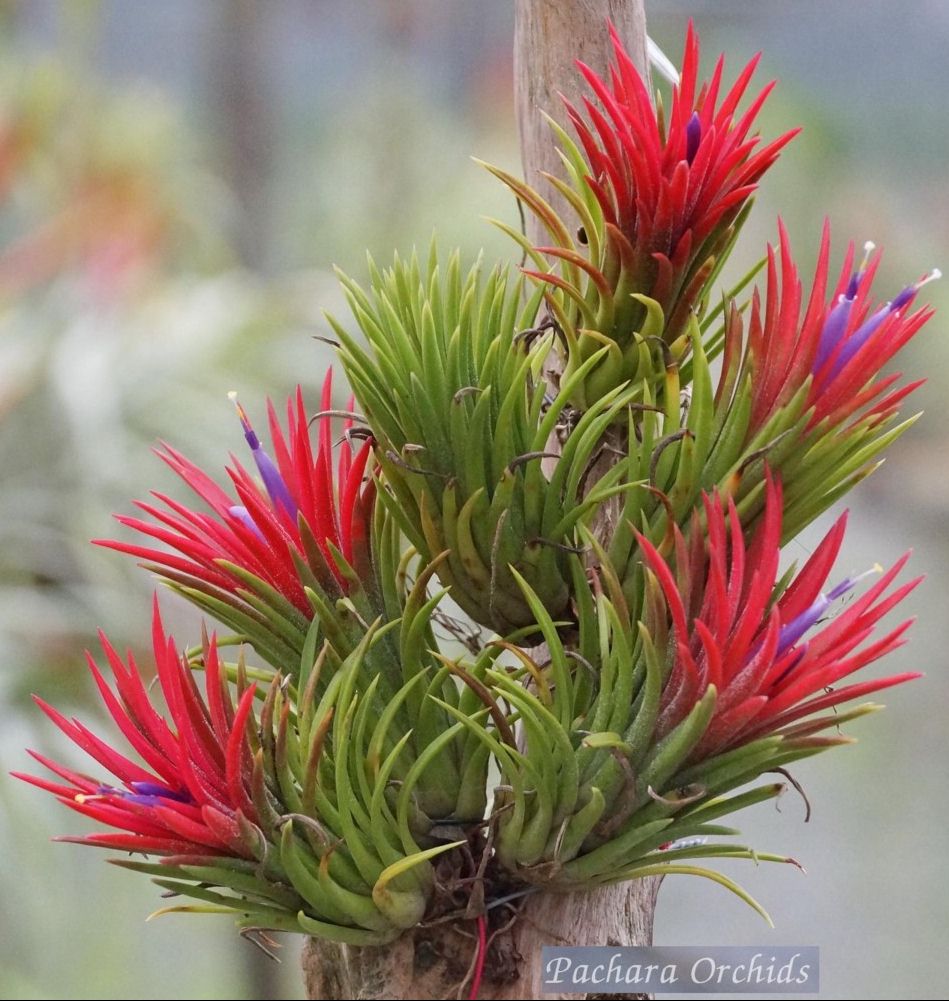
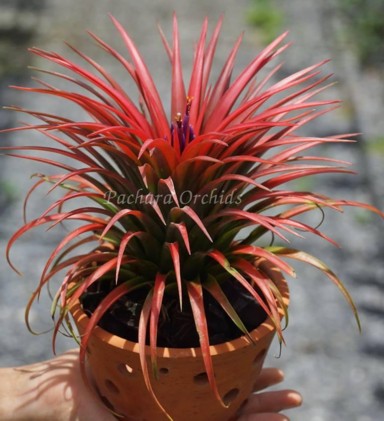
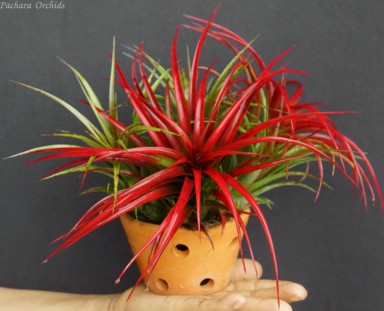
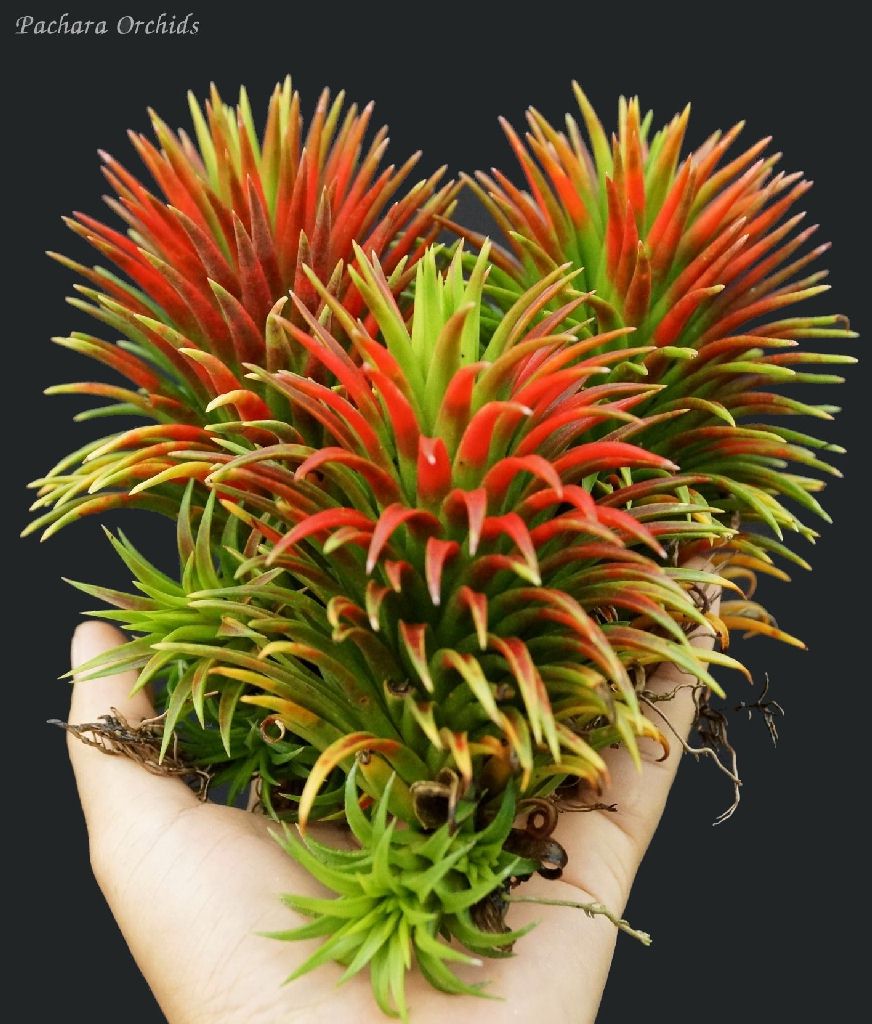
BCR=#14085, photo: P. Pacharapong, Pachara Orchids |
BCR=#14234, photo: P. Pacharapong |
BCR=#14357, photo: P. Pacharapong |
BCR=#13233, photo: Pachara Orchids |
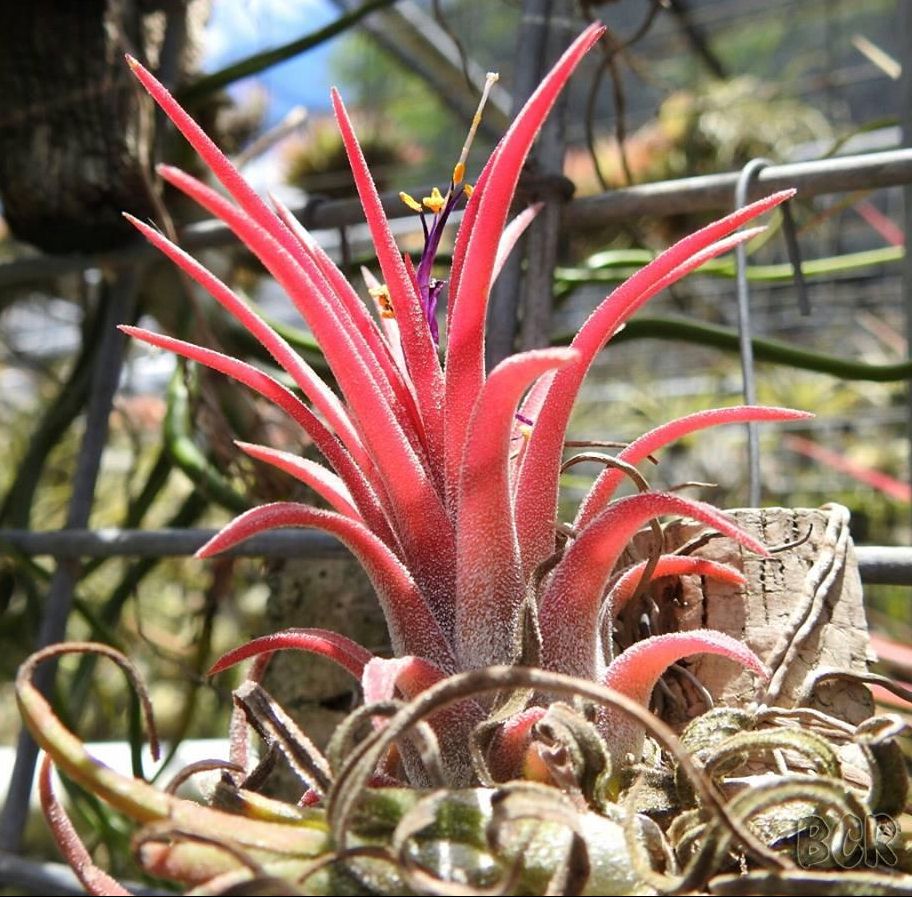
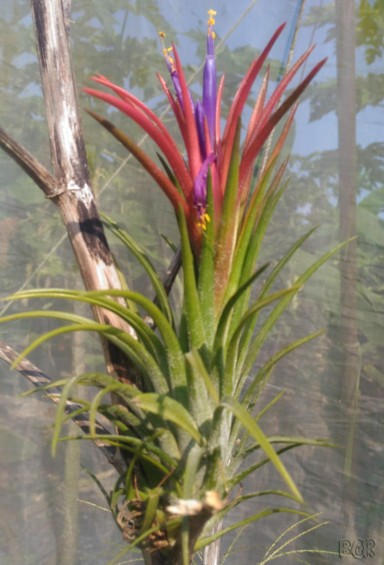
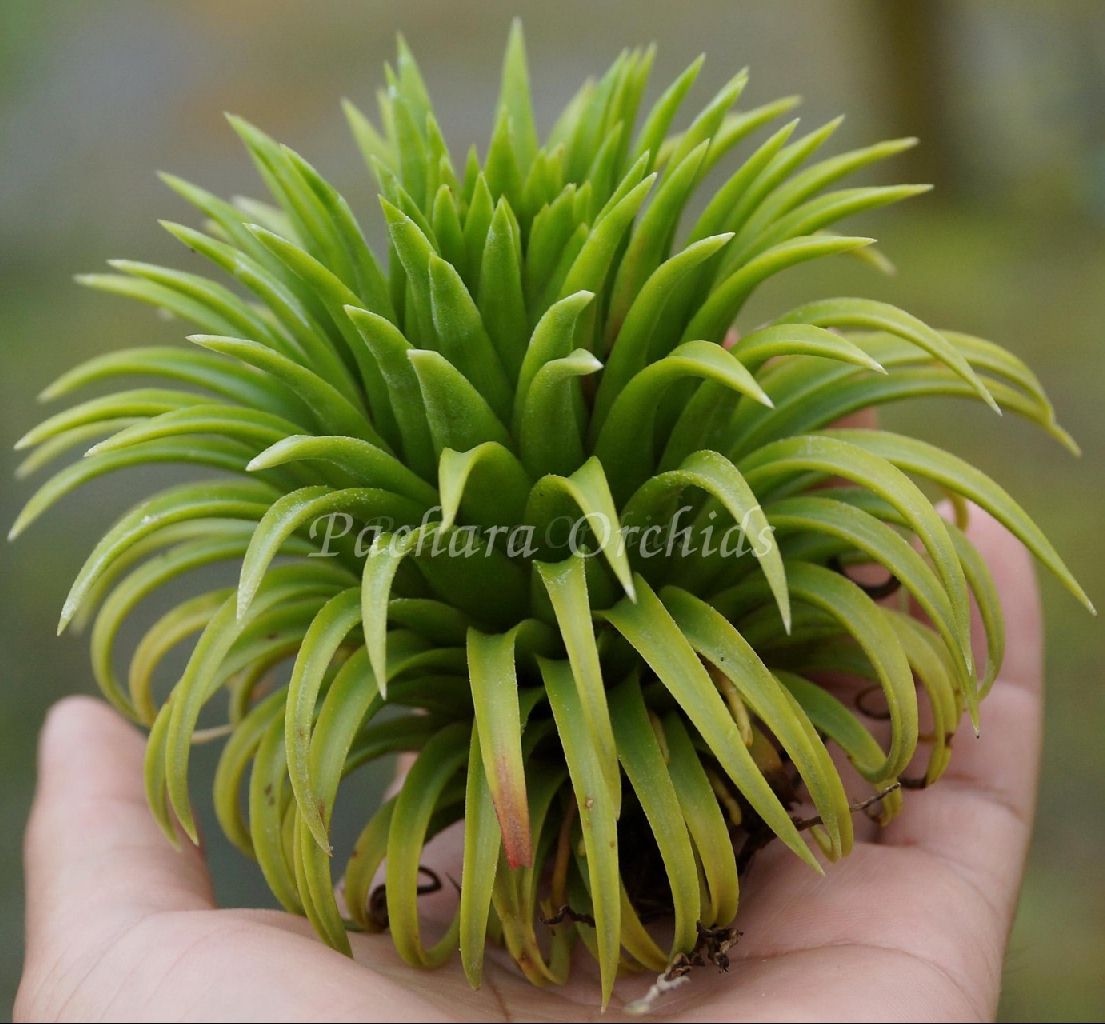
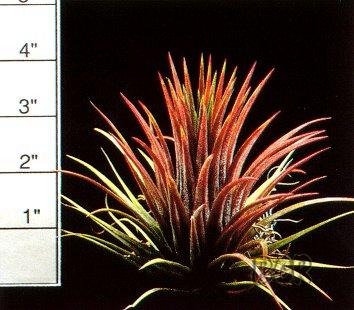
BCR=#13221, photo: Jenny Lynn |
BCR=#14226, photo: Hao Chu |
BCR=#15063, photo: Pachara Orchids |
BCR=#8035, photo: Tillandsia International. |
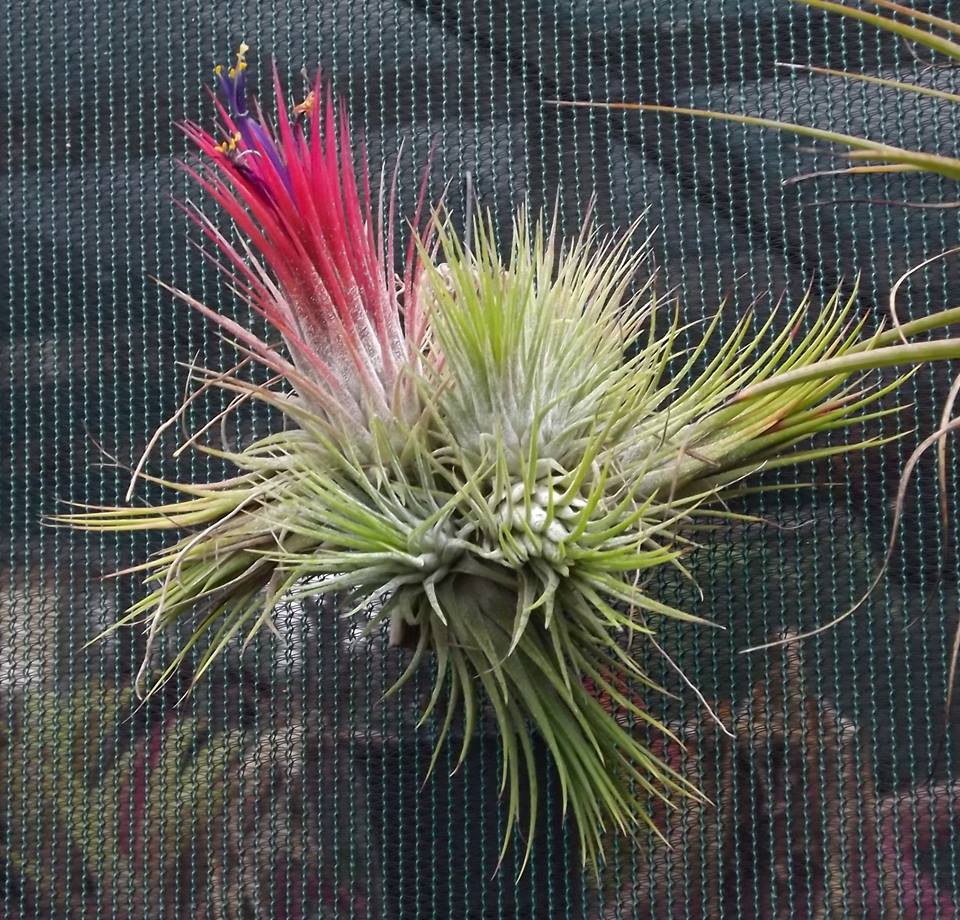
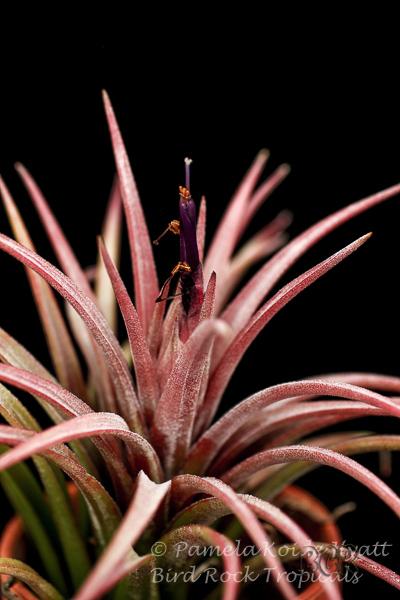
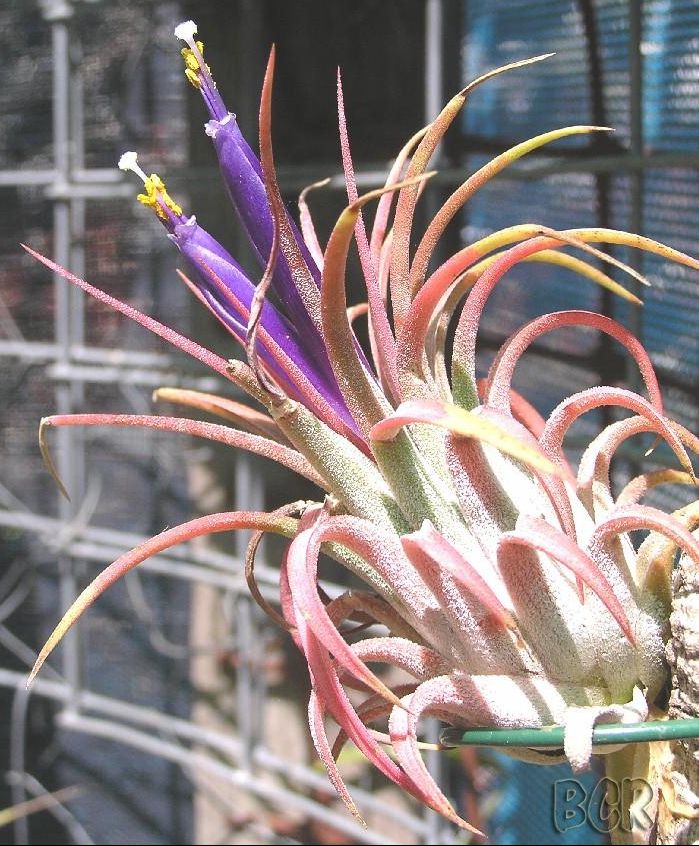
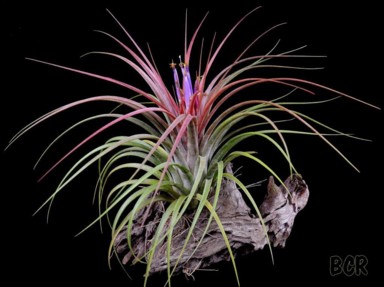
BCR=#8035, photo: Val Honeywood, Aus. |
BCR=#8043, photo: Pamela Koide Hyatt |
BCR=#10141, photo: Derek Butcher |
BCR=#13077, photo: Andy Tan |
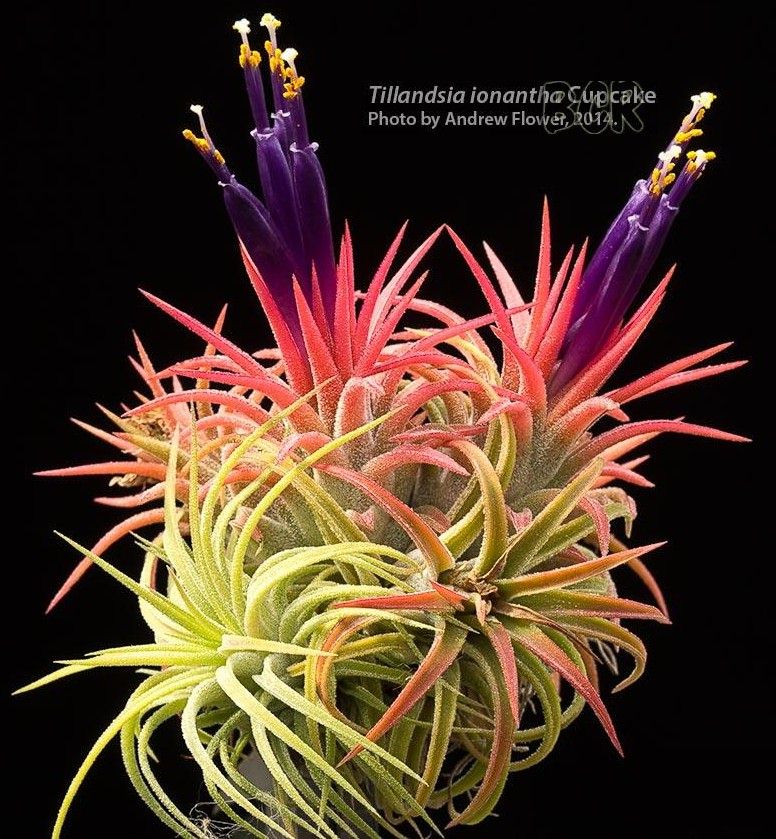
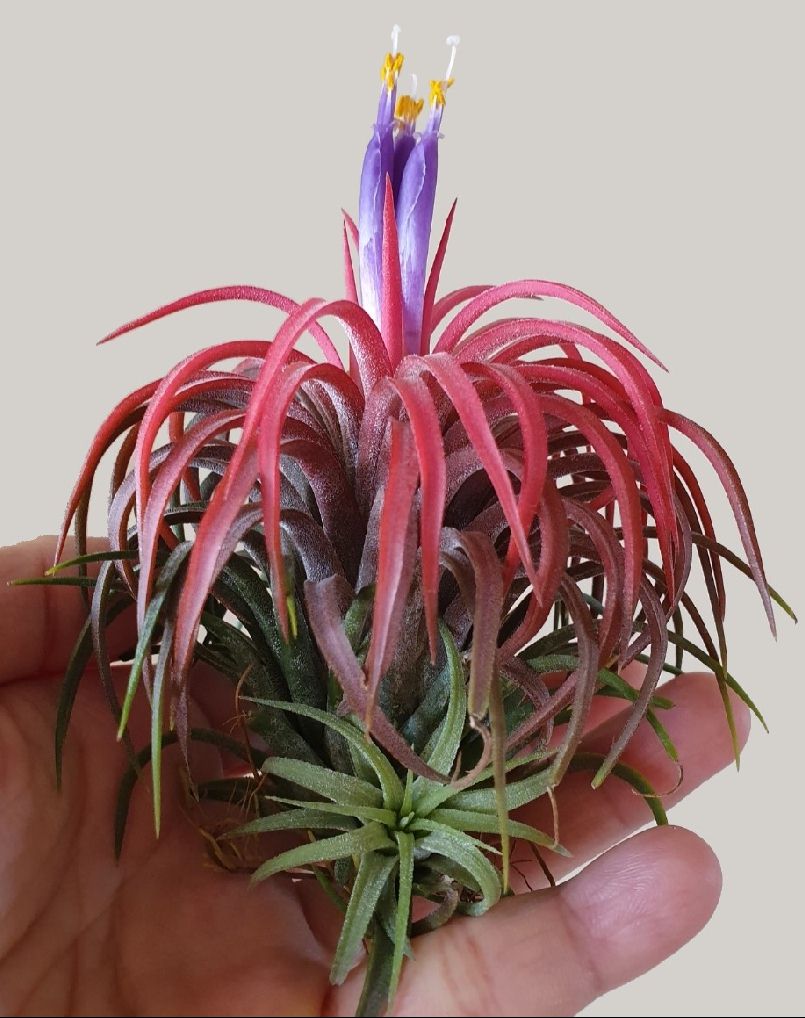
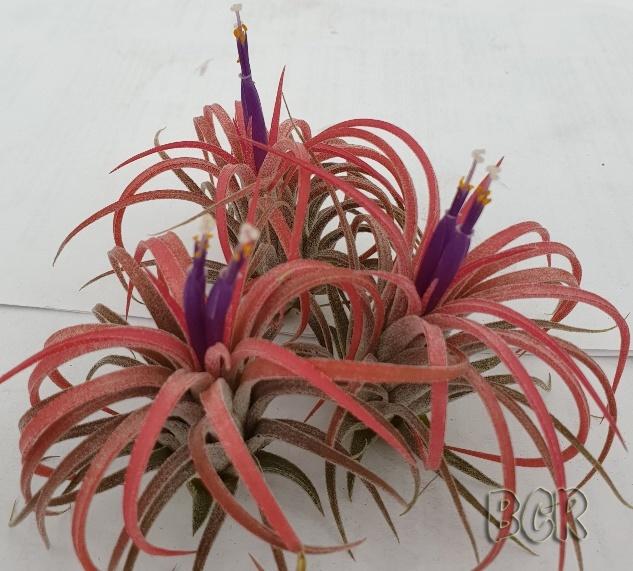
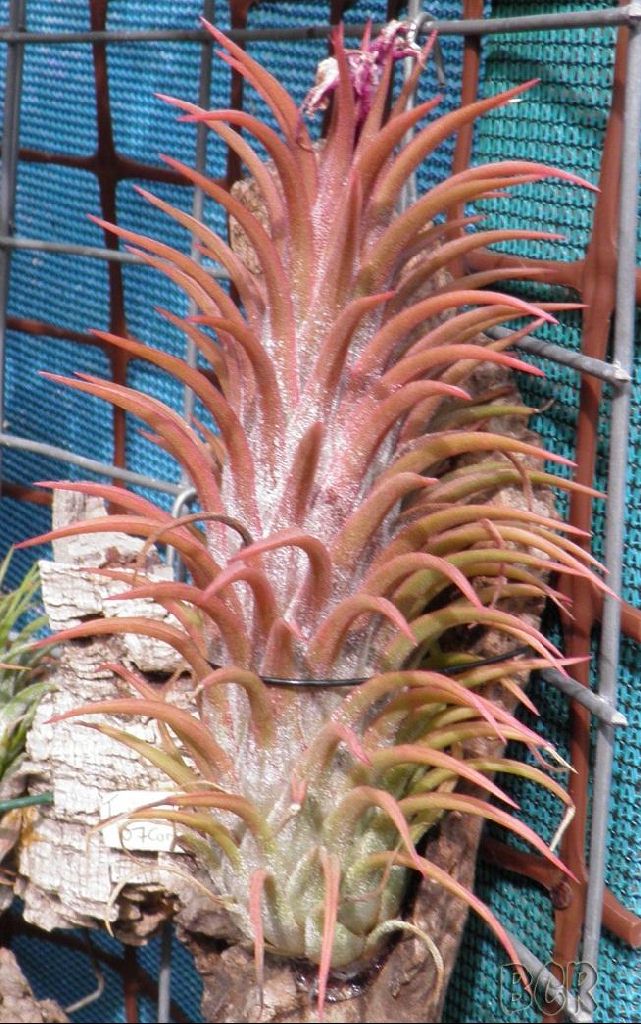
BCR=#13232, photo: Andrew Flower |
BCR=#15727, photo: Kelvin Tan |
BCR=#15693, photo: Chris Larson |
BCR=#10459, photo: Derek Butcher |
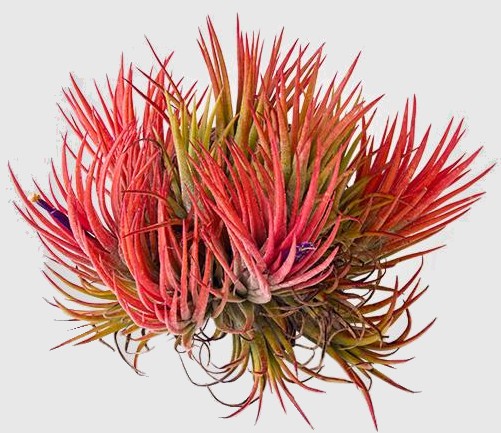
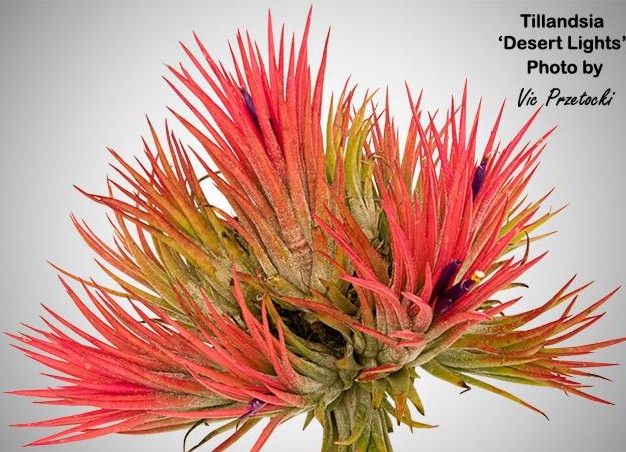
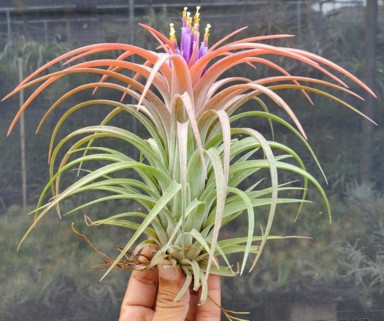

BCR=#14948, photo: Vic Przetock |
BCR=#16403, photo: Jerry Domingo |
BCR=#16647, photo: Jerry Domingo |

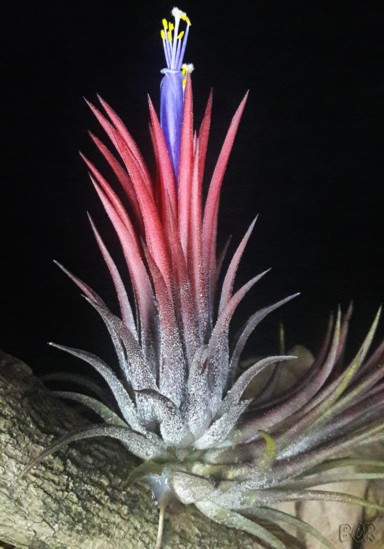
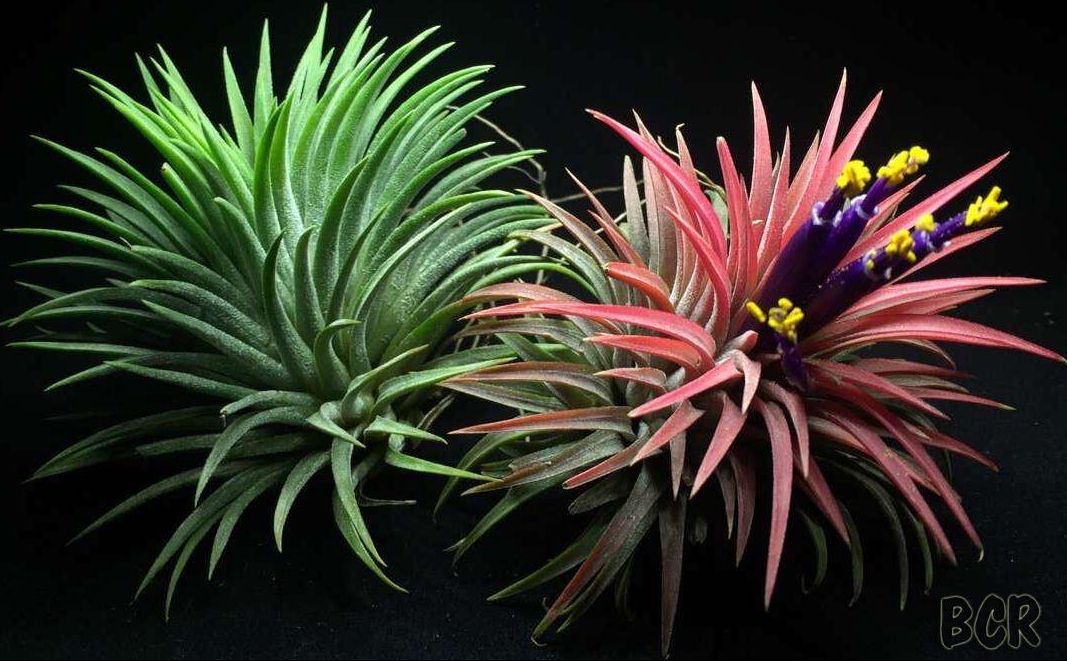

BCR=#14194, photo: C. Sanchez-Mariscal |
BCR=#14187, photo: C. Sanchez-Mariscal |
BCR=#13692, photo: Xiao Kong |
BCR=#8060, photo: Dennis Cathcart |
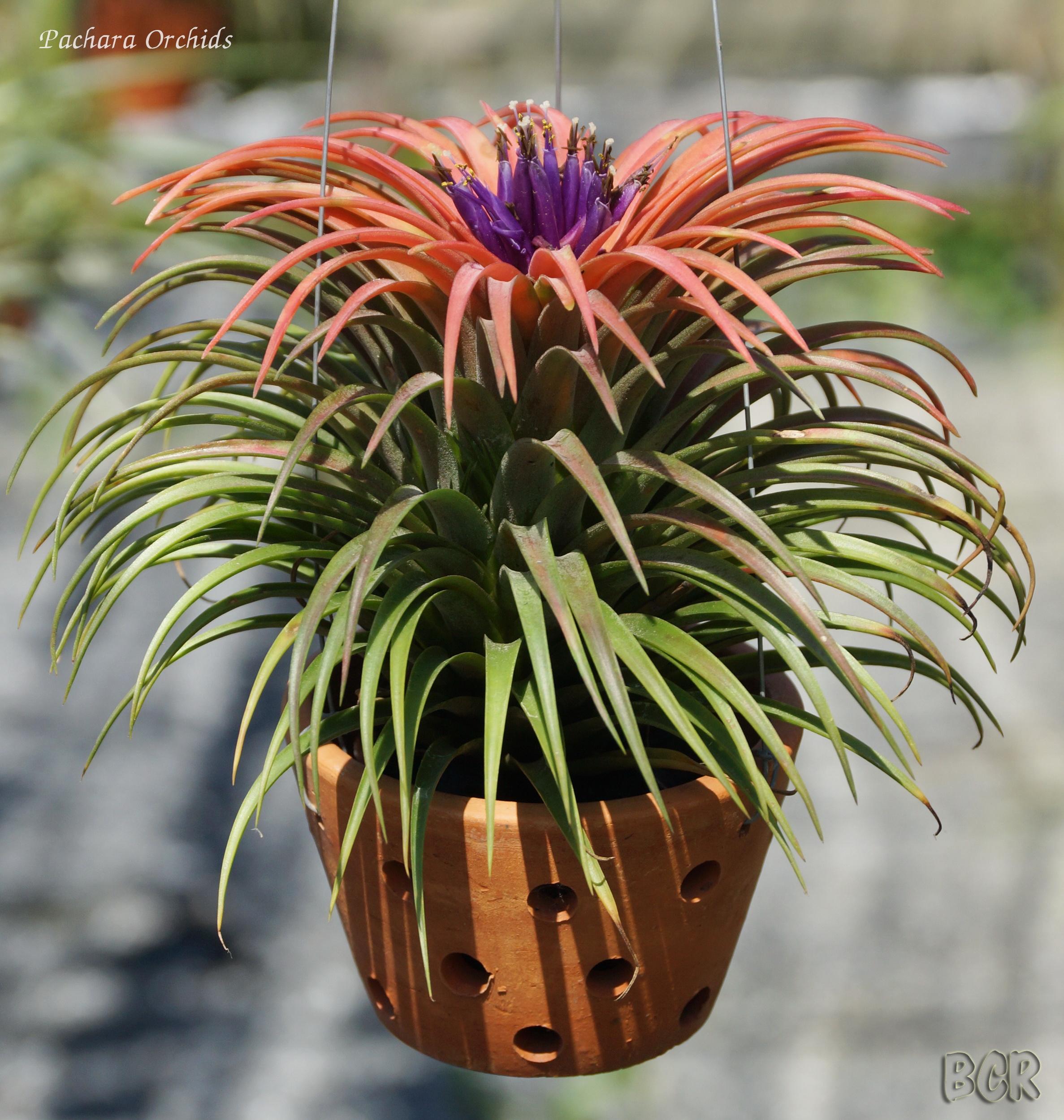

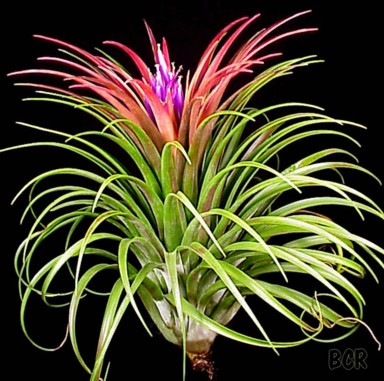
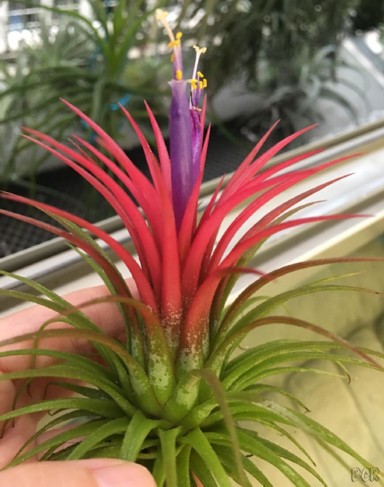
BCR=#14039, photo: P. Pacharapong |
BCR=#10945, photo: Bill Timm |
BCR=#10714, photo: Dennis Cathcart |
BCR=#13730, photo: Jasmine Koh |
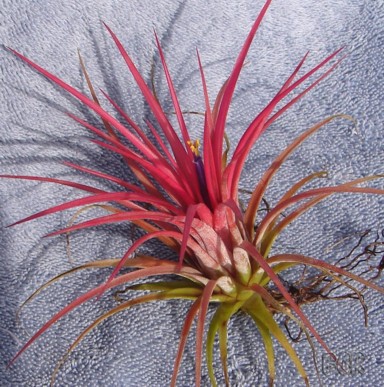
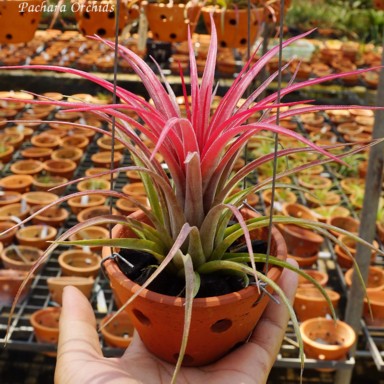
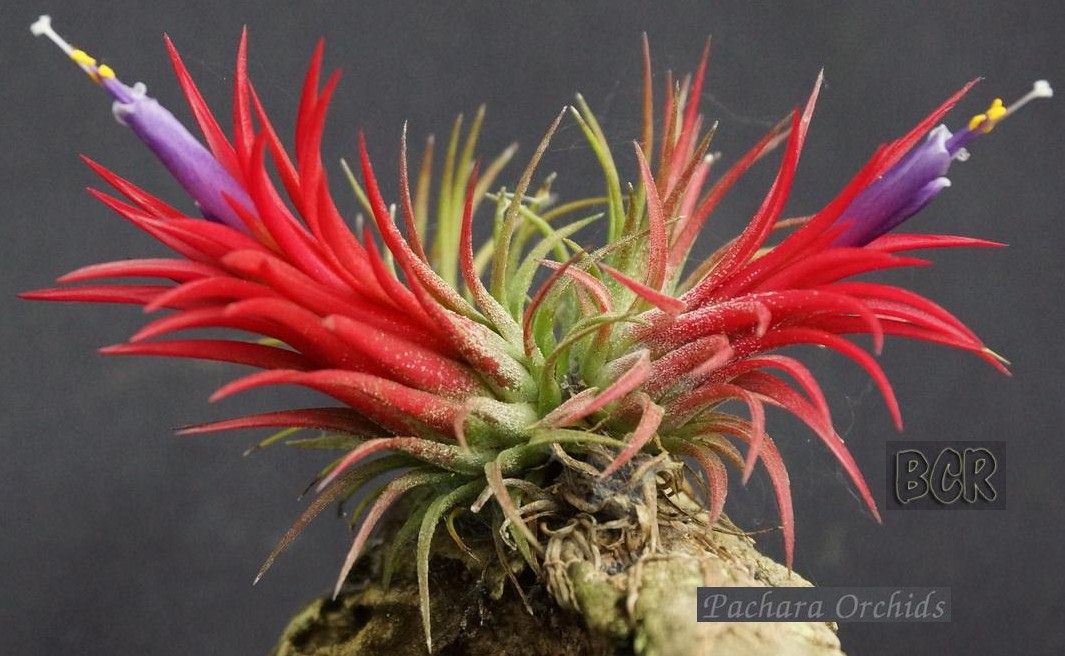
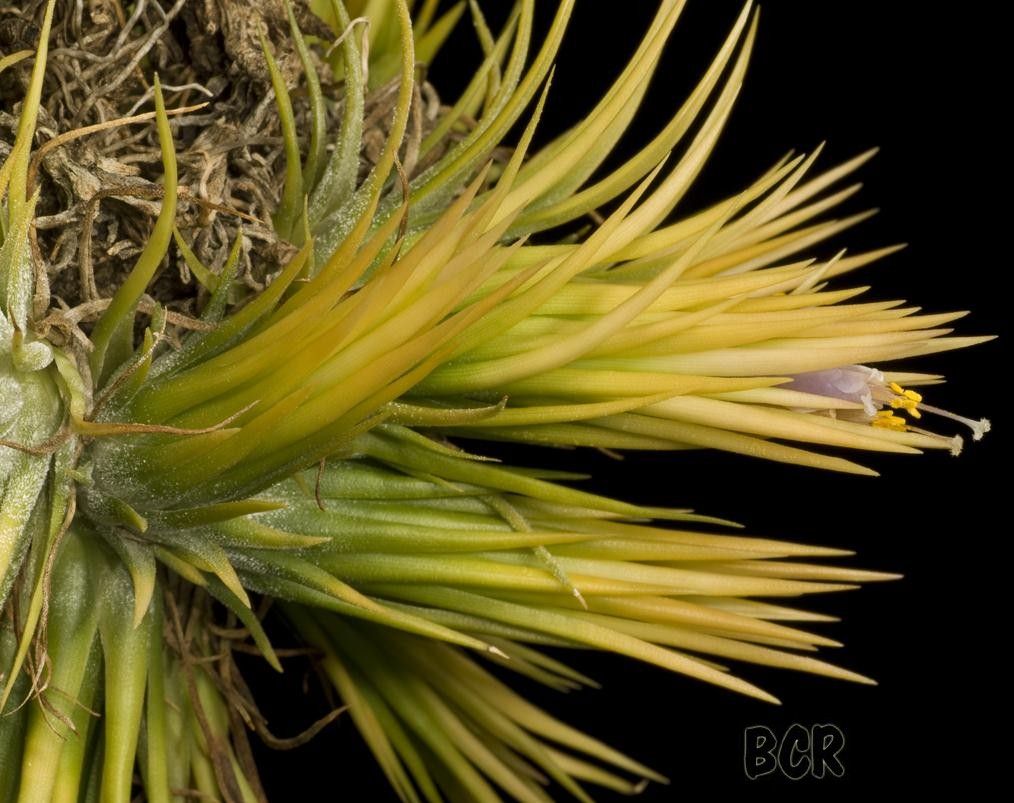
BCR=#10947, photo: Bill Timm |
BCR=#13789, photo: P. Pacharapong |
BCR=#8091, photo: Pachara Orchids |
BCR=#12733, photo: Hiroyuki Takizawa |
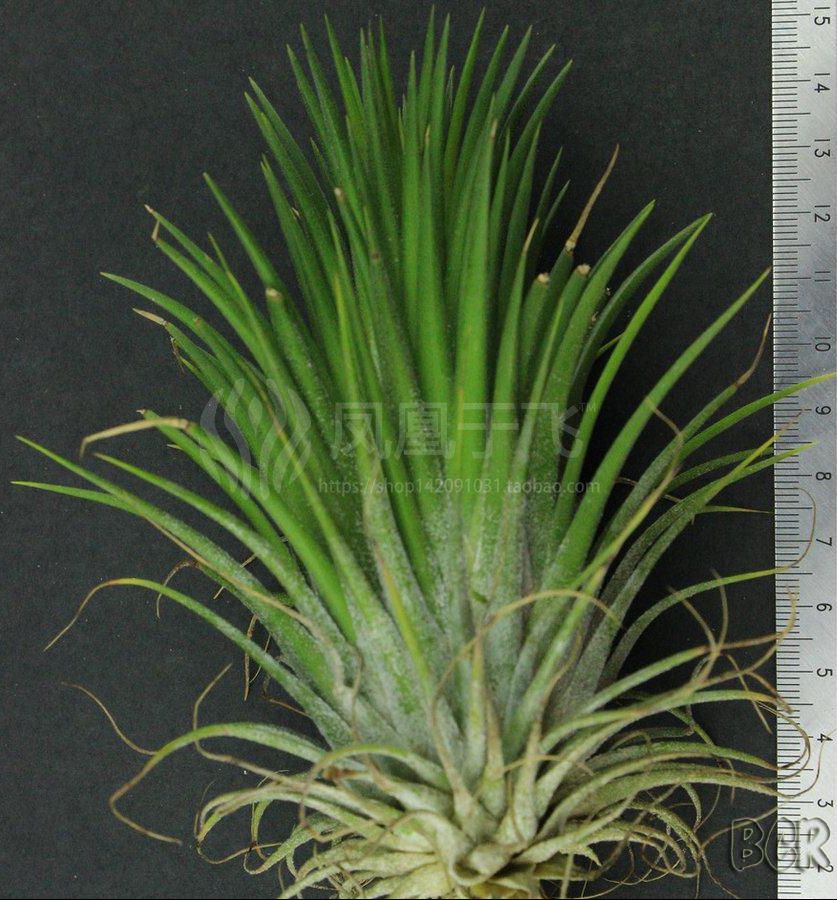
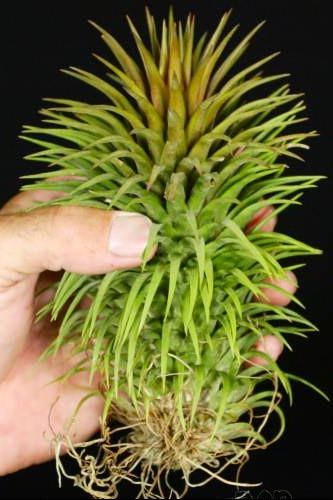
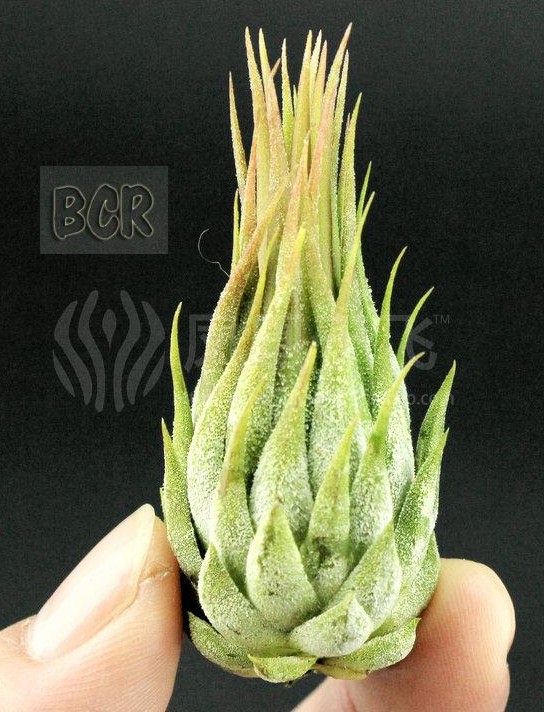

BCR=#10142, photo: Jane Wu |
BCR=#8105, photo: Dennis Cathcart |
BCR=#8107, photo: Jane Wu |
spare, photo: . |
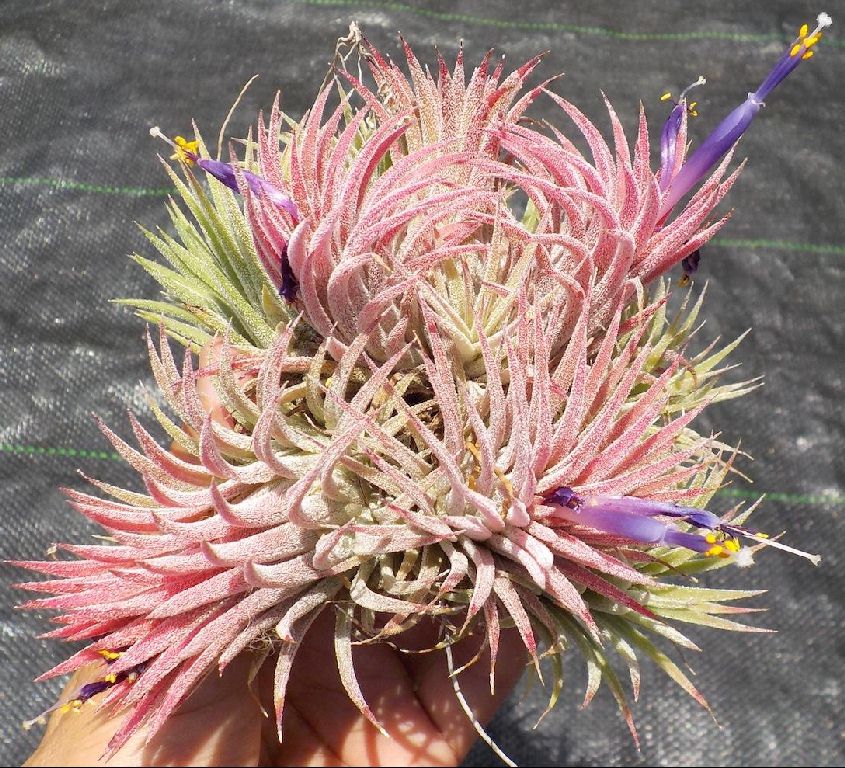
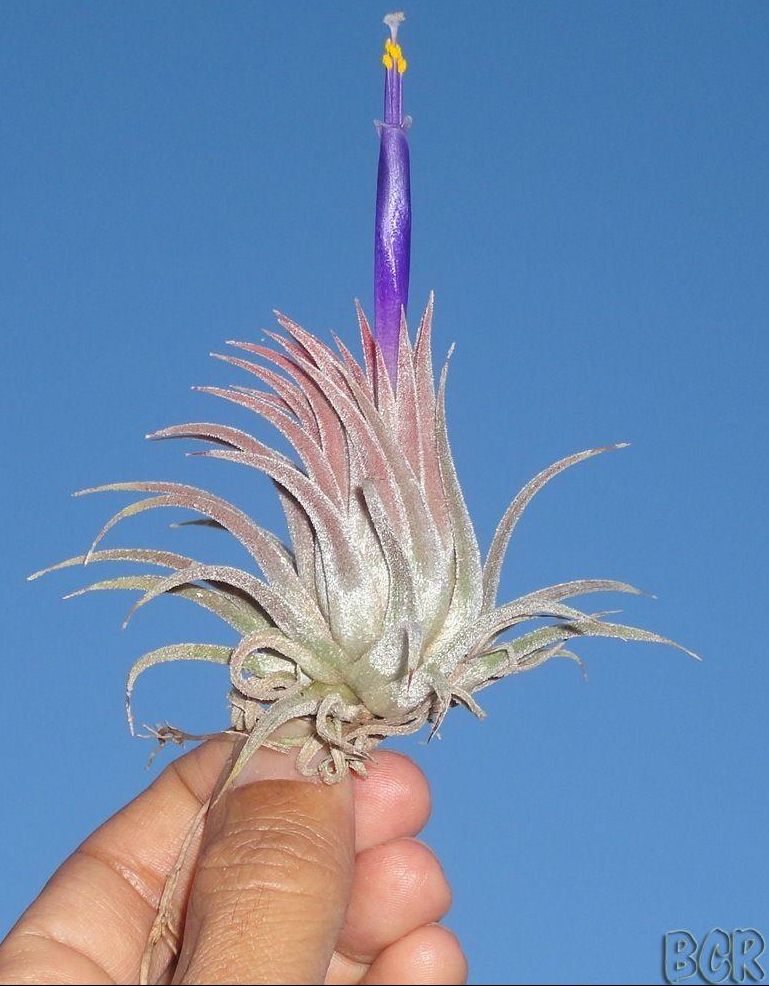
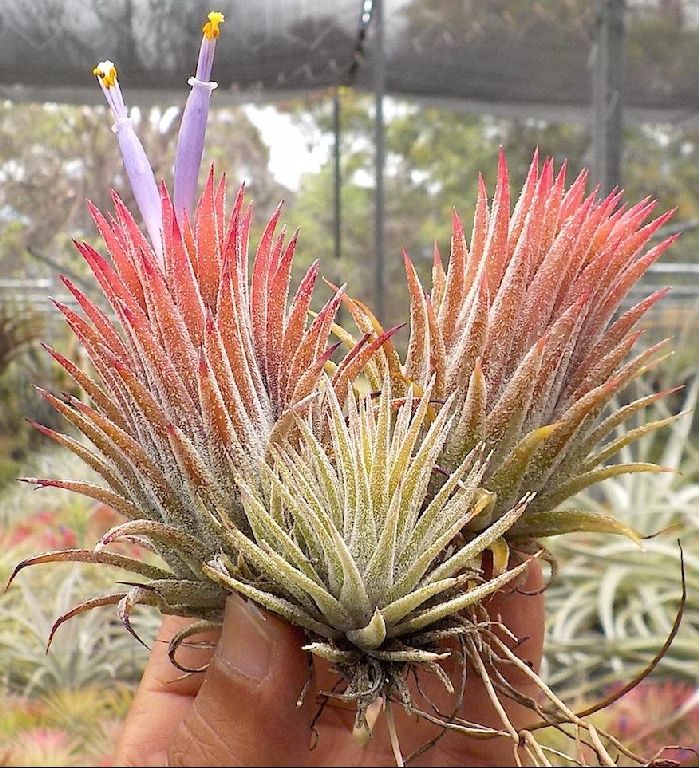

BCR=#15482, photo: Jerry Domingo |
BCR=#13867, photo: Jerry Domingo |
BCR=#15481, photo: Jerry Domingo |
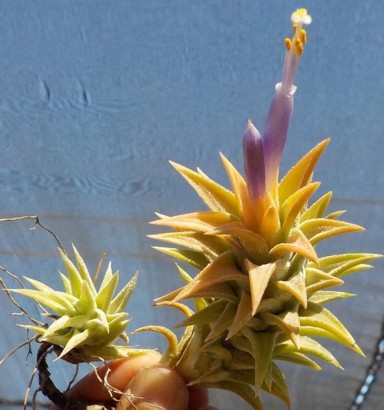
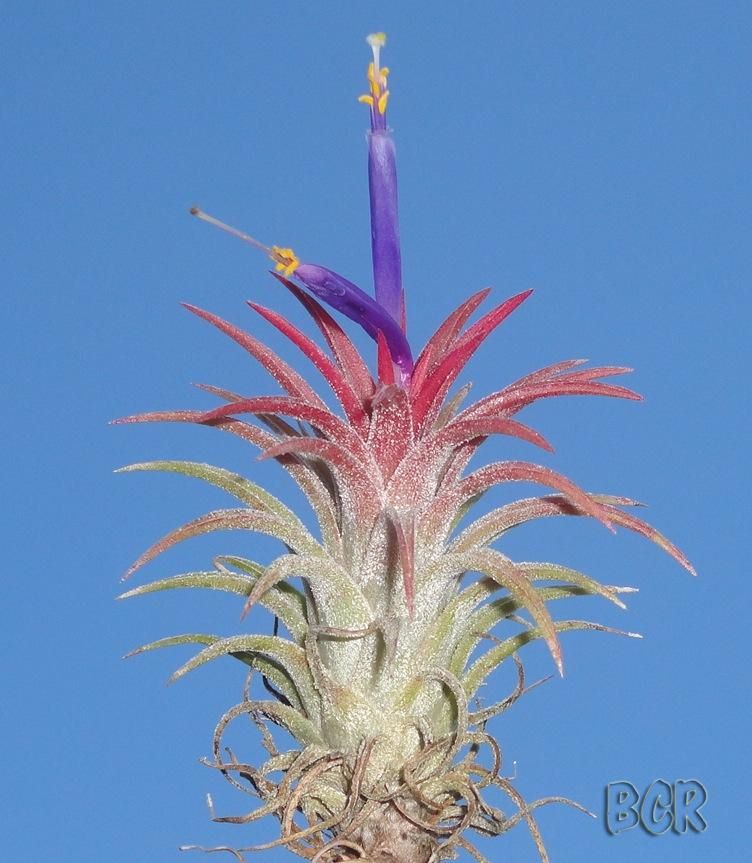
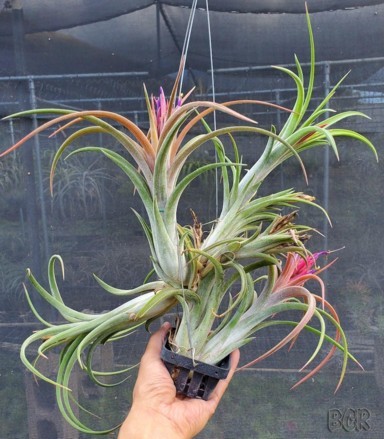

BCR=#15158, photo: Jerry Domingo |
BCR=#13678, photo: Jerry Domingo |
BCR=#16667, photo: Jerry Domingo |
BCR=#12789, photo: Seth Charoenwong |
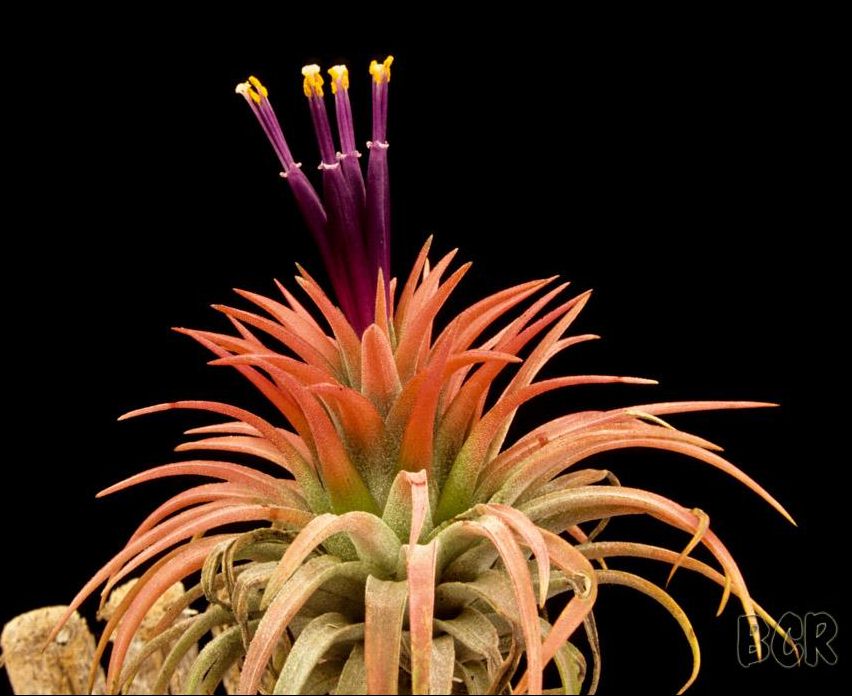
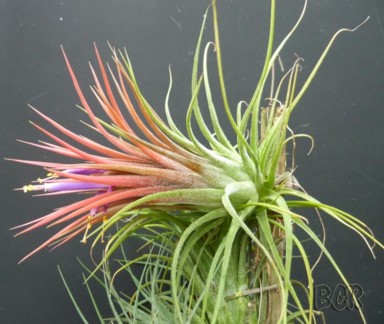
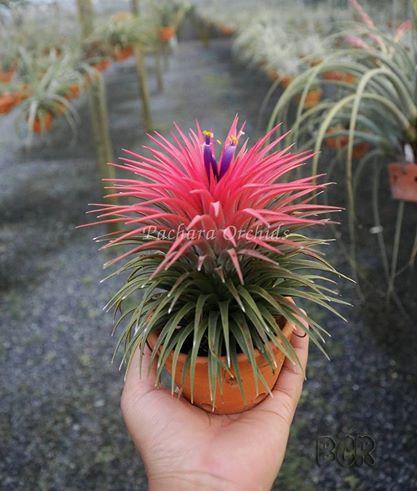

BCR=#8116, photo: Pamela Koide-Hyatt |
BCR=#13195, photo: Tanja Richter |
BCR=#15066, photo: Pachara Orchids |
BCR=#15065, photo: Pachara Orchids |

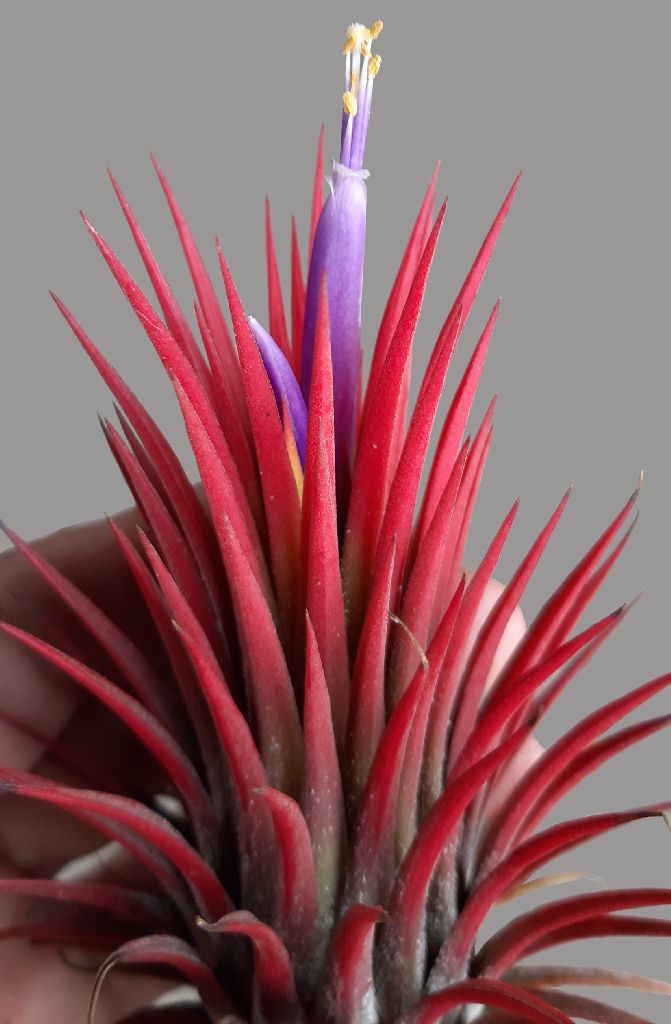
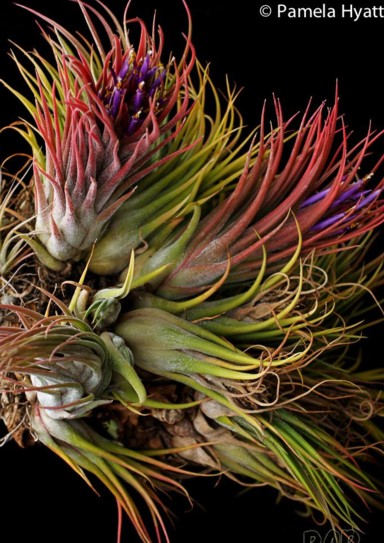
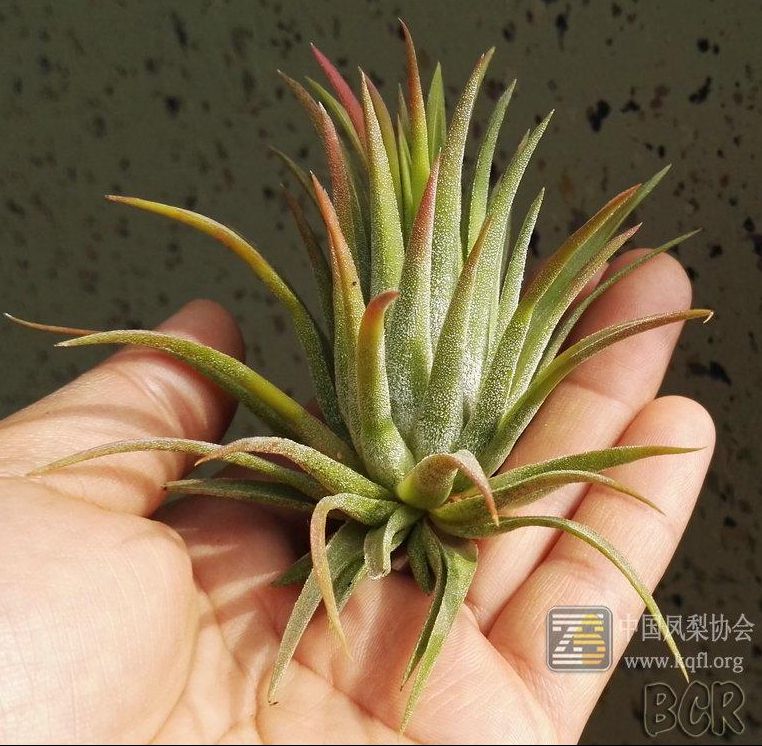
BCR=#15065, photo: Pachara Orchids |
BCR=#15454, photo: Claudio D Sanchez |
BCR=#11524, photo: Pamela Koide Hyatt |
BCR=#13390, photo: Jane Wu |
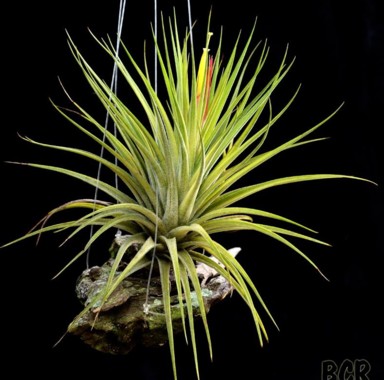
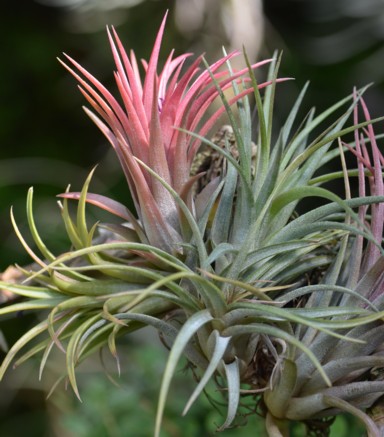
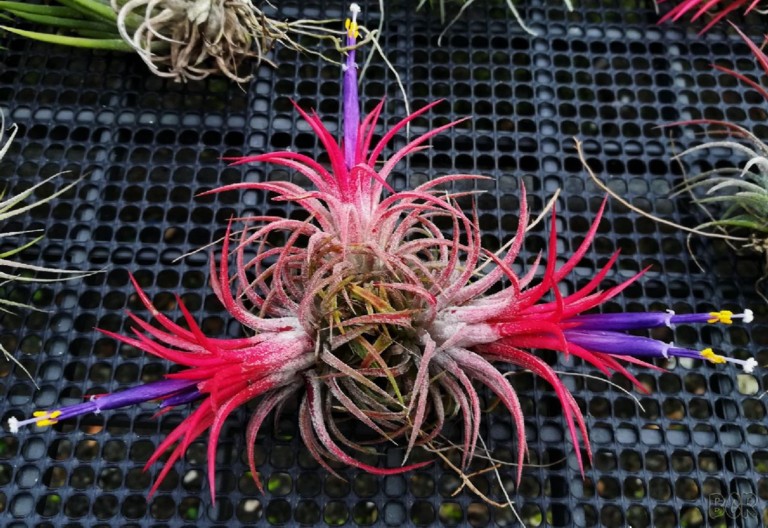

BCR=#13954, photo: Andy Tan |
BCR=#12453, photo: Eric Gouda |
BCR=#14150, photo: Woody Kaotun |
spare, photo: . |
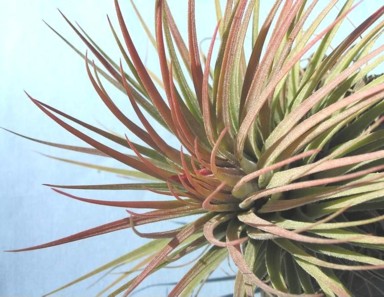

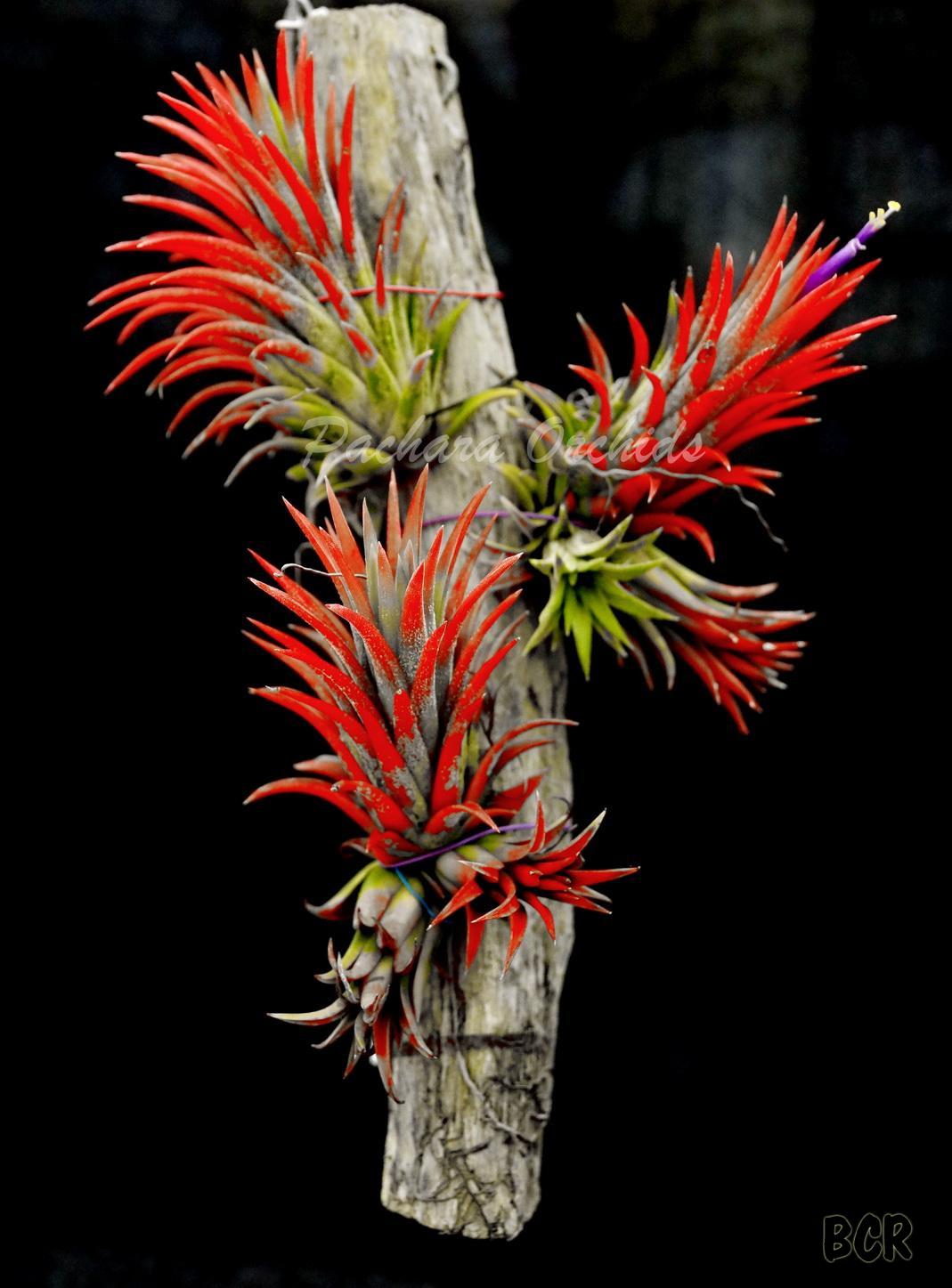
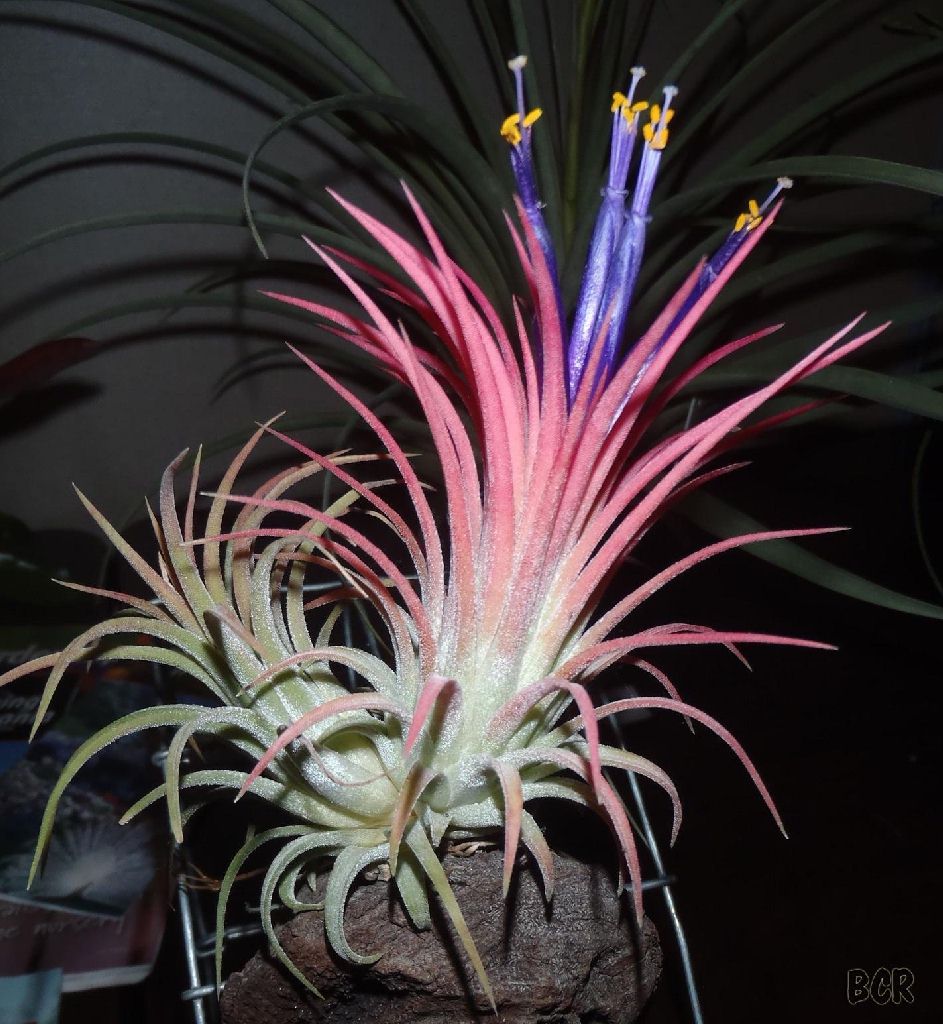
BCR=#8164, photo: Derek Butcher |
BCR=#8165, photo: Derek Butcher |
BCR=#15064, photo: Pachara Orchids |
BCR=#12639, photo: Terry Davis |

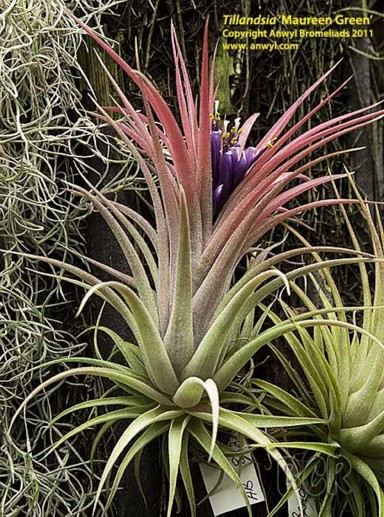
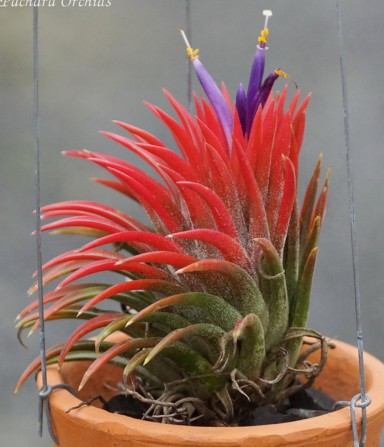
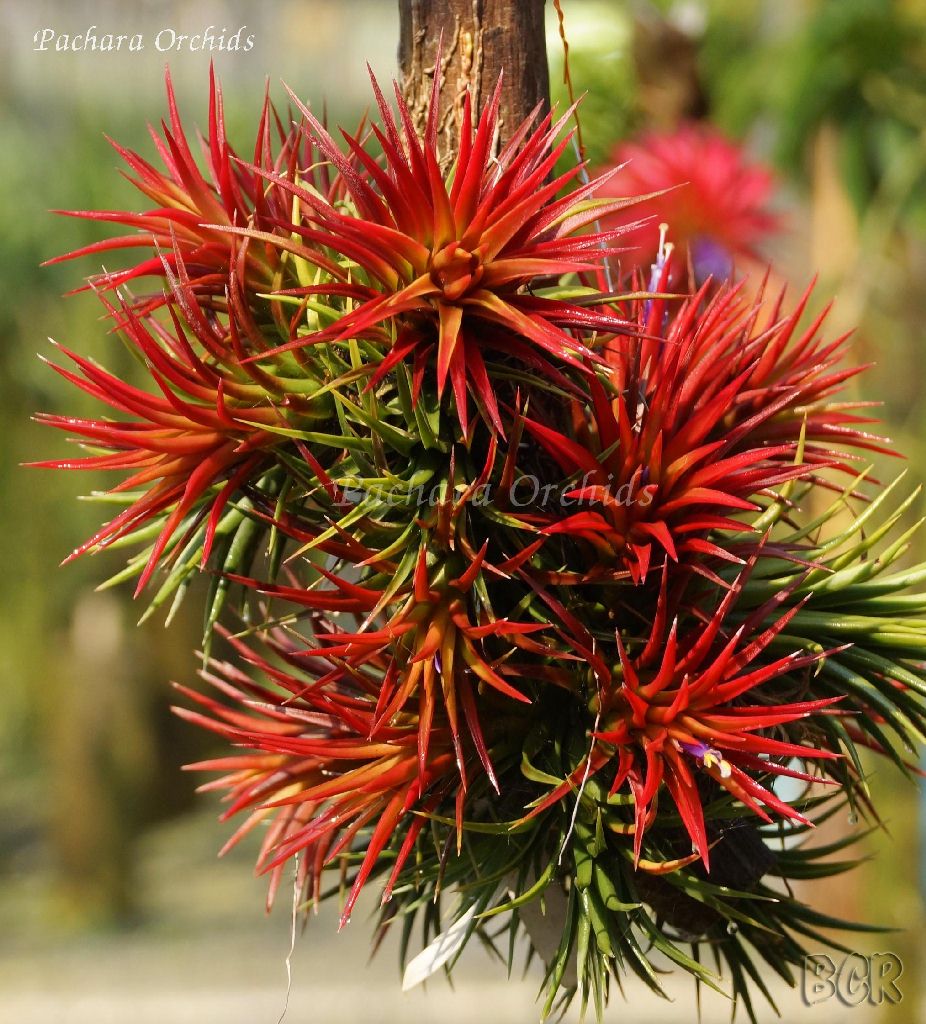
spare, photo: . |
BCR=#11788, photo: Andrew Flower |
BCR=#13768, photo: P Pacharapong |
BCR=#14084, photo: P. Pacharapong, Pachara Orchids |
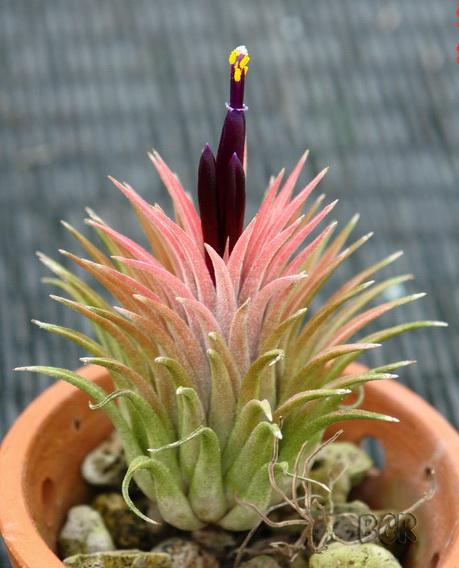
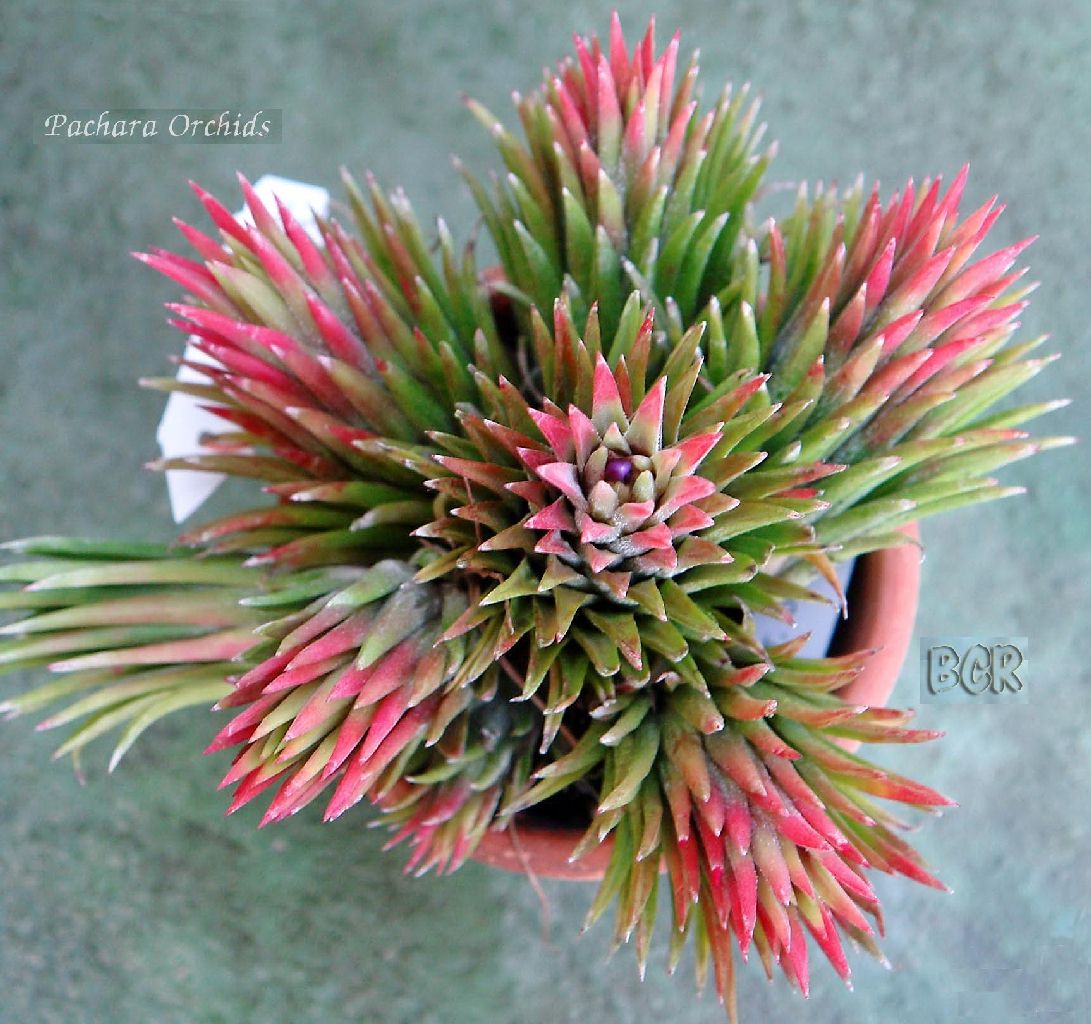
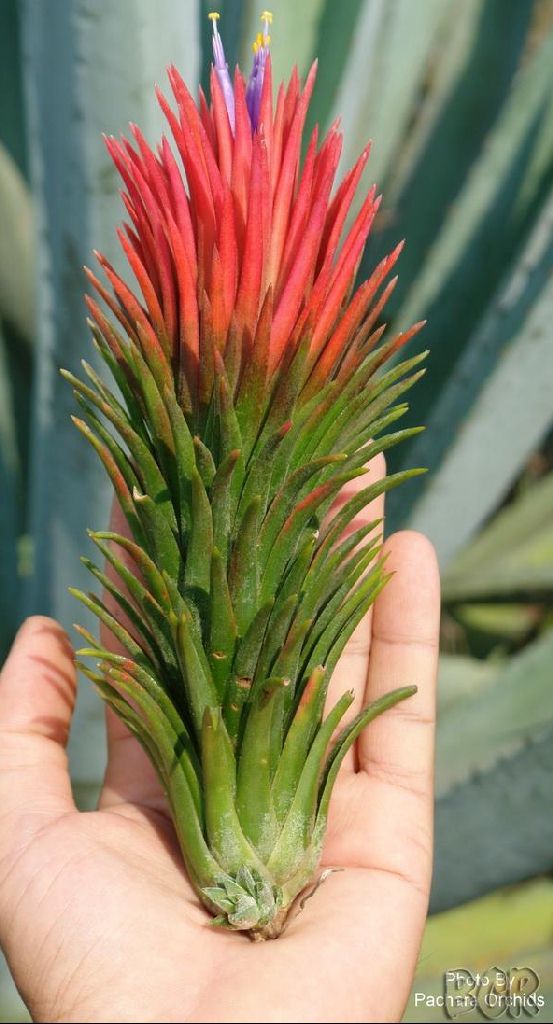
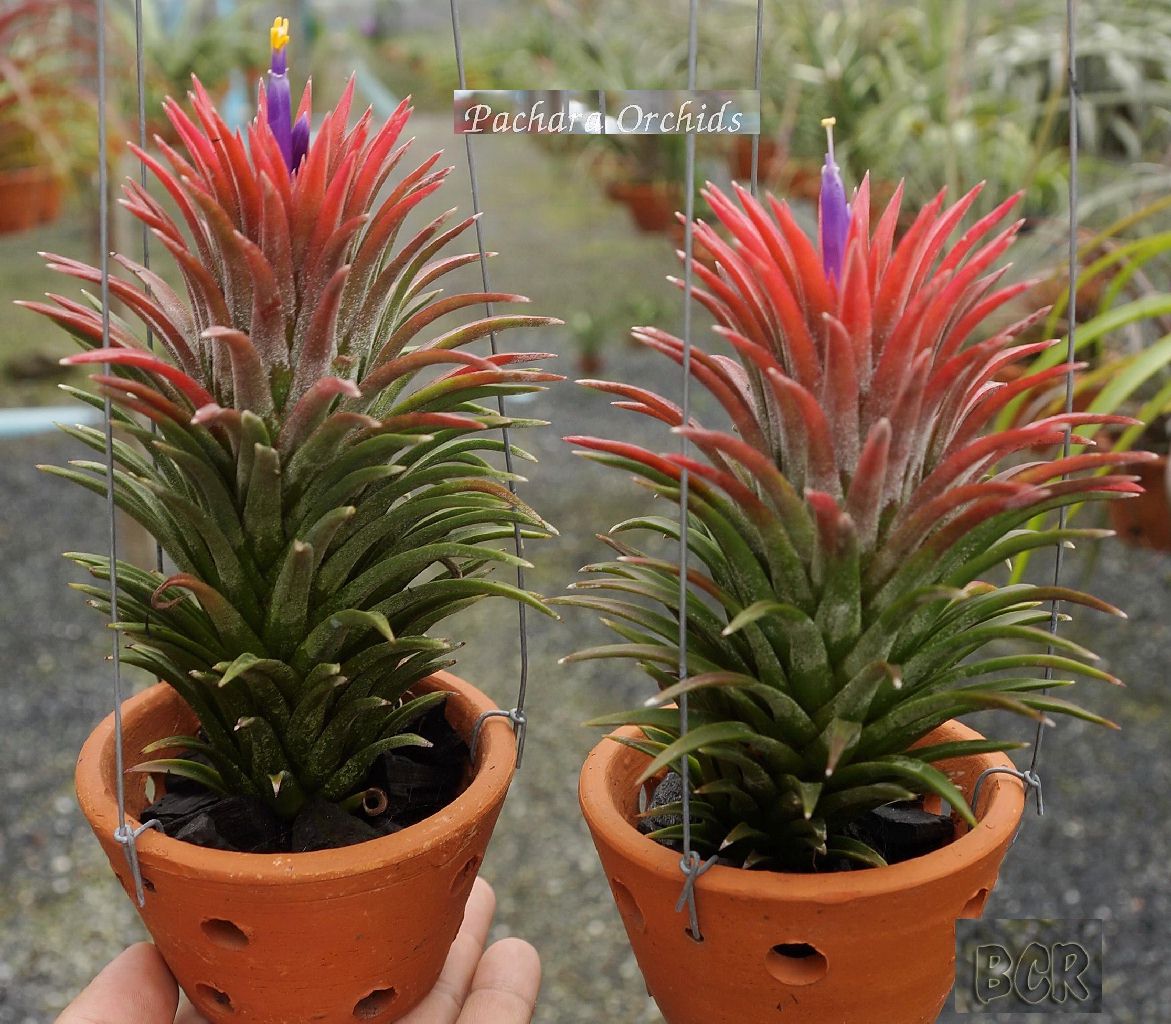
BCR=#14060, photo: P. Pacharapong |
BCR=#14061, photo: P. Pacharapong |
BCR=#12648, photo: Pachara Orchids |
BCR=#14038, photo: P. Pacharapong |
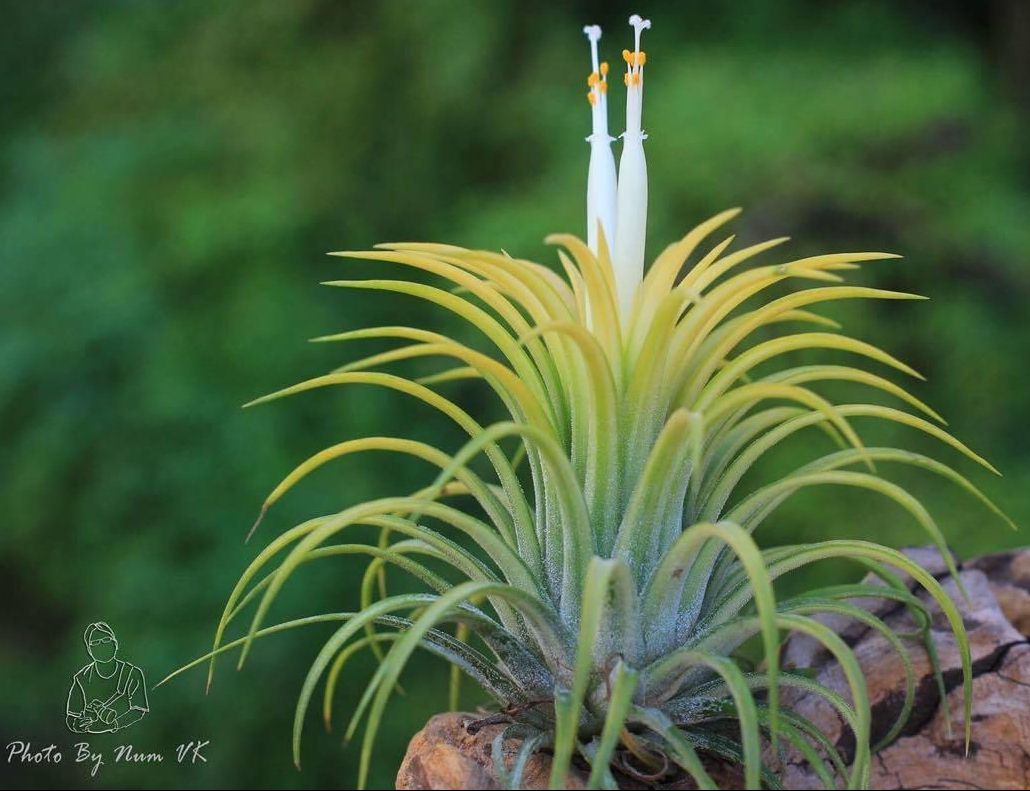
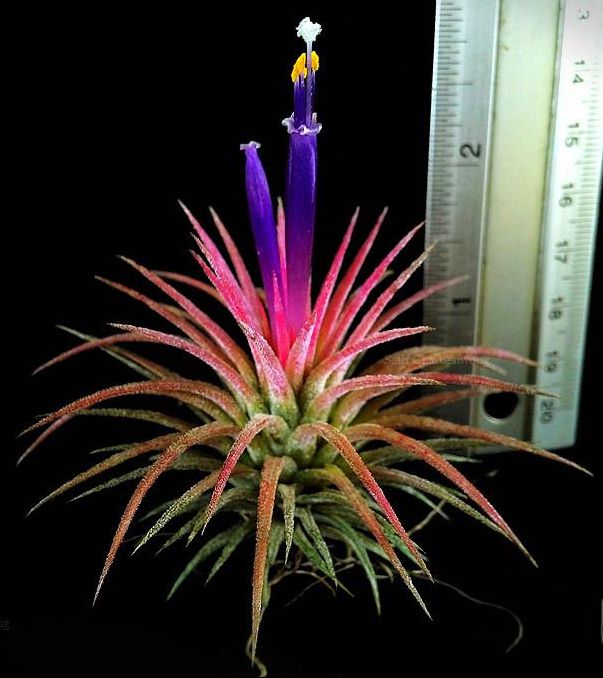
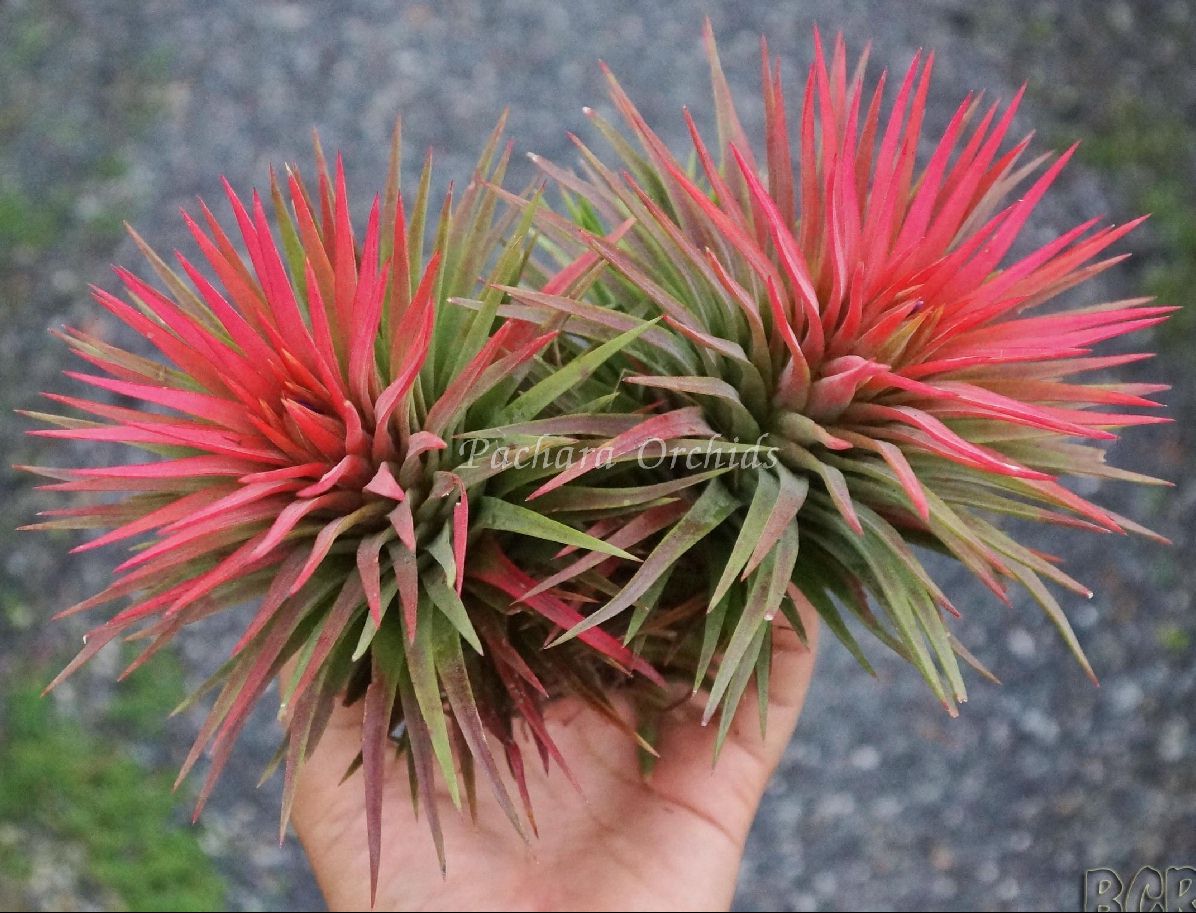
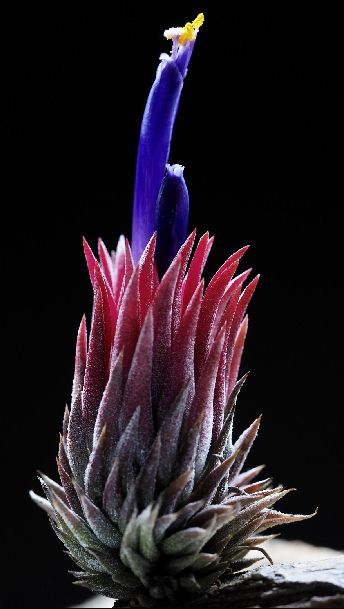
BCR=#14495, photo: Warairak Charoenchan |
BCR=#13170, photo: Seth Charoenwong |
BCR=#15085, photo: Pachara Orchids |
BCR=#15854, photo: Mi Mi Lee |
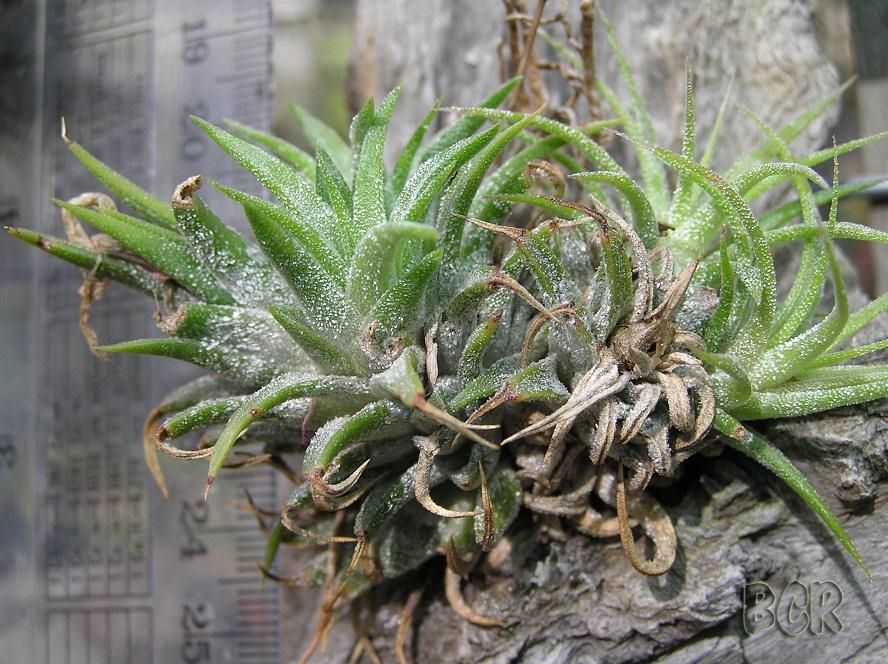
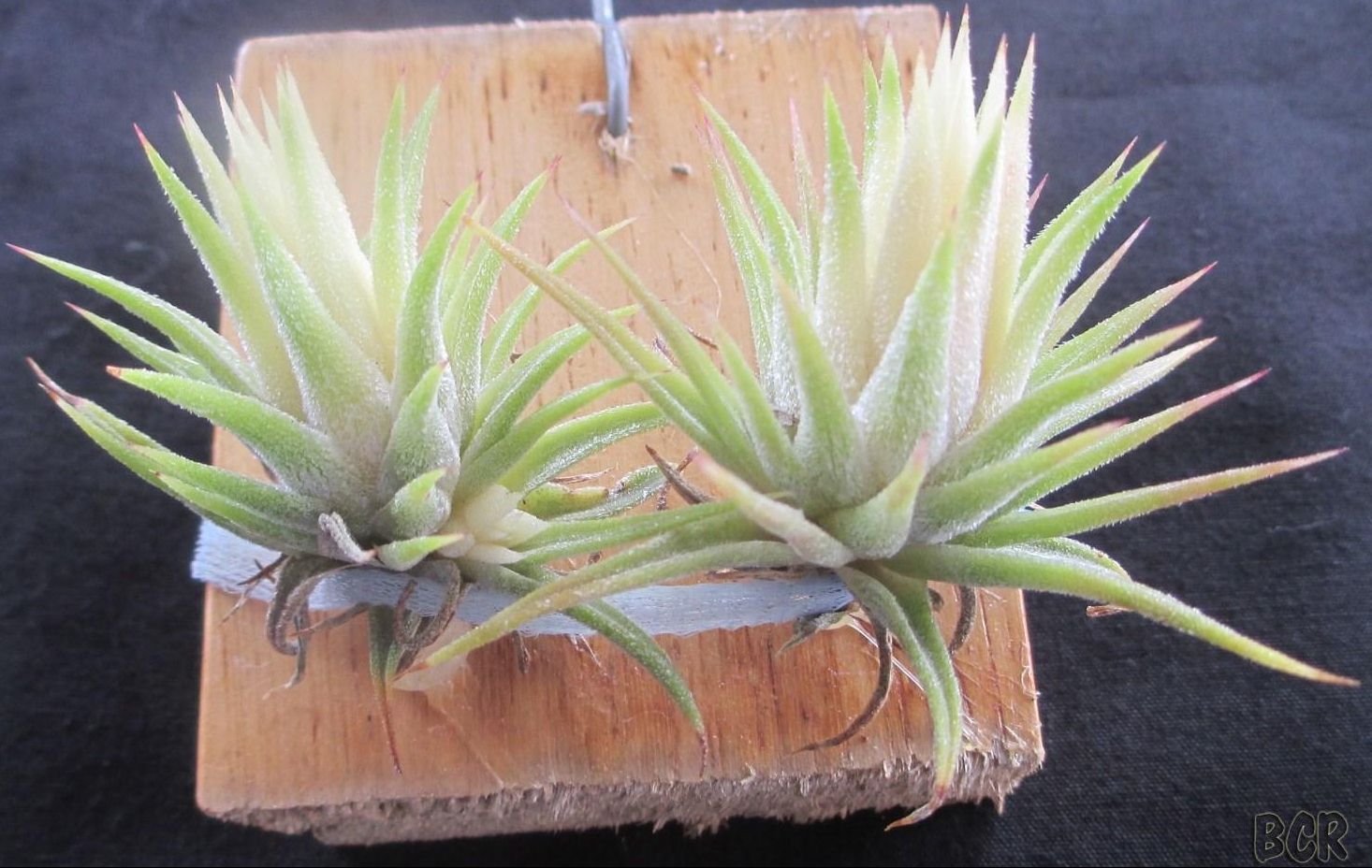
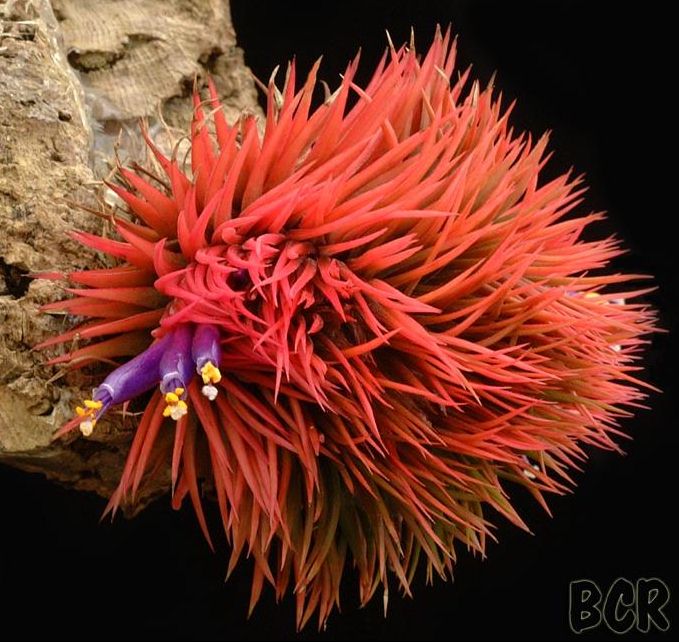
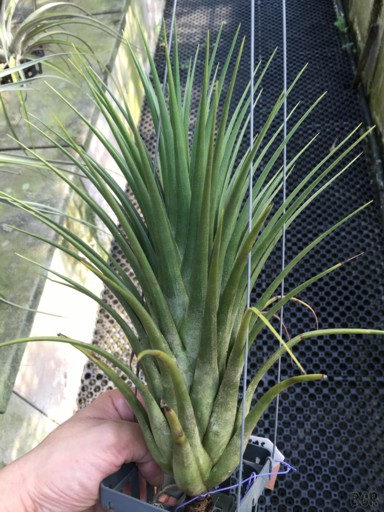
BCR=#10143, photo: Derek Butcher |
BCR=#11748, photo: Bob Hudson |
BCR=#12641, photo: Paul Isley |
BCR=#10083, photo: Edwin Ho |
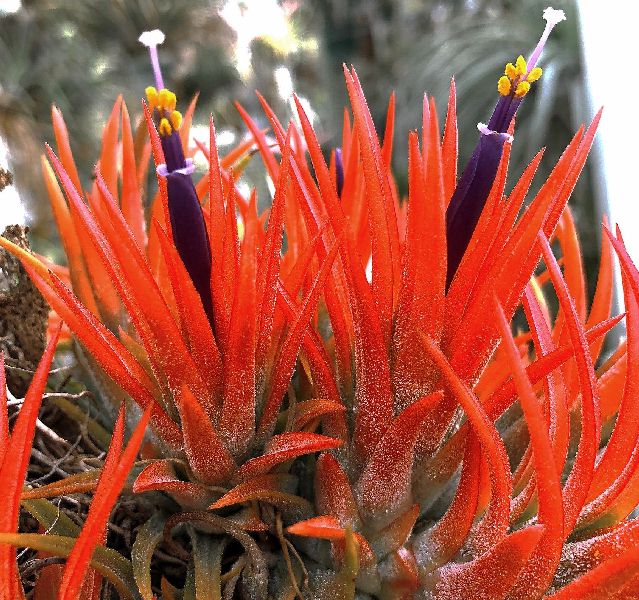
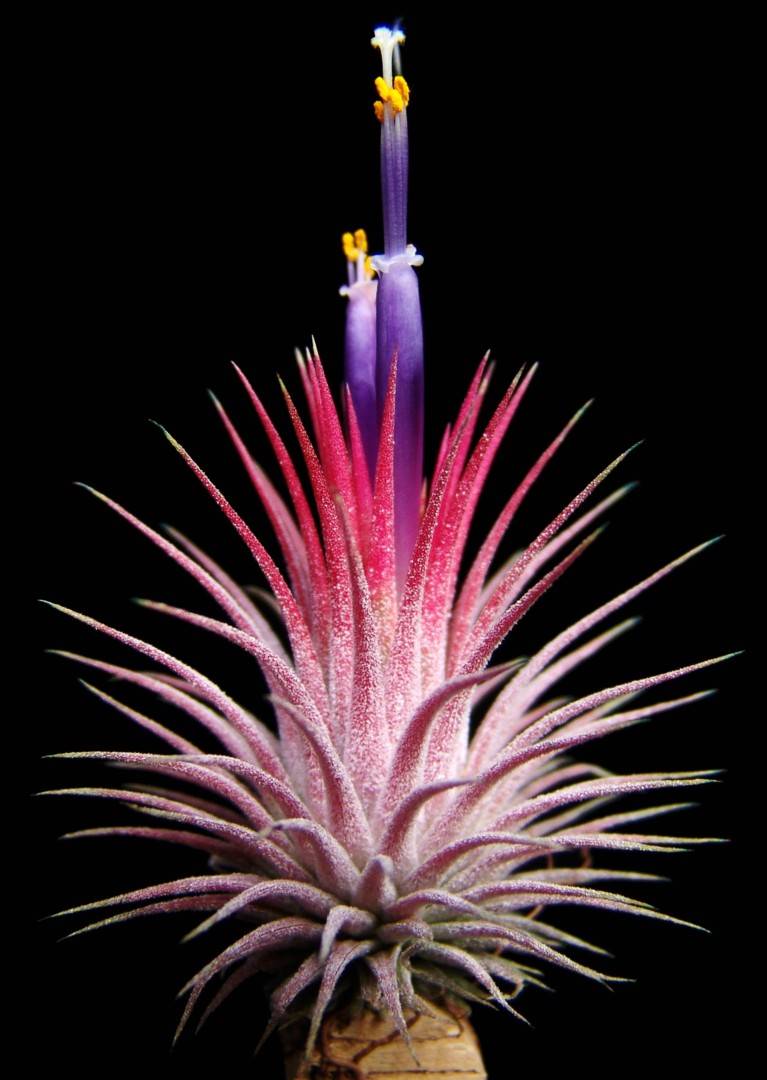
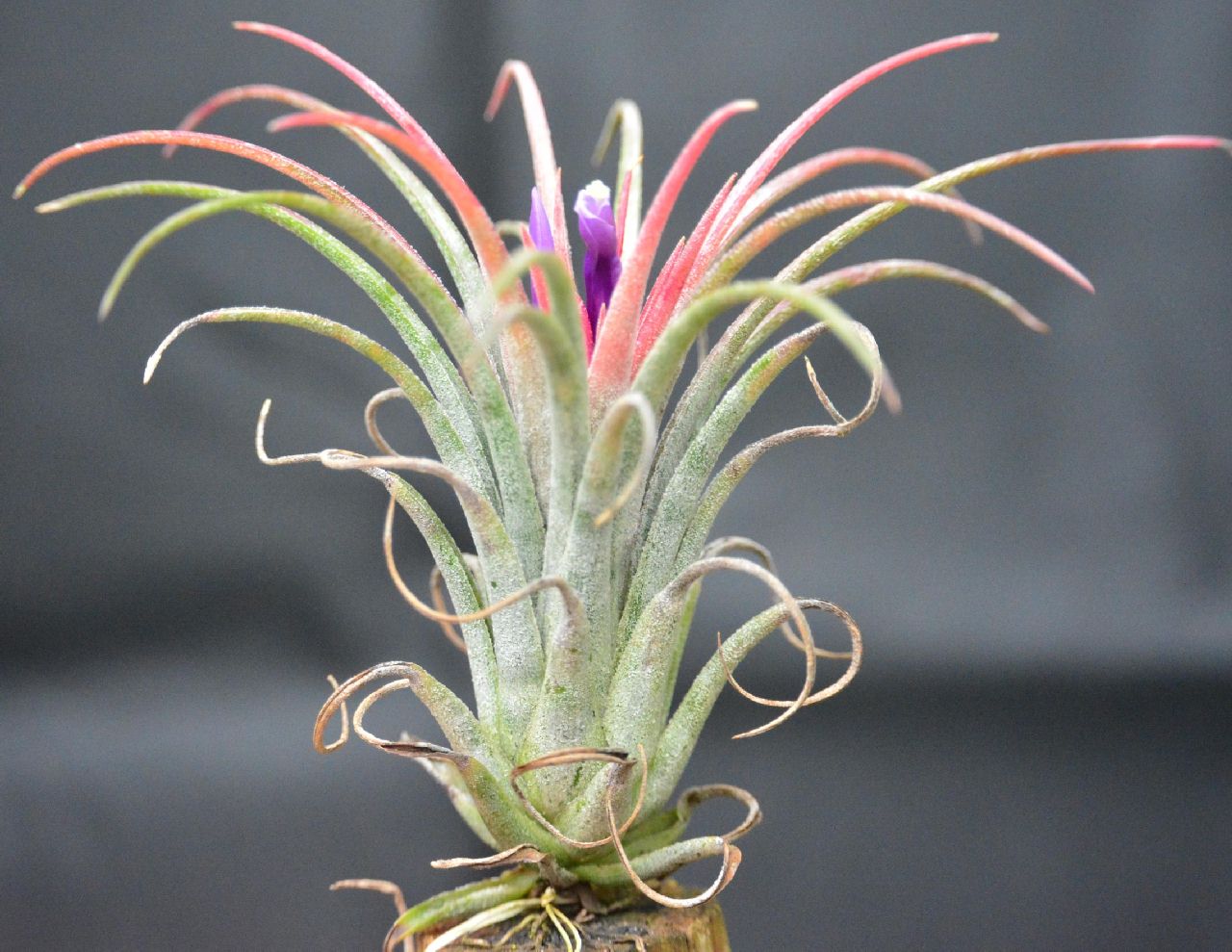
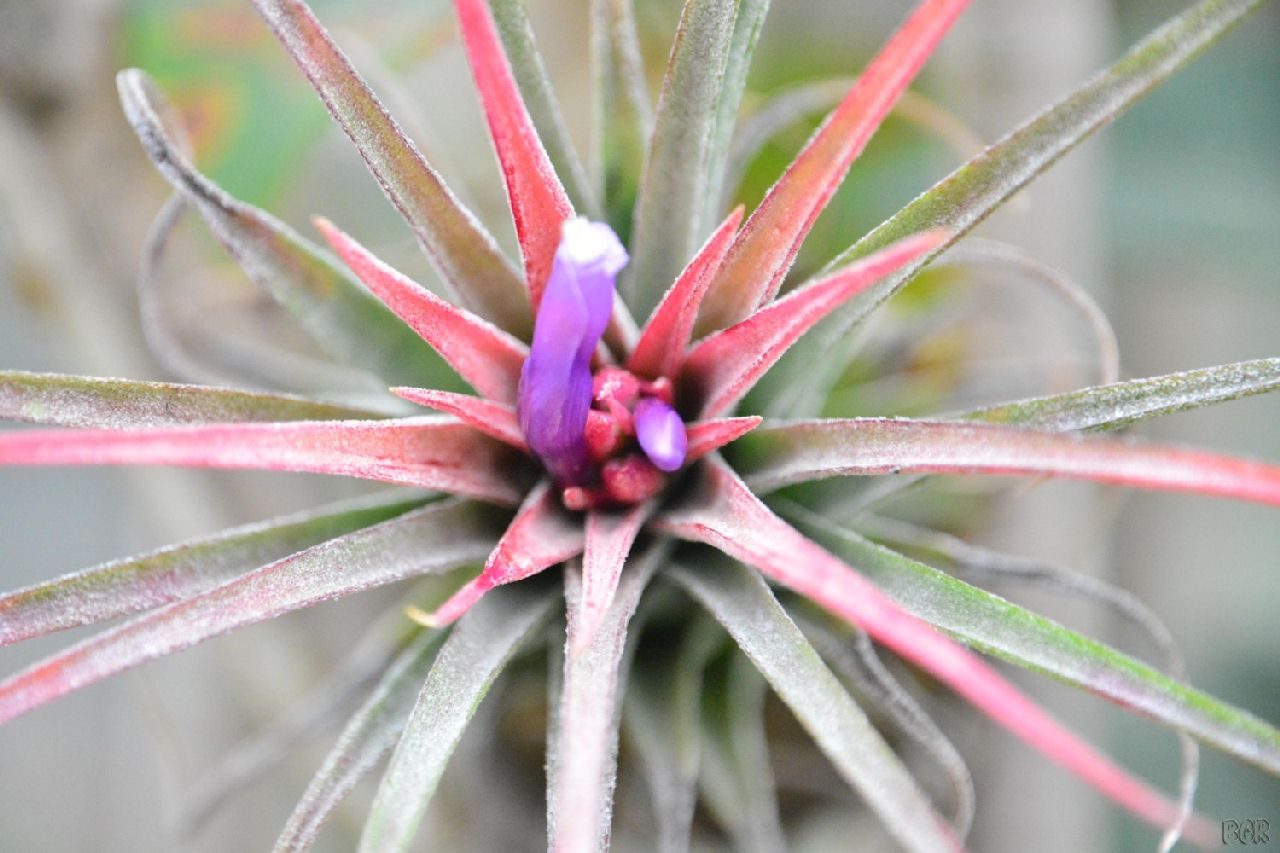
BCR=#15880, photo: Hiroyuki Takizawa |
BCR=#16591, Haselnuss x Druid. photo: Zhijian Wu |
BCR=#14708, Fuego x Druid. photo:BCR |



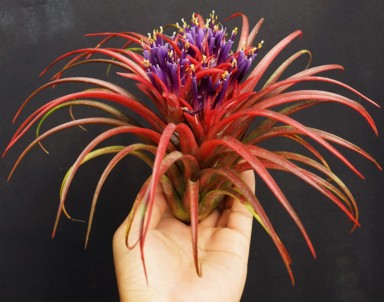
spare, photo: . |
BCR=#12645, photo: Pachara Orchids |
BCR=#13076, photo: Patpong Pacharapong |
BCR=#12623, photo: Patpong Pacharapong |

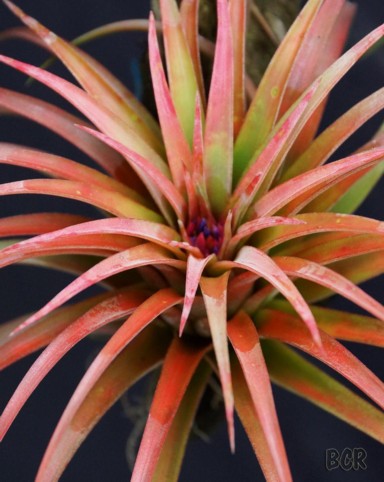
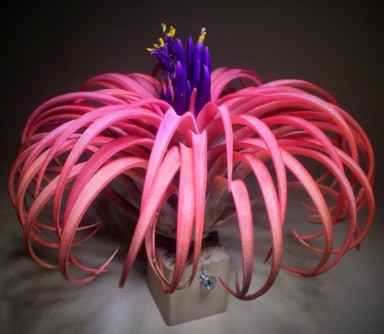
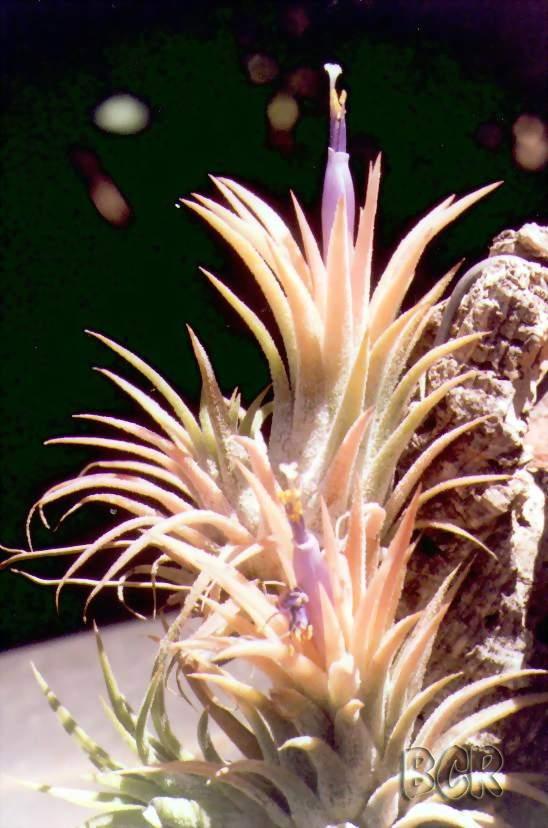
BCR=#11196, photo: Pachara Orchids |
BCR=#13094, photo: Pachara Orchids(left) Xiao Kong(right, at flowering) |
BCR=#8219 |

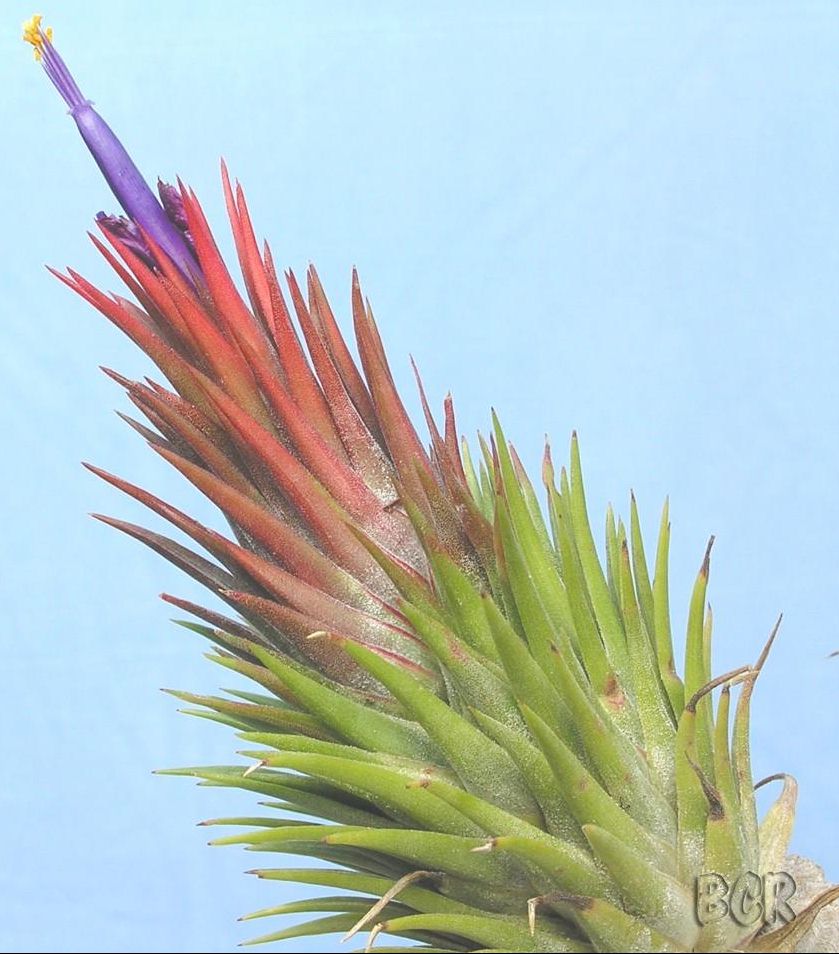
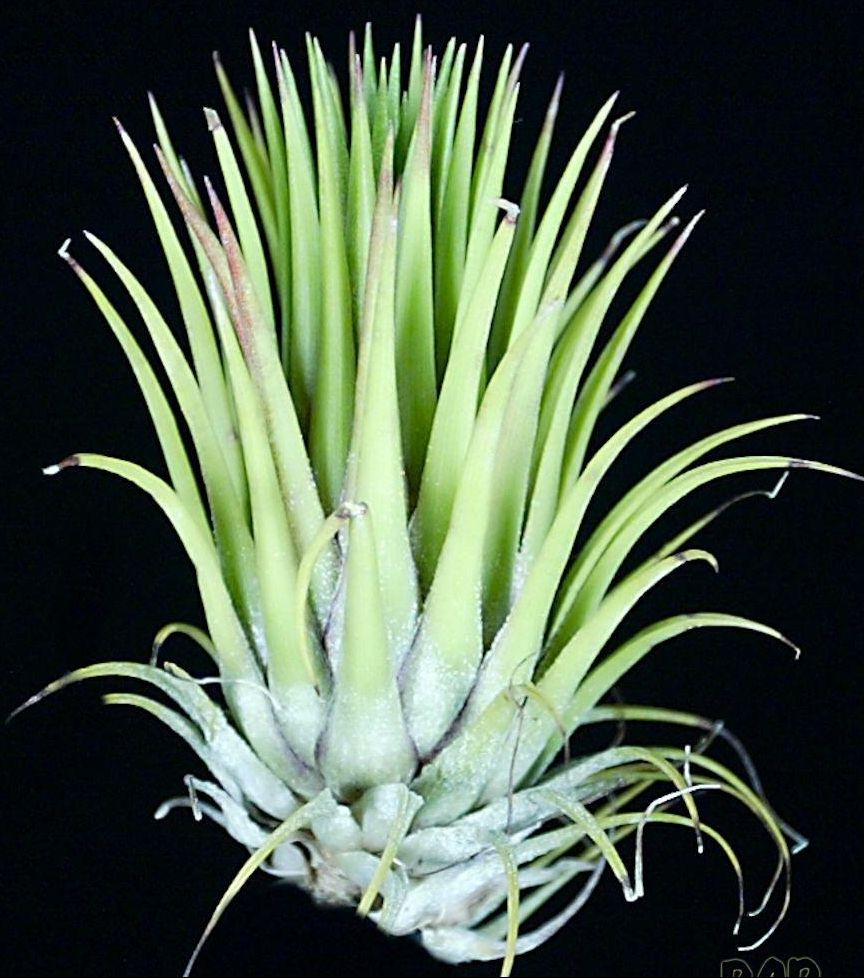
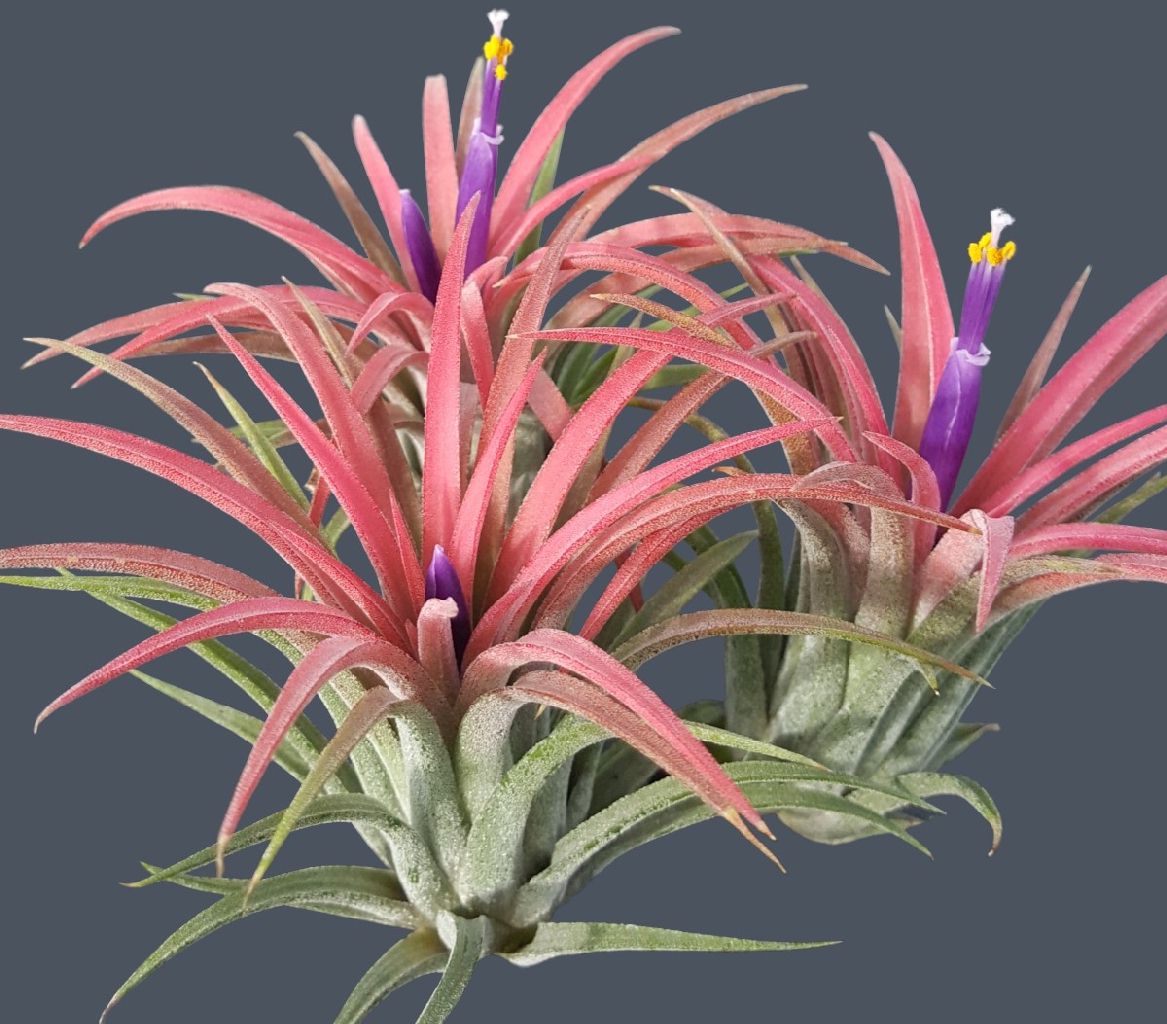
BCR=#8221 |
BCR=#8224, photo: |
BCR=#8229, photo: Dennis Cathcart |
BCR=#14915, photo: Chris Larson |
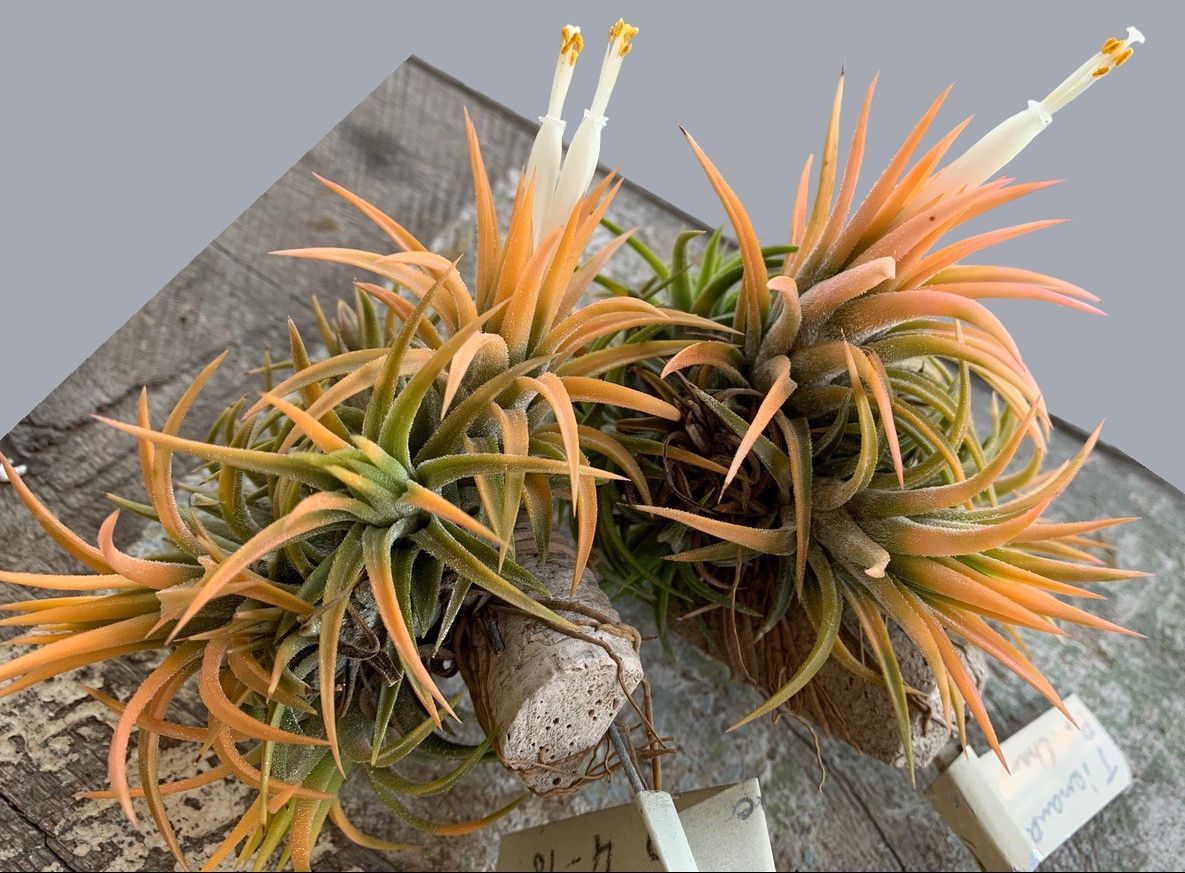
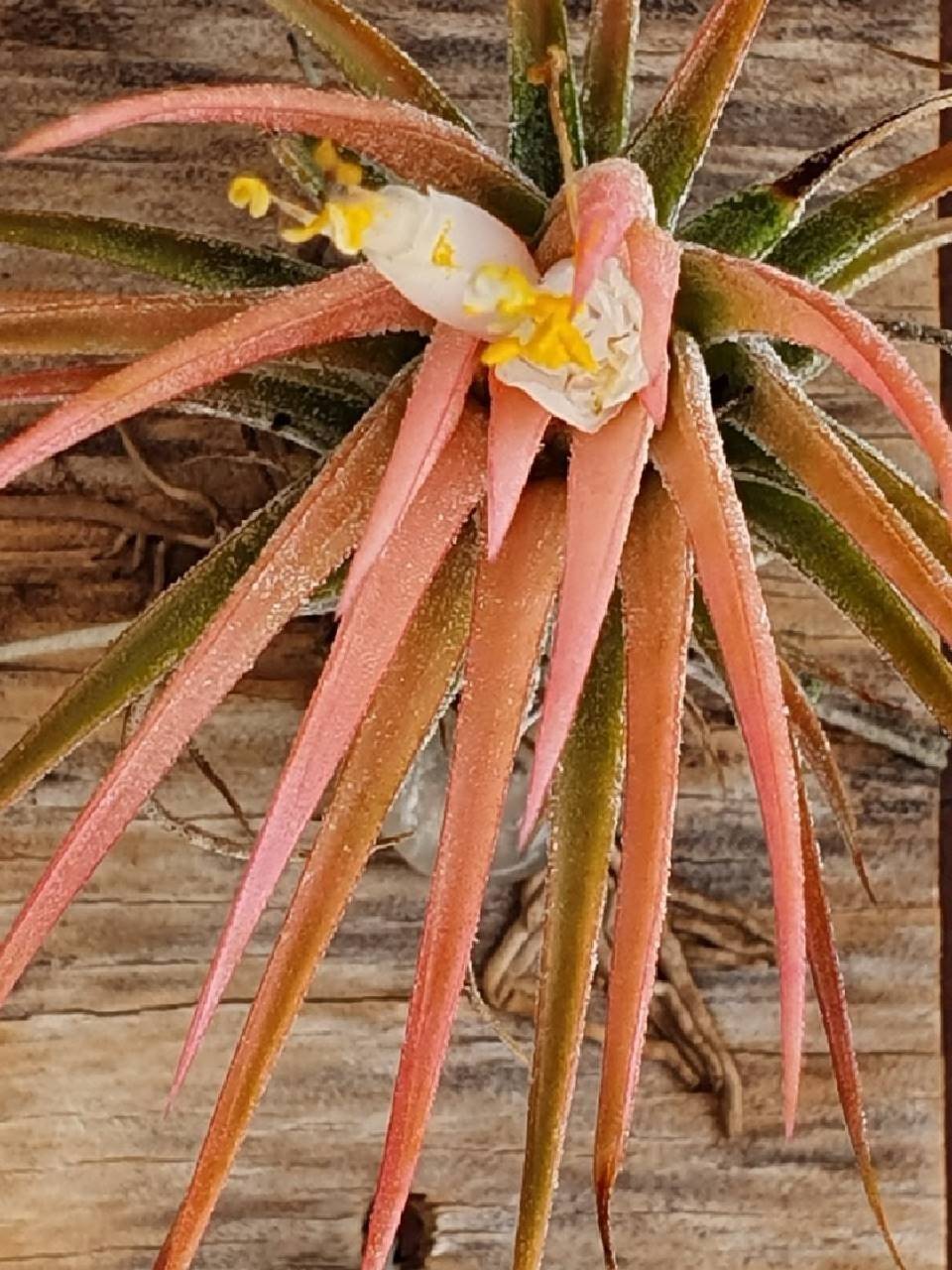
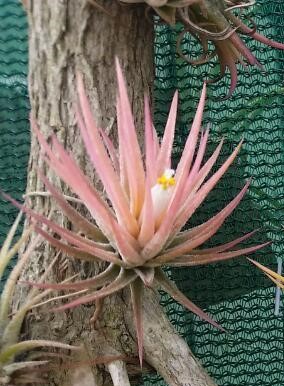
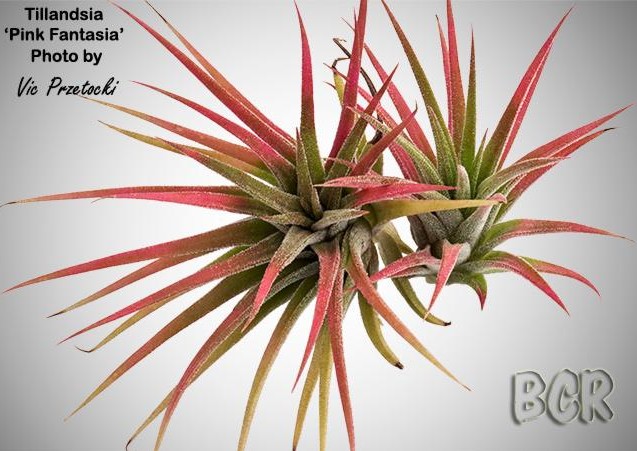
BCR=#8230 |
BCR=#16399 |
BCR=#15420, photo: Vic Przetocki |
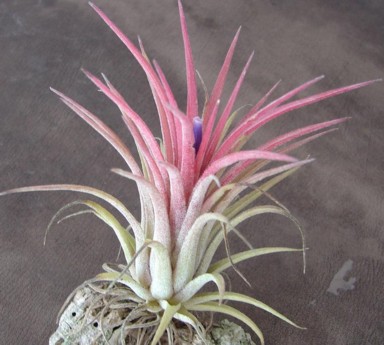
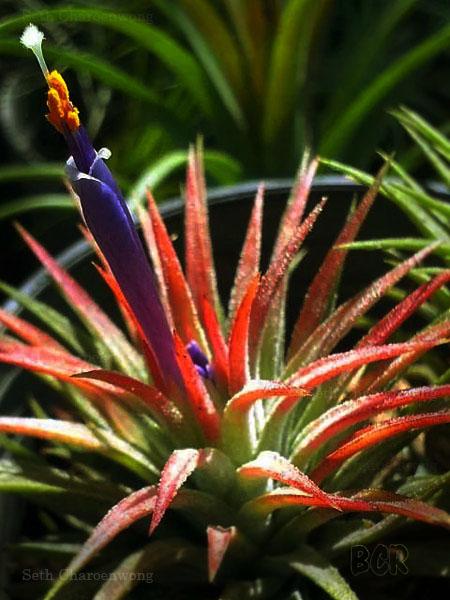
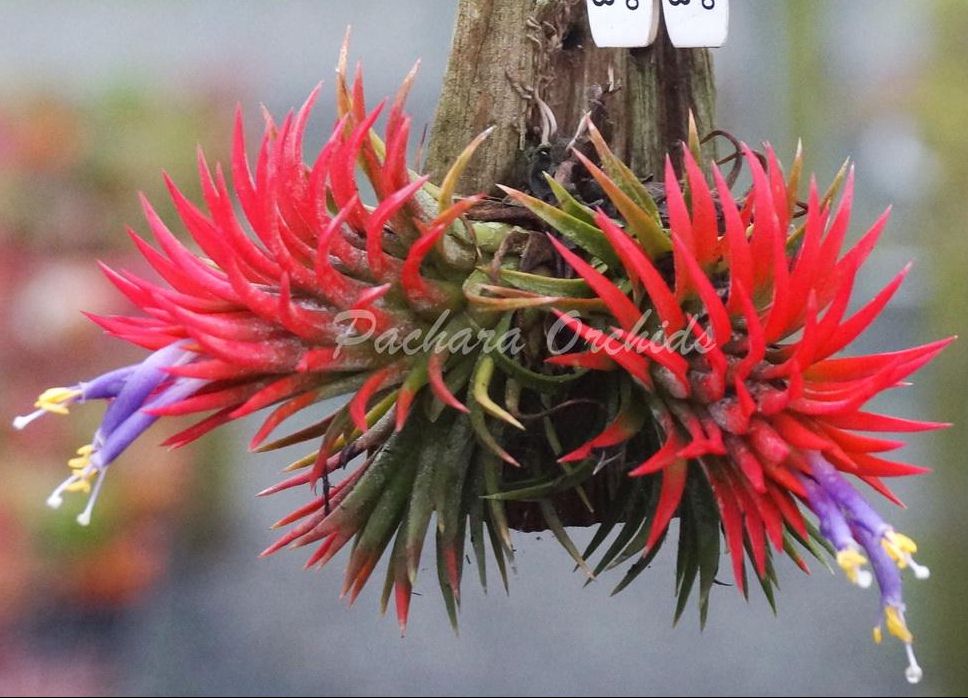

BCR=#10946, photo: Bill Timm |
BCR=#12609, photo: Seth Charoenwong |
BCR=#15067, photo: Pachara Orchids |
BCR=#12731, photo: Paul Isley |
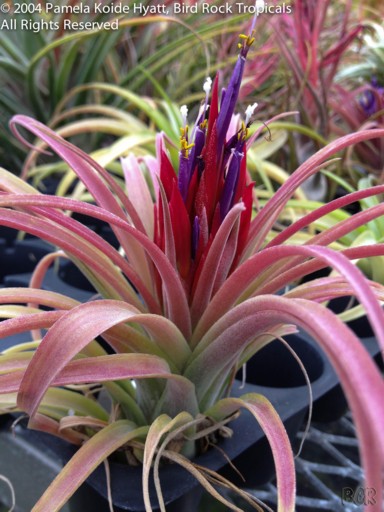

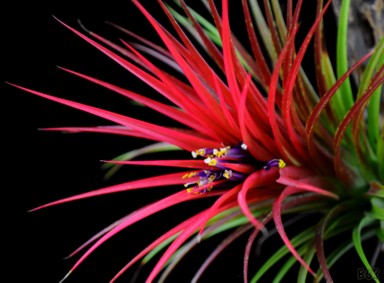
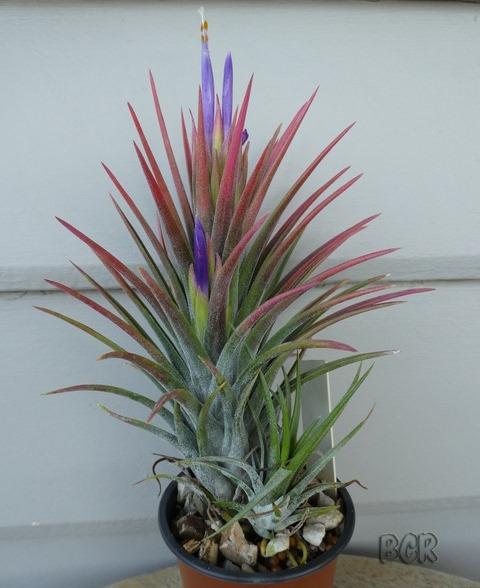
BCR=#11380, photo: Pamela Koide Hyatt |
BCR=#10085, photo: Bill Timm |
BCR=#11544, photo: Andy Tan |
BCR=#16511, photo: Bruce Dunstan |
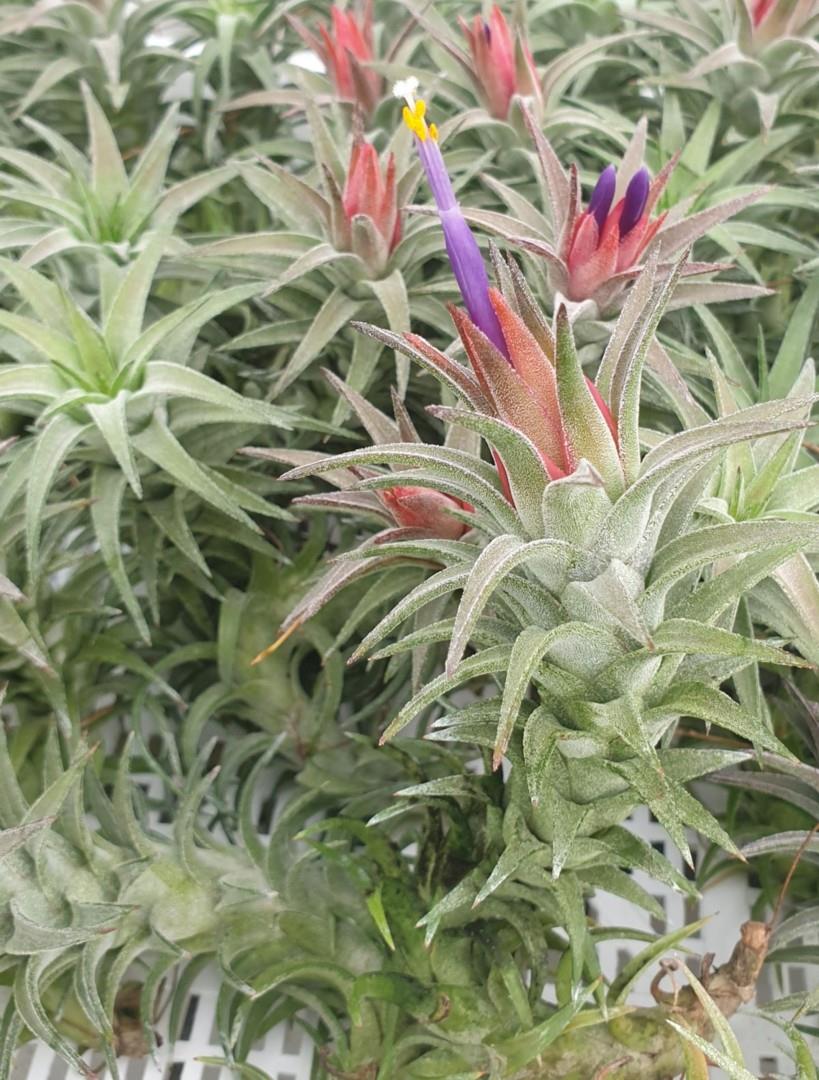



cv? of var hyningii? Photo: Chris Larson |
spare, photo: . |
spare, photo: . |
spare, photo: . |
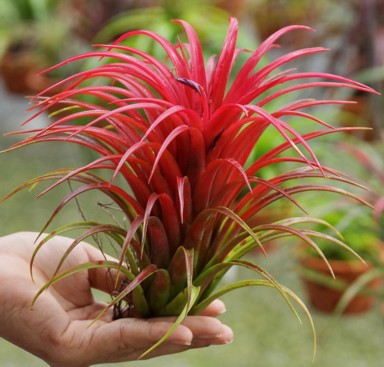
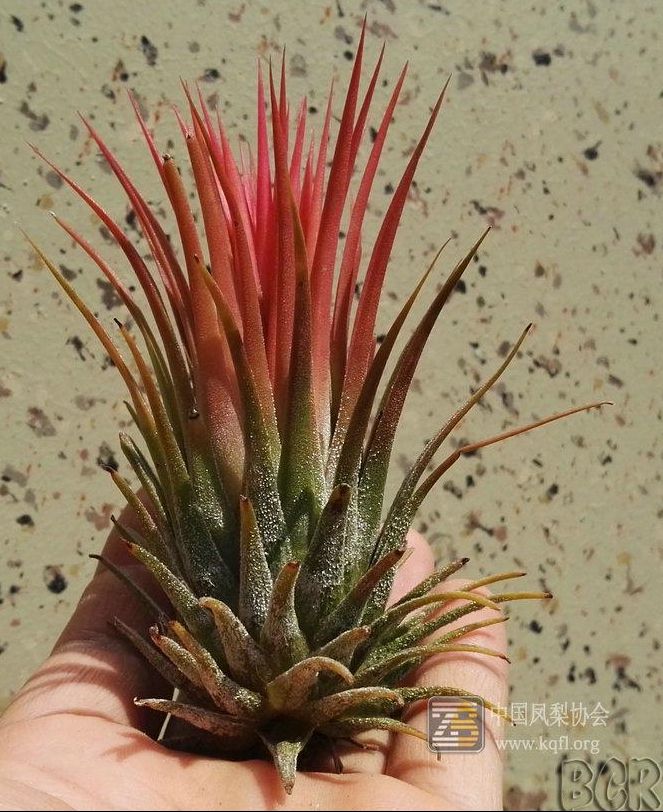
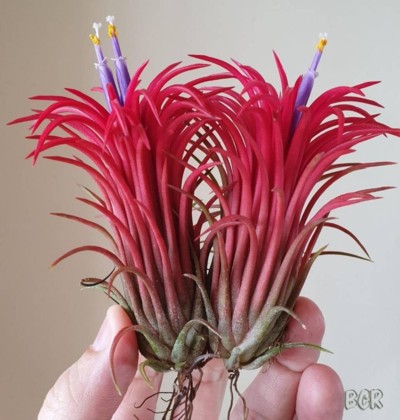
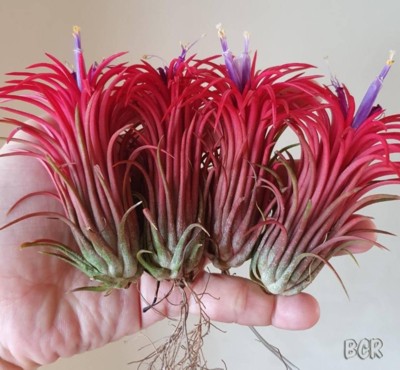
BCR=#13806, photo: P. Pacharapong |
BCR=#13391, photo: Joe Zhang |
BCR=#16410, photo: Kevin Tan |
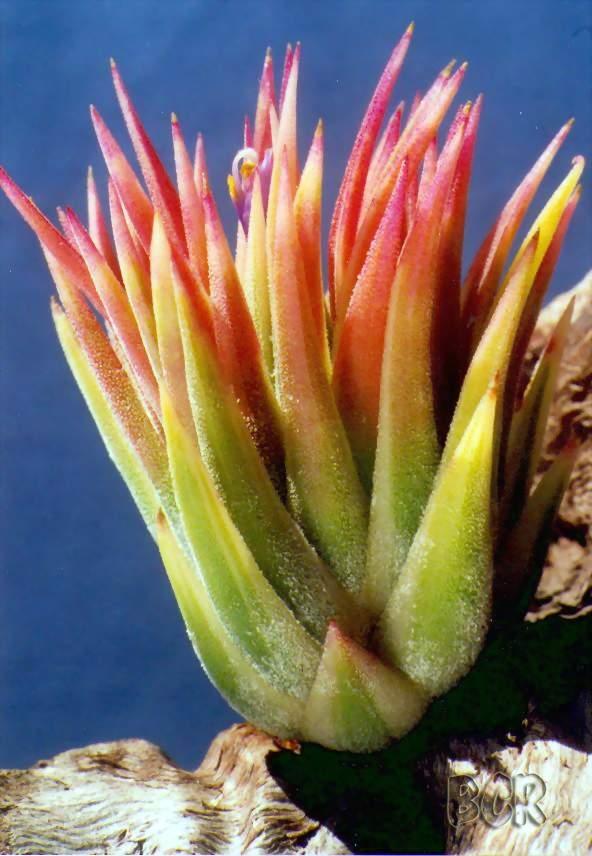

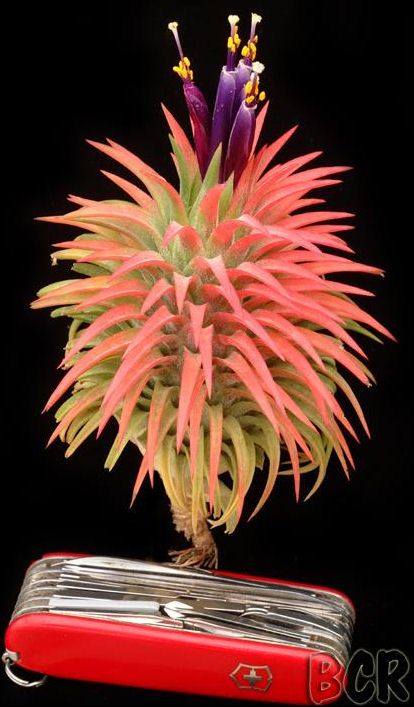

BCR=#8253, photo: -/Chris Larson See T. Renate on this web site for discussion. |
BCR=#12909, photo: Paul Isley |
BCR=#8259, photo: Bob Hudson |

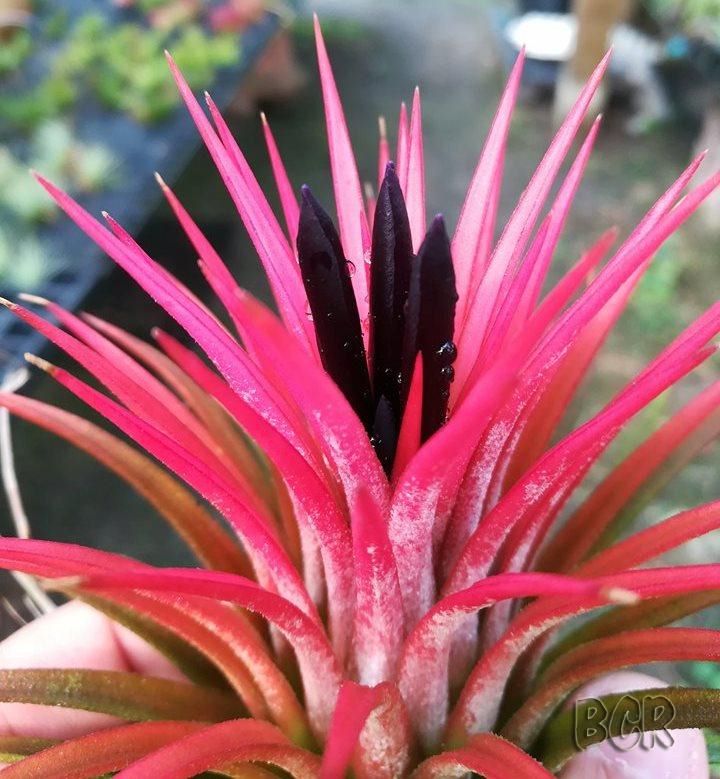
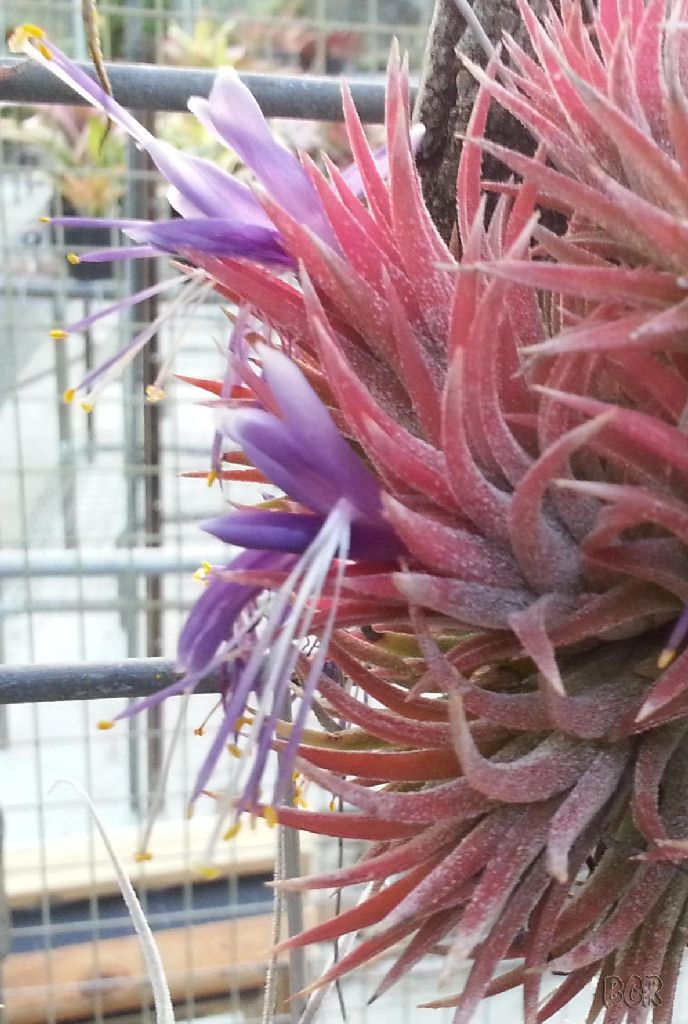
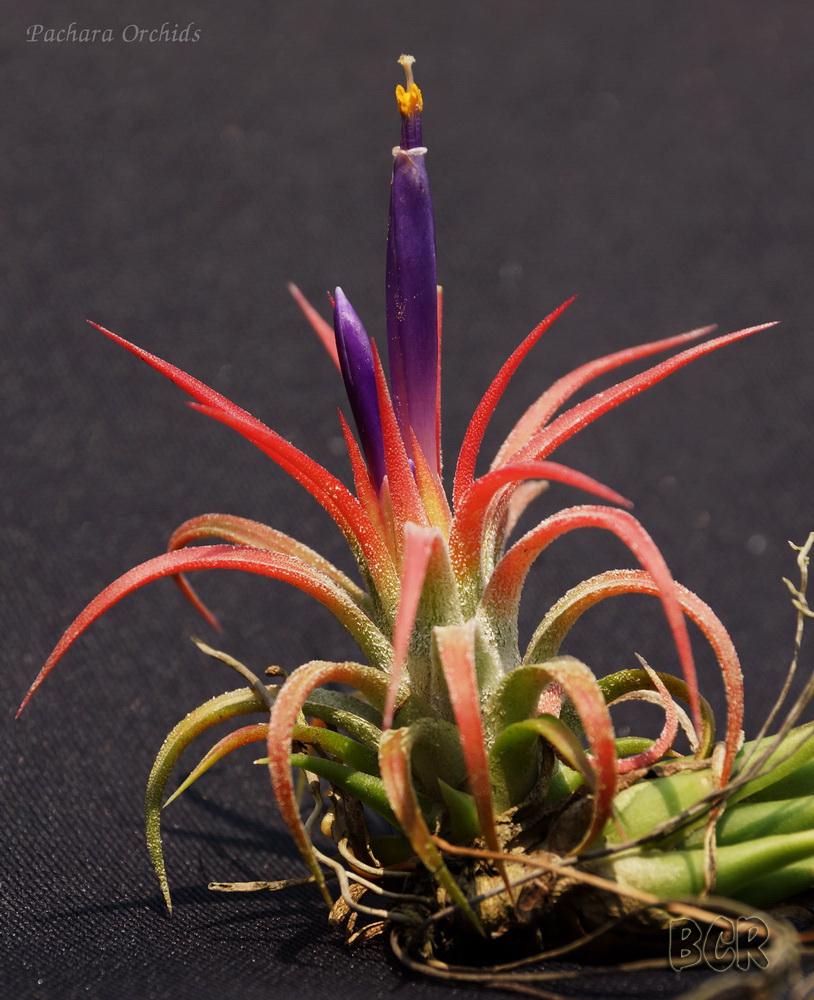
BCR=#8263, photo: Andrew Flower |
BCR=#14631, photo: Woody Kaotun |
BCR=#13952, photo: Grant Paterson |
BCR=#8283, photo: Pachara Orchids |
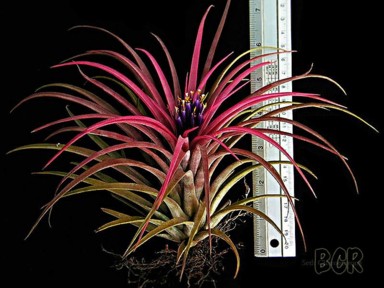
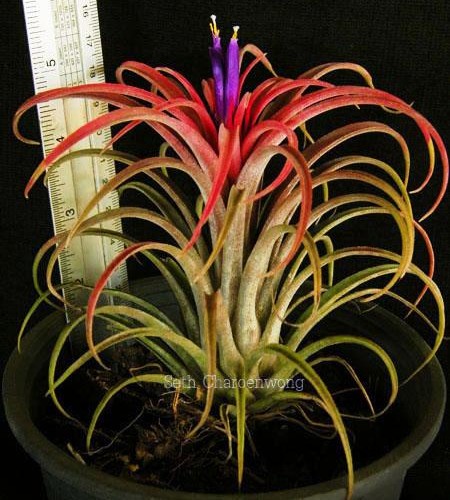
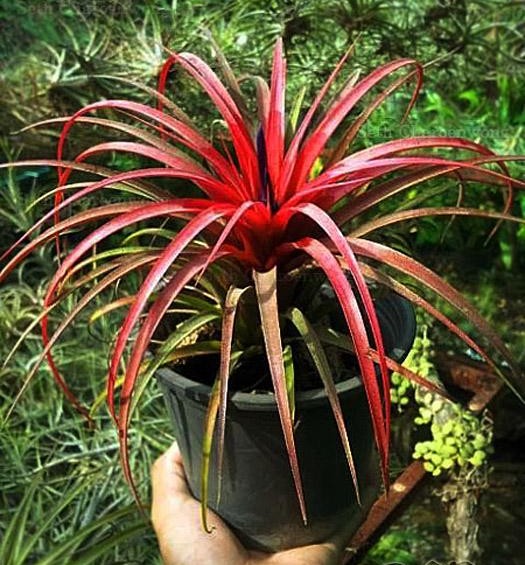
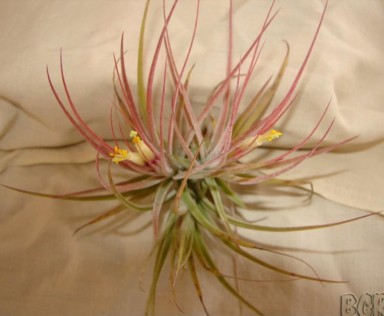
BCR=#13169, photo: Seth Charoenwong |
BCR=#12601, photo: Seth Charoenwong |
BCR=#13276, photo: Seth Charoenwong |
BCR=#10088, photo: Bill Timm |
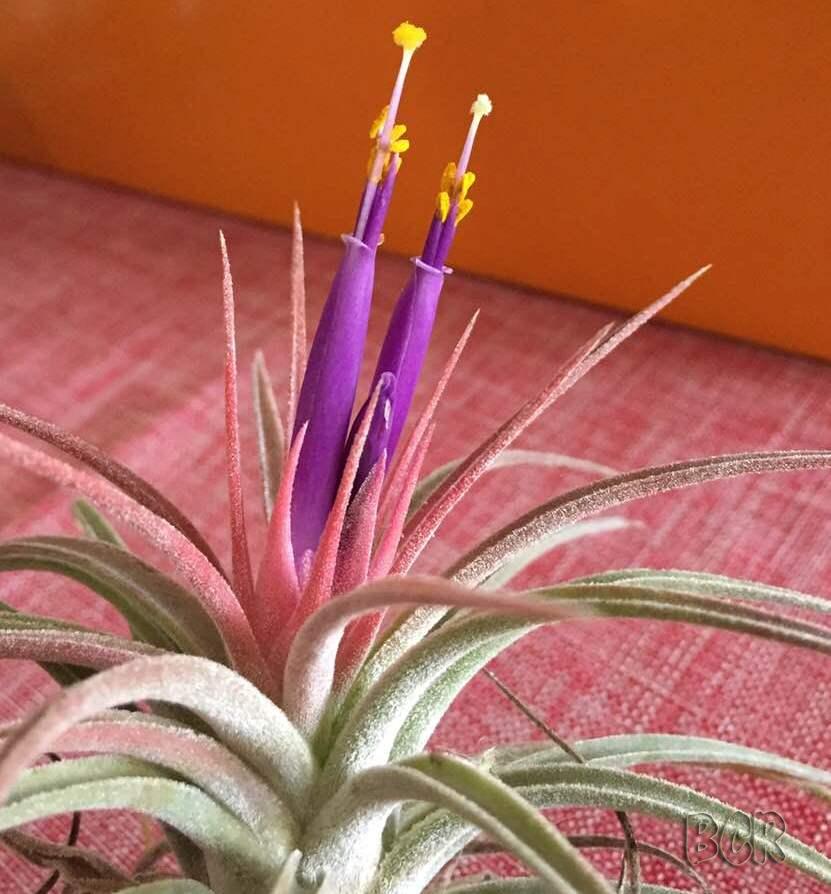
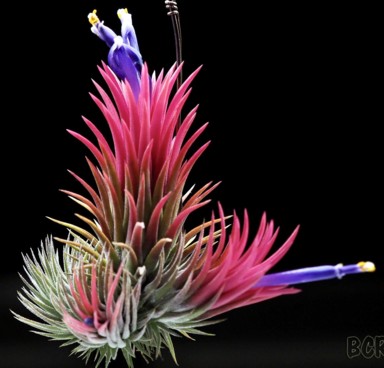
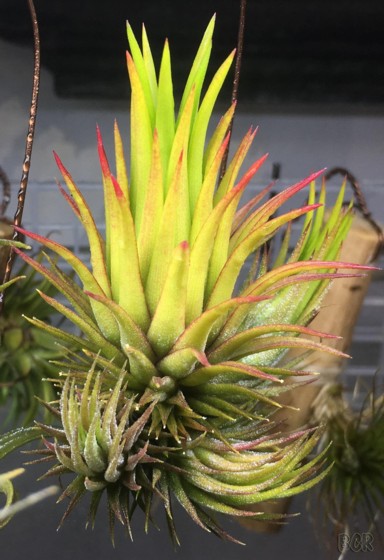

BCR=#8280, photo: Jenny Lynn |
BCR=#15886, photo: Mi Mi Lee |
BCR=#15881, photo: Hiroyuki Takizawa |
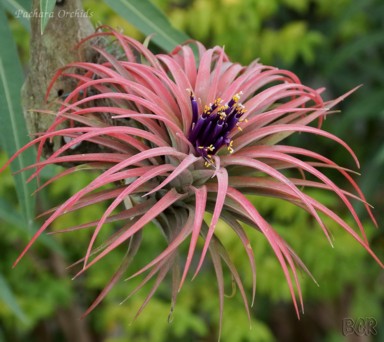

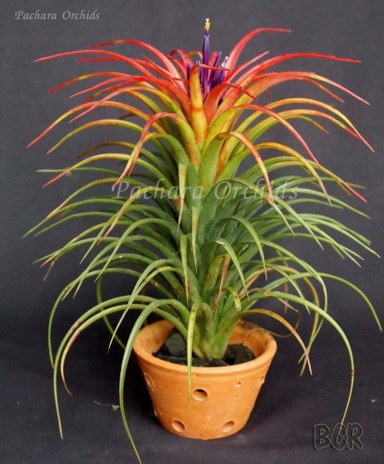

BCR=#14062, photo: P. Pacharapong |
BCR=#10144, photo: Ron Jell |
BCR=#14547, photo: P. Pacharapong |
BCR=#14751 |
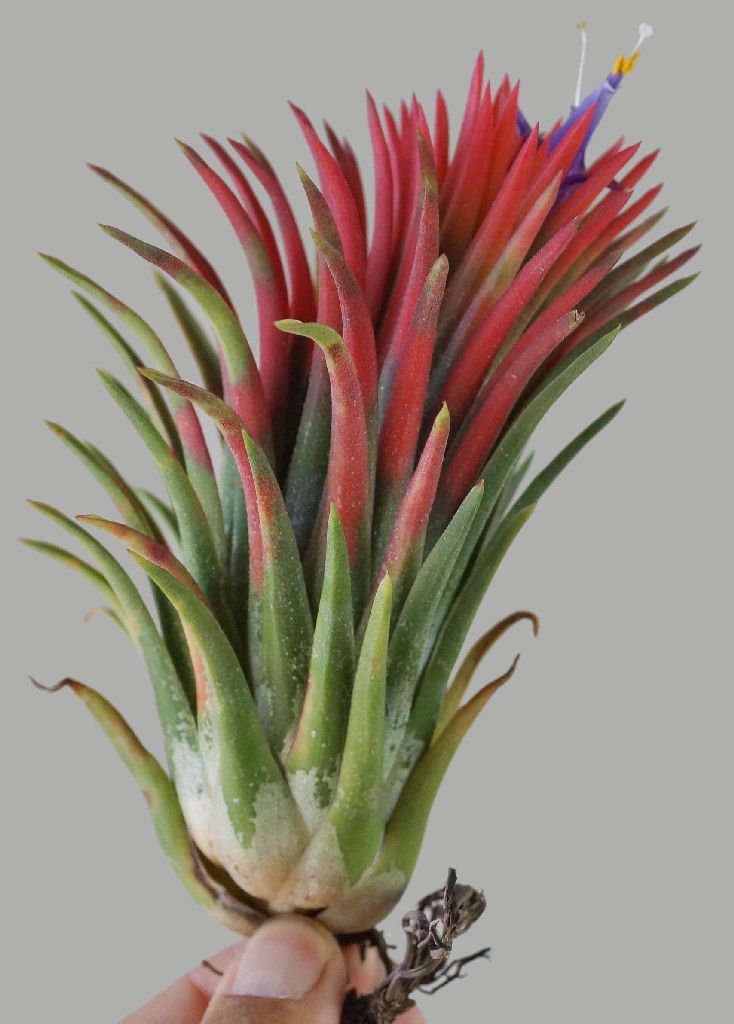
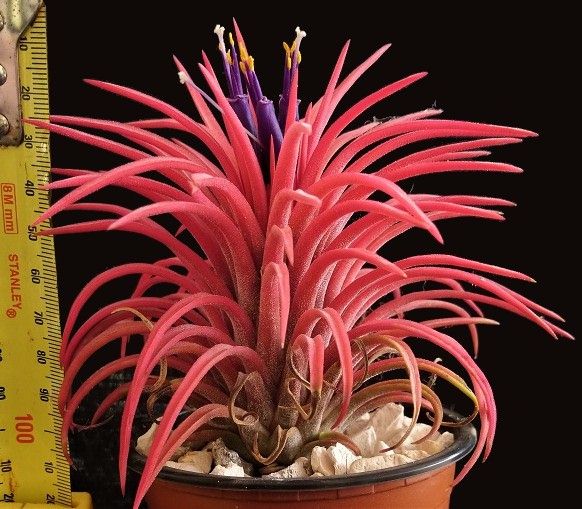

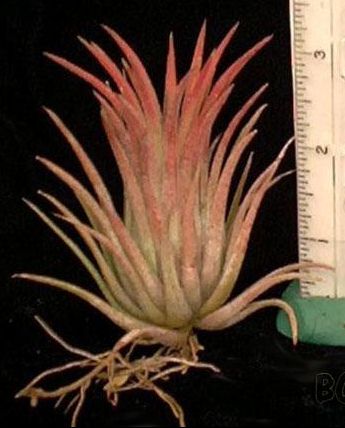
BCR=#14751 |
BCR=#15487, photo: Steve Molnar (sometimes as "Big Boy") |
BCR=#15487, photo: Jerry Domingo |
BCR=#8297 |
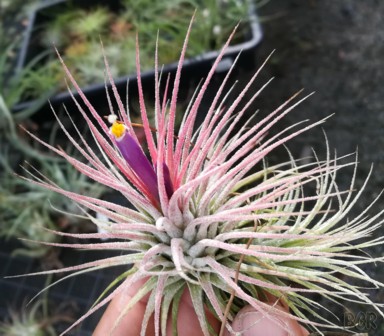
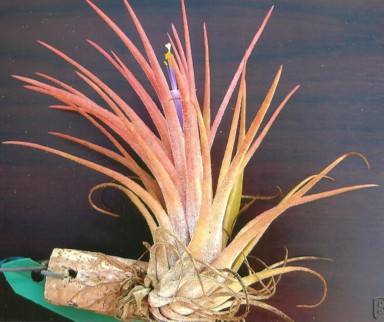

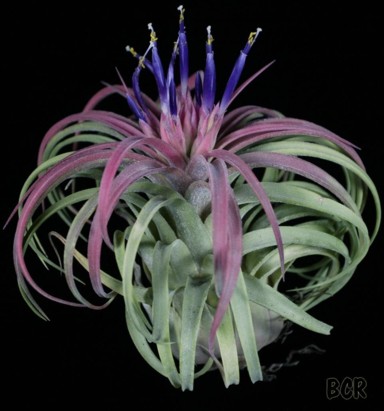
BCR=#14151, photo: Woody Kaotun |
BCR=#11054, photo: Bill Timm |
BCR=#10948, photo: Dennis Cathcart |
BCR=#10943, photo: Dennis Cathcart |
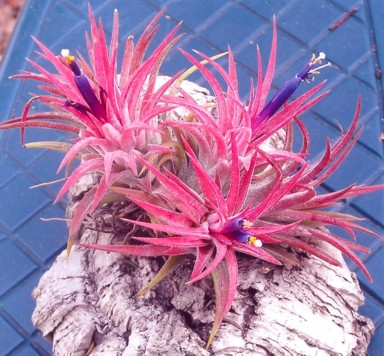
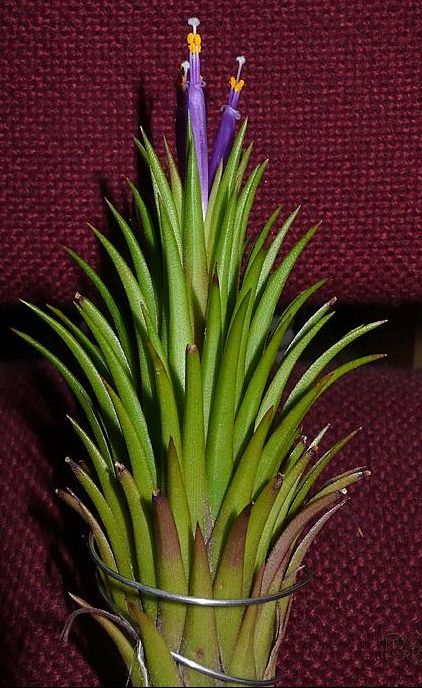
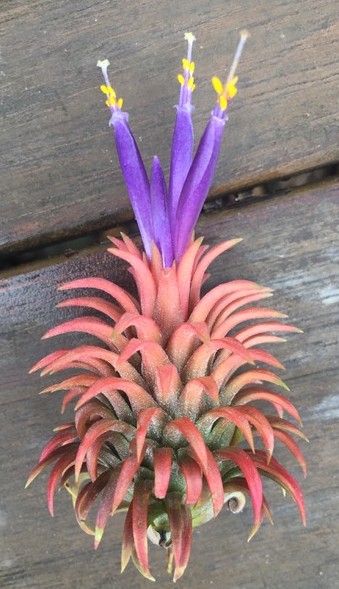
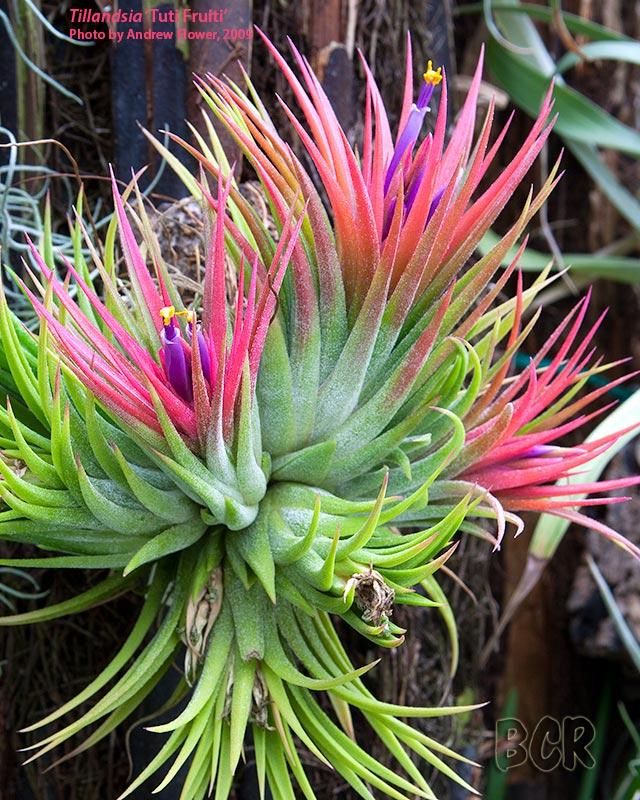
BCR=#8308, photo: S. Littlefield |
BCR=#10145, photo: Benedict Tay |
BCR=#13815, photo: Andrew Flower |
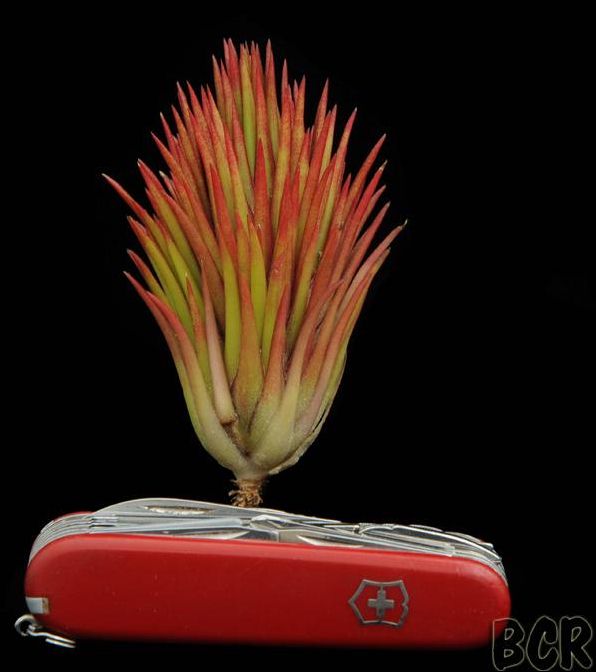


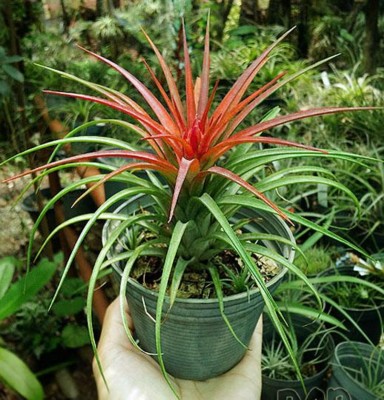
BCR=#12642, photo: Paul Isley |
BCR=#14630, photo: Woody Kaotun |
BCR=#14818, photo: Woody Kaotun |
BCR=#13274, photo: Seth Charoenwong |

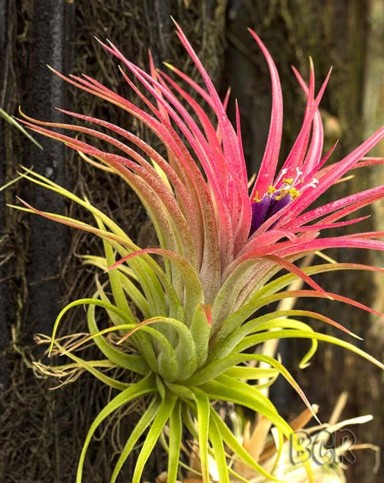
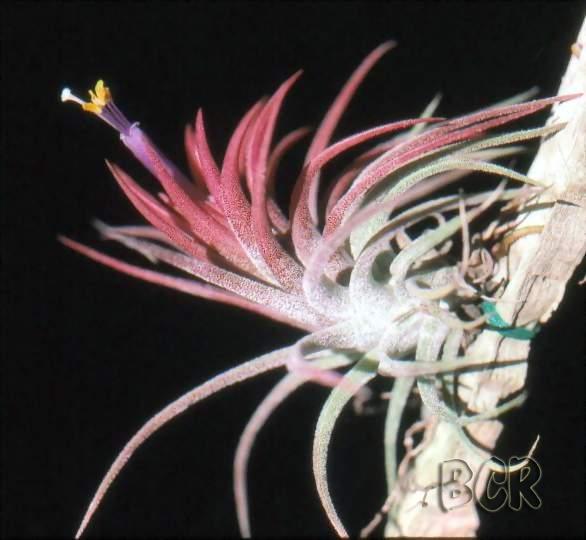
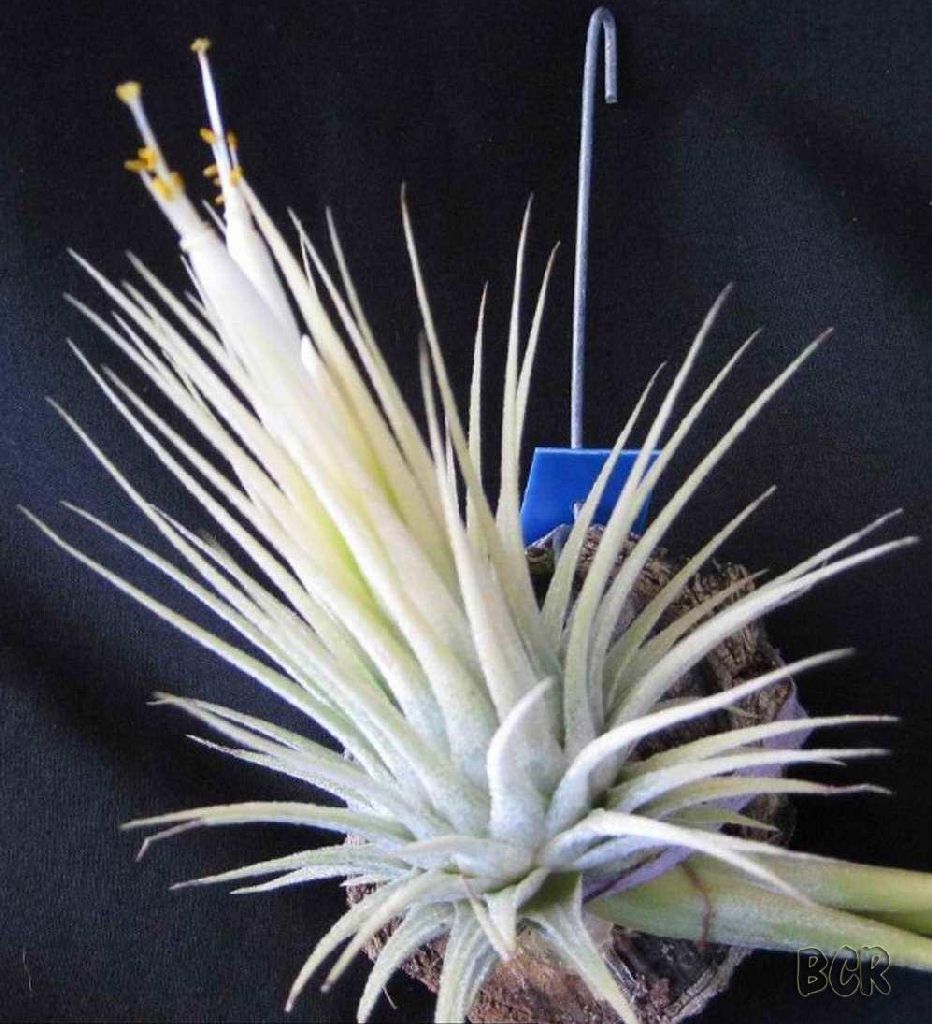
BCR=#8325, photo: Pachara Orchids |
BCR=#11787, photo: Andrew Flower |
BCR=#8328, photo: Bill Timm |
BCR=#13932, photo: Bob Hudson |
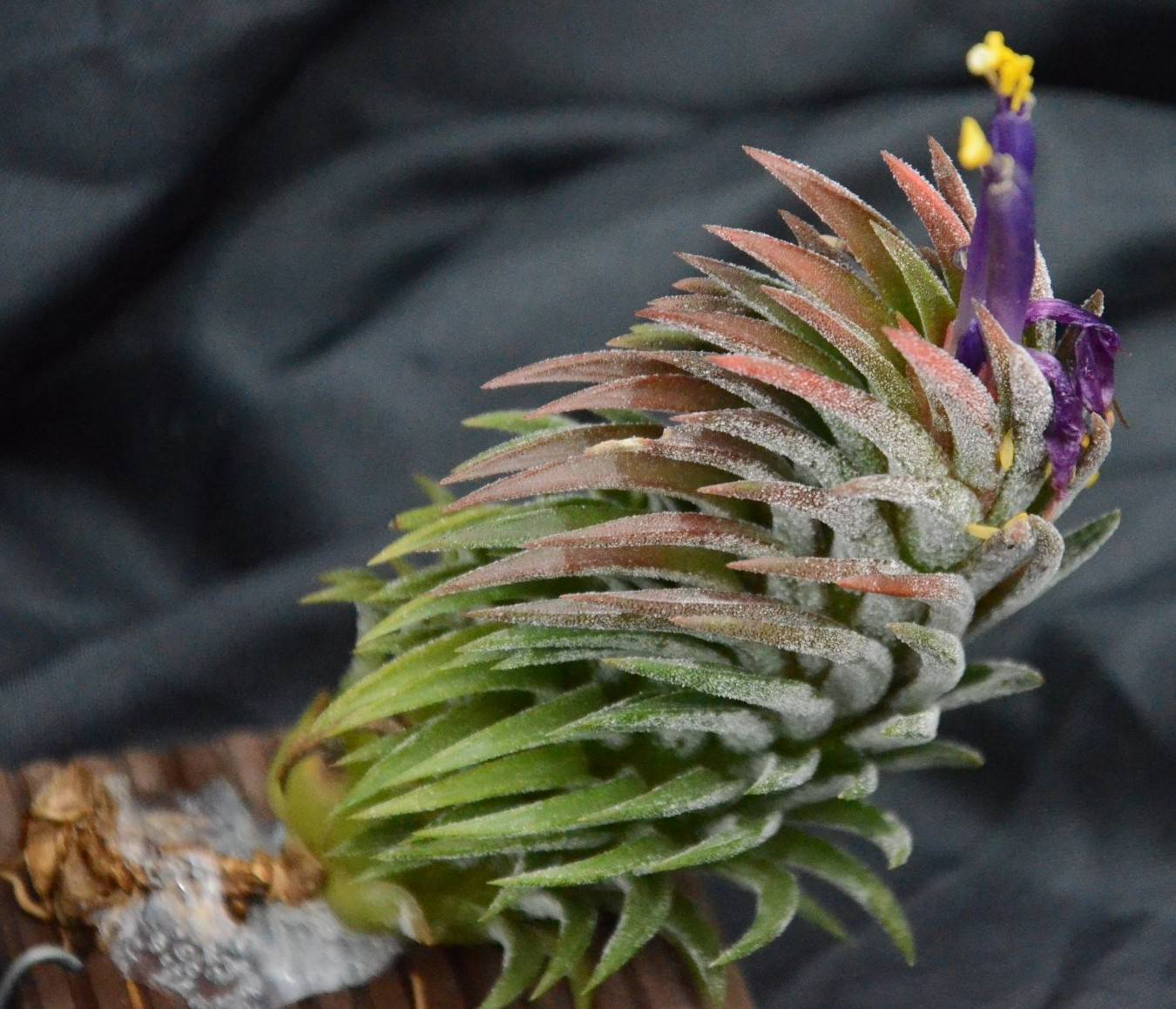

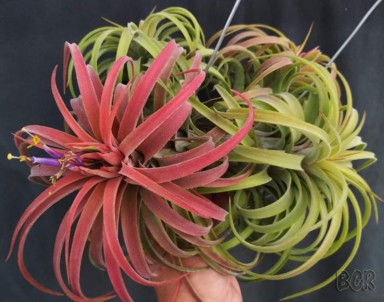
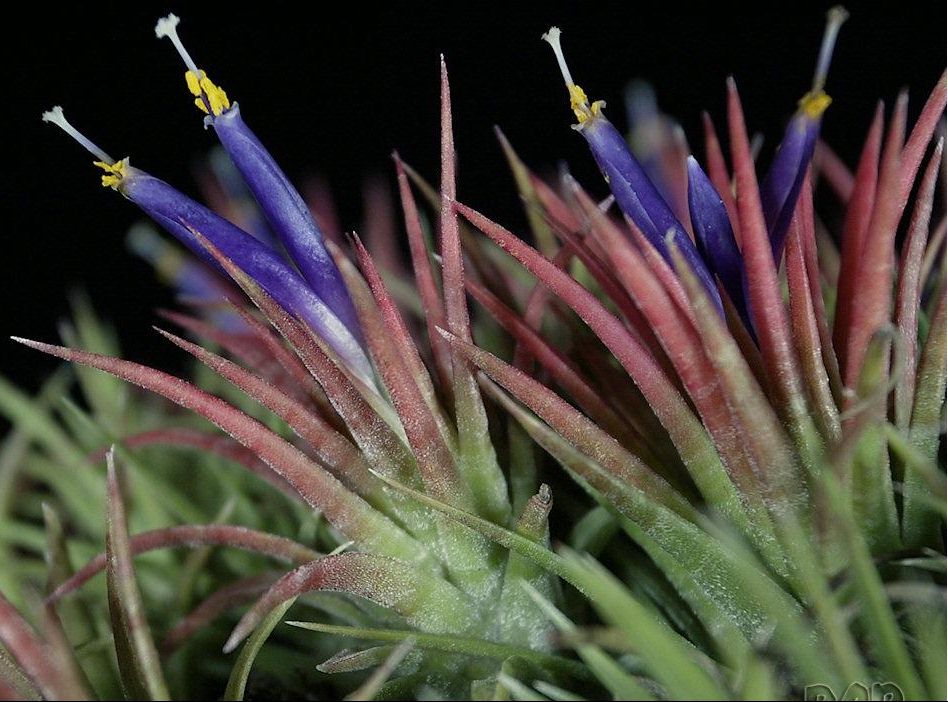
Unregistered in 01/22, photo: James Lester, Australia |
BCR=#16621, photo: Yu Mu |
BCR=#16646, photo: Shen Ming Liu |
BCR=#8340, photo: Dennis Cathcart as 'Zebrina Mex' |
Tillandsia ionantha; Its Varieties, Forms, and Cultivars by Pamela Koide in J. Brom.Soc. 43: 160-3. 1993
Tillandsia ionantha is one of the most common and interesting species of the genus Tillandsia. One of the most delightful of the miniatures, its tufting, silvery rosette reaches only 1½ to 4 inches in height. The leaves, covered with silvery scales, are seldom over 2 inches long. It is rather easy to grow and adapts well to our outdoor southern California climate. If left to grow into a cluster, this species will form a large ball in a very short time. Some people have grown these clumps to the size of a basketball, a spectacle when the whole cluster blushes red at bloom time. The common name for this species is "Blushing Bride," referring to the red blush during anthesis. Although several forms and varieties are available to the collector, there are only two varieties recognized in Harry Luther's AN ALPHABETICAL LIST OF BROMELIAD BINOMIALS, but three in Lloyd Kiff's A DISTRIBUTIONAL CHECK-LIST OF THE GENUS TILLANDSIA. Descriptions of the varieties, forms, and cultivars follow:
Tillandsia ionantha var. ionantha is the most common and available variety. It was described in 1855 by Jules Emile Planchon. This variety is the most widespread, growing from Mexico to Costa Rica at altitudes of 450 to 5,000 feet. It varies somewhat in appearance from country to country, as well as within each country. It grows in dense masses in moist forests, as well as on exposed deciduous trees and rocks in arid regions. It can vary from silvery color with thin leaves, to green and lush, with thick, succulent-type leaves. When it starts to flower, the entire plant turns a brilliant rosy red. The narrow, tubular flowers are large for the size of the plant, topping the foliage by 1 to 1 ½ inches. The petals are vivid purple.
Tillandsia ionantha var. vanhyningii was described by Mulford Foster in 1957. It is endemic to one region in the state of Chiapas in southern Mexico. It is lithophytic, growing on vertical limestone cliffs overhanging Rio Grijalva. This variety is caulescent (with distinct stems). The leaf color is a silvery pale green to white. In habitat, it produces large mats of rosettes. When the plant blooms, the foliage will flush bright pink, and produce the same vivid purple flowers as variety ionantha. Pups emerge from the base of the old mature leaves to form new leads. As this species is geographically isolated and morphologically and ecologically distinct, it fits Luther's criteria of a subspecies.
Tillandsia ionantha var. zebrina, the third variety listed in Kiff's book, was described by Bert Foster in 1982. Harry Luther thinks that this should be considered a form and not a true botanical variety. It was collected in Guatemala and differs from the typical species in its beautifully banded leaf blades.
Tillandsia ionantha var. scaposa is the synonym of the species Tillandsia kolbii. T. kolbii was described by Walter Till and Stefan Schatzl, in 1981. The species has little in common morphologically with the species T. ionantha. It occurs at much higher elevations in pine-oak cloud forests. It is characterized by a scapose, occasionally compound inflorescence. Although the type locality is Oaxaca, Mexico, it is found most commonly in Guatemala.
Tillandsia ionantha `Druid' was introduced in 1984. This is a Mexican variation of T. ionantha var. ionantha that appears normal until it blooms. It then turns an unusual yellow color and produces flowers with white petals. I have seen numerous examples of this phenomenon in the genus Tillandsia and have always considered them to represent an albino form. Every generation of offsets continues to produce the same colorless inflorescence and flowers, indicating a fixed genetic trait.
T. ionantha `Rosita', `Peanut', and `Apretado' are cultivars mentioned in Paul Isley's book TILLANDSIA. The plant referred to as `Rosita' is the same as T. ionantha "Stricta," so called by several commercial tillandsia nurseries. This variation is endemic to one region in Oaxaca, Mexico. It is an isolated population found growing on oak trees at approximately 6500 feet elevation with T. fuchsii var. fuchsii. Other plants growing in the vicinity are the peach form of T. capitata, T. fasciculata, T. leucolepis, and the orchid Epidendrum parkinsonianum. It is red during its entire life, and has very narrow, nearly filiform leaf blades. During anthesis, it turns a brighter, brilliant red, and the flower petals are purple. I consider this a distinct variety and propose the name T. ionantha var. stricta.
T. ionantha var. stricta hort. ex Koide, var. nov.
A typo T. ionantha Planchon sed cui similis foliis pertenuibus et perpetuo rubris differt.
Type: Mexico: Oaxaca; 6 km east of El Camaron, elev. ca.. 2000 m. Epiphytic on Quercus sp. Koide & Schuster s.n. legit., April 1982. Flowered in cultivation, P. Koide s.n. (SEL, holotype; US, MEXU, isotypes).
T. ionantha `Peanut' is actually a form of the above-mentioned variety. It grows within the population of T. ionantha var. stricta and appears rather randomly. It, too, is red throughout its life, but morphologically different. Instead of growing onto an open rosette, its leaves stay erect, close together, and very tight. This characteristic is continued in offspring as well as in young seedlings. On account of its distinctive growth habit it is described below as forma fastigiata. According to H. Luther a "forma" is used to designate biologically trivial variations of a species that occur sporadically within a natural population. If these variants occur in a cultivated population, they should be designated a cultivar.
T. ionantha var. stricta forma fastigiata, Koide, forma nov.
A typo T. ionantha var. stricta Koide sed cui similis foliis fastigiatis differt.
Type: Mexico: Oaxaca; 6 km east of El Camaron, elev. ca.. 2000 m. Epiphytic on Quercus sp., growing intermingled with typical T. ionantha var. stricta, Koide & Schuster s.n. legit., April 1982.
Flowered in cultivation, P. Koide s.n. (SEL, holotype; US, MEXU, isotypes).
The last named, `Apretado' ; appears to be a variation of the Mexican T. ionantha var. ionantha. I have on occasion, found specimens of it growing in Mexico. They seem to grow larger than the typical species, and the leaves are succulent, slightly stiffer and more erect. They grow quite large as they are reluctant to bloom.
OTHER CULTIVARS
T. ionantha `Rubra'. This name is used to describe a cultivar sold by Guatemalan nurseries, It has semisucculent green leaves, which recurve from an open rosette. When it blooms it turns a light pink-rose color, and has purple flowers. I do not know the exact distribution of this plant.
T. ionantha `Fuego'. Another variation sold by Guatemalan nurseries, is red throughout its life, but differs from the Mexican T. ionantha var. stricta in that the leaf blades are somewhat stiffer and more upright. The rosette is closed. It has purple flowers.I do not know its distribution.
T. ionantha `Huamelula' was recently brought into cultivation from Mexico. It grows on lava rocks on the west coast of Oaxaca. The plants are very large in comparison to the typical species. A single specimen can be 3-4 inches in diameter. It has beautiful green leaves, forming a symmetrical rosette. During anthesis it turns a vivid pink-orange color, and produces large purple flowers.
T. ionantha `Peach' is a variation found near Taxco, Mexico. It is more typical of the species T. ionantha var. ionantha in size. The leaves are pale green until the plant blooms. Then they turn peach. The leaves are also softer than the typical species. It also produces purple flowers.
T. ionantha `Hand Grenade' is a very large form which resembles a hand grenade. According to Dennis Cathcart, this form is from Honduras and appears to have indeterminate growth. It is a sparse bloomer and occasionally will crest.
T. ionantha `Cone Head' - is another large cultivar. Its origin is not known to me.
To summarize, we can agree that the species Tillandsia ionantha is not only attractive but variable. As the species appearance changes, individuals have applied various names to distinguish one type from another and in so doing have created a nomenclatural nightmare. I hope that the names of these cultivars, varieties, and forms can be clarified before it becomes an impossible task.
